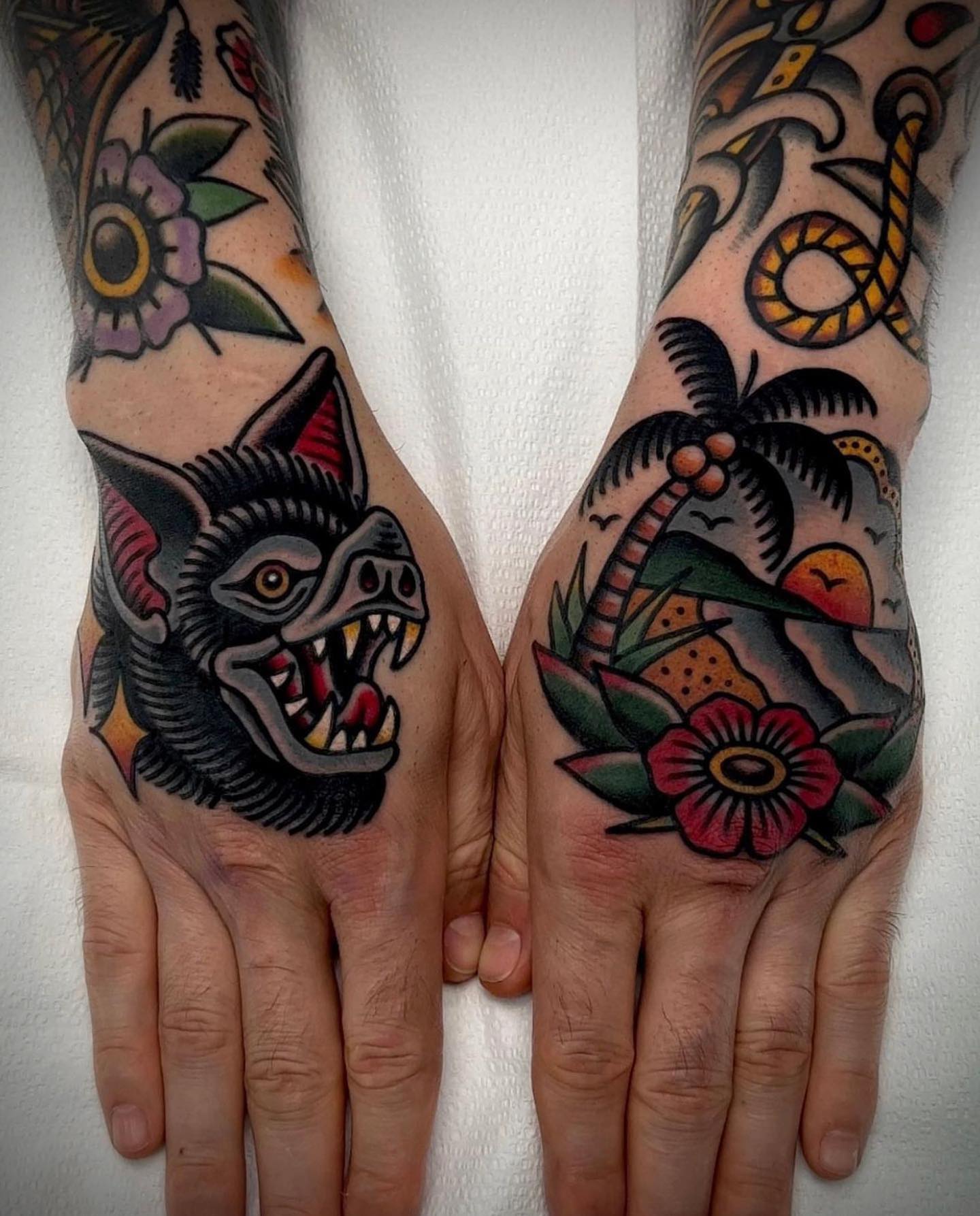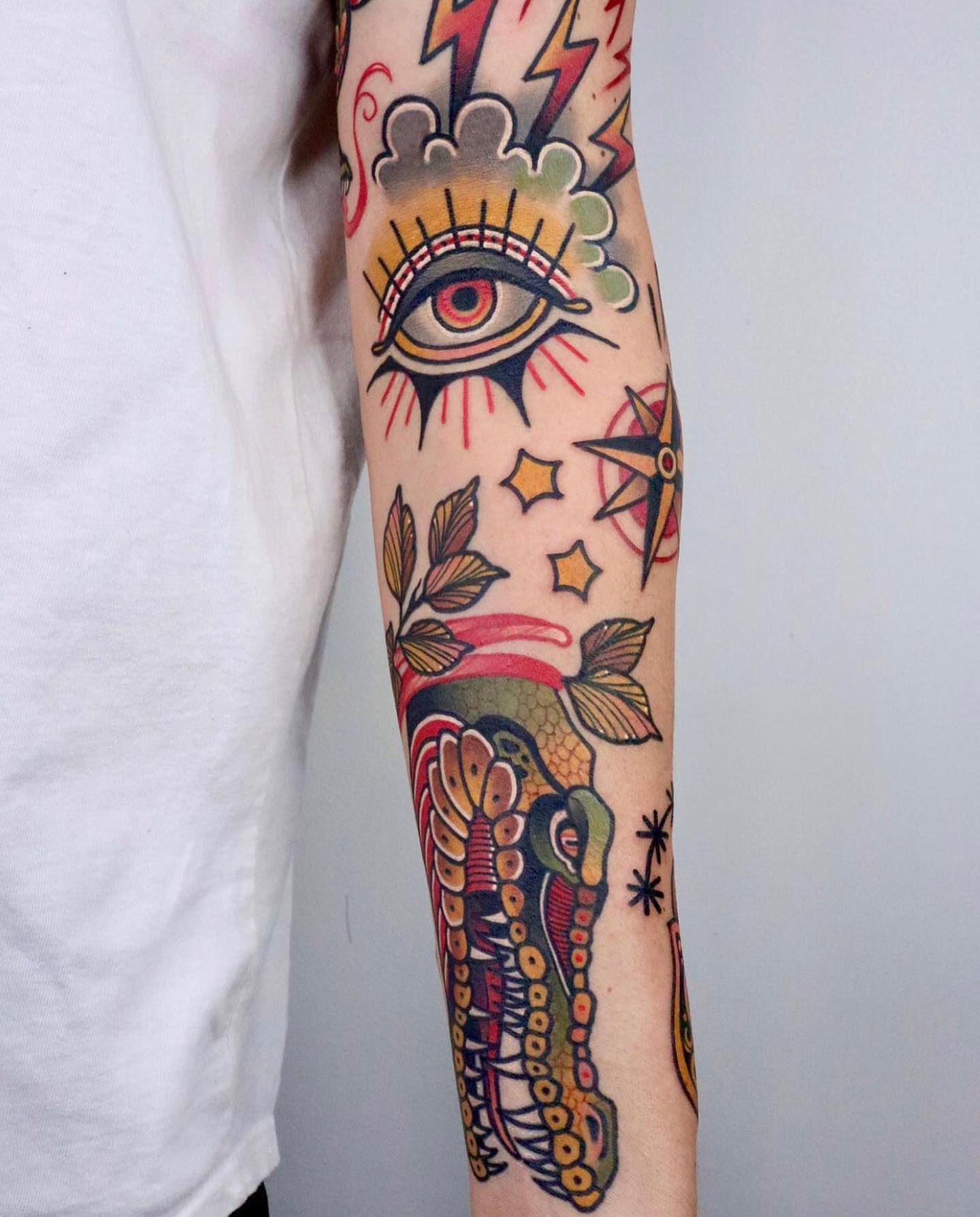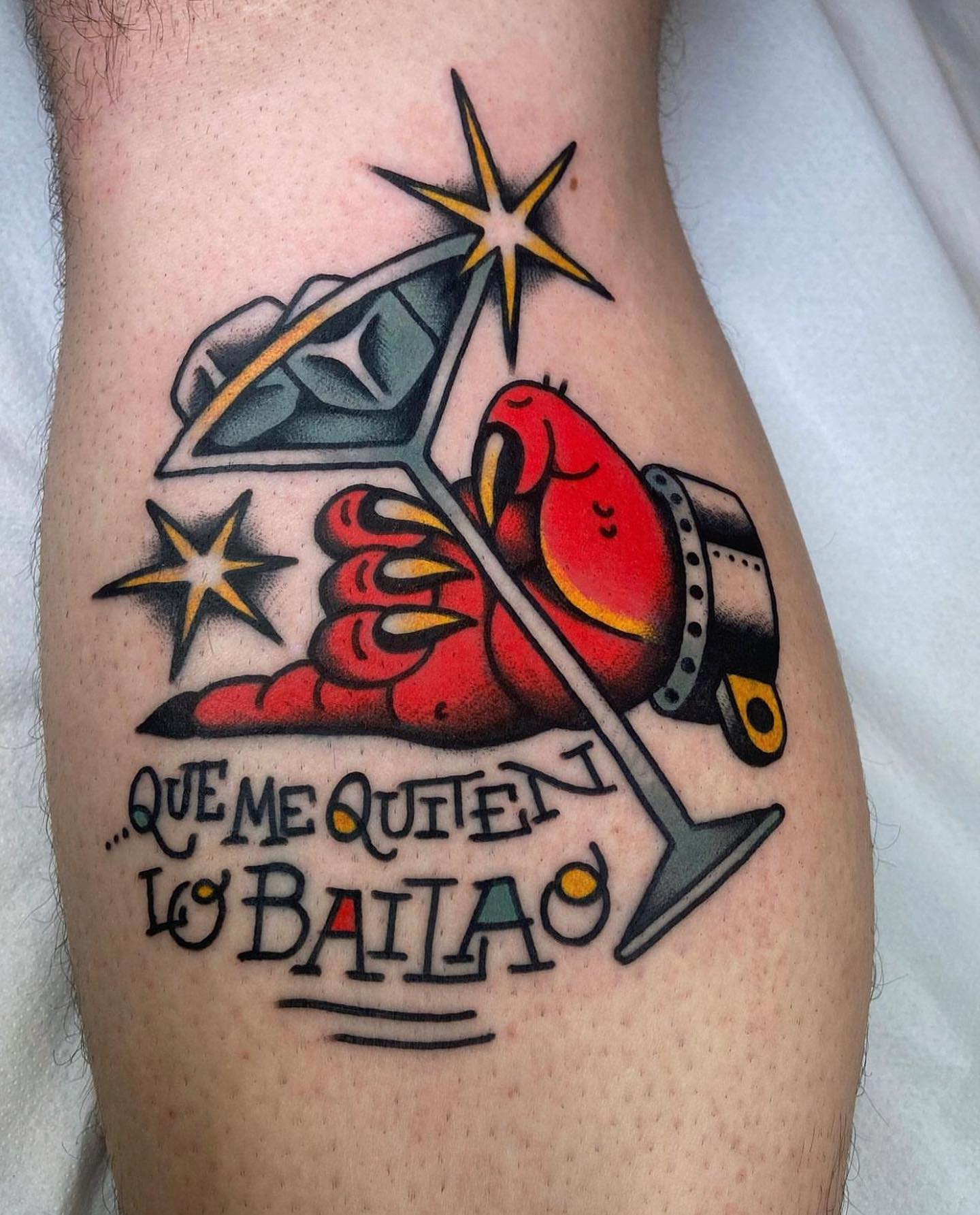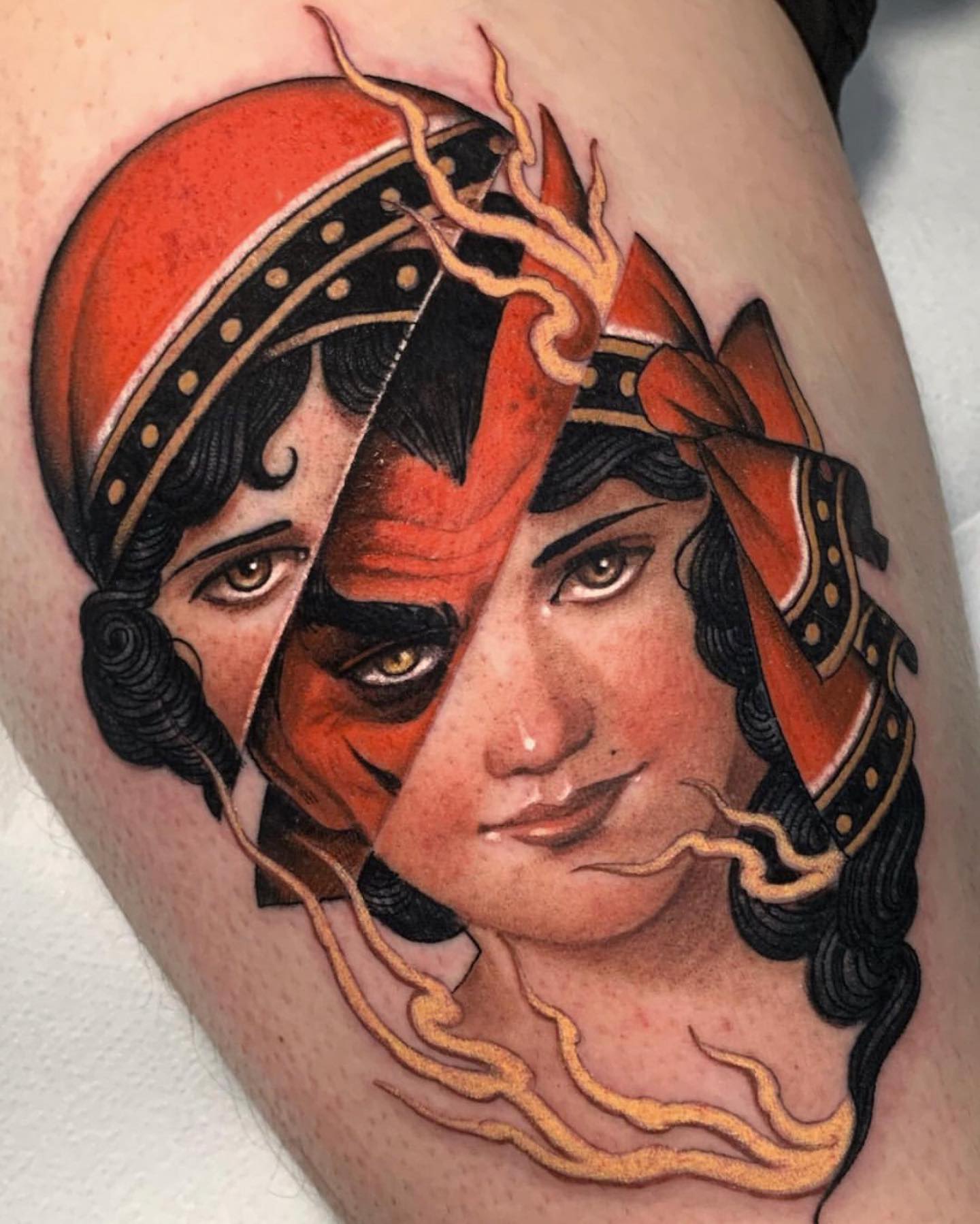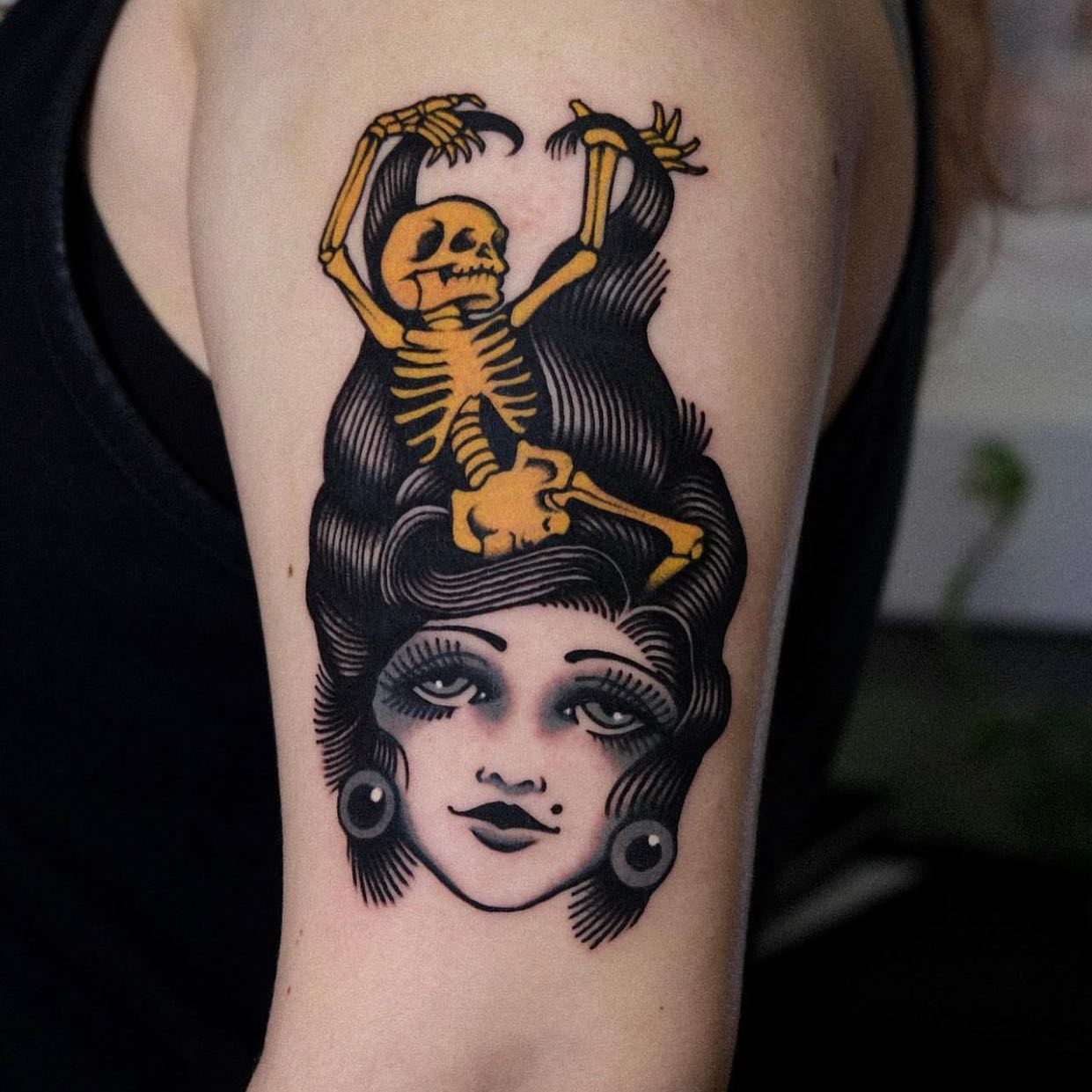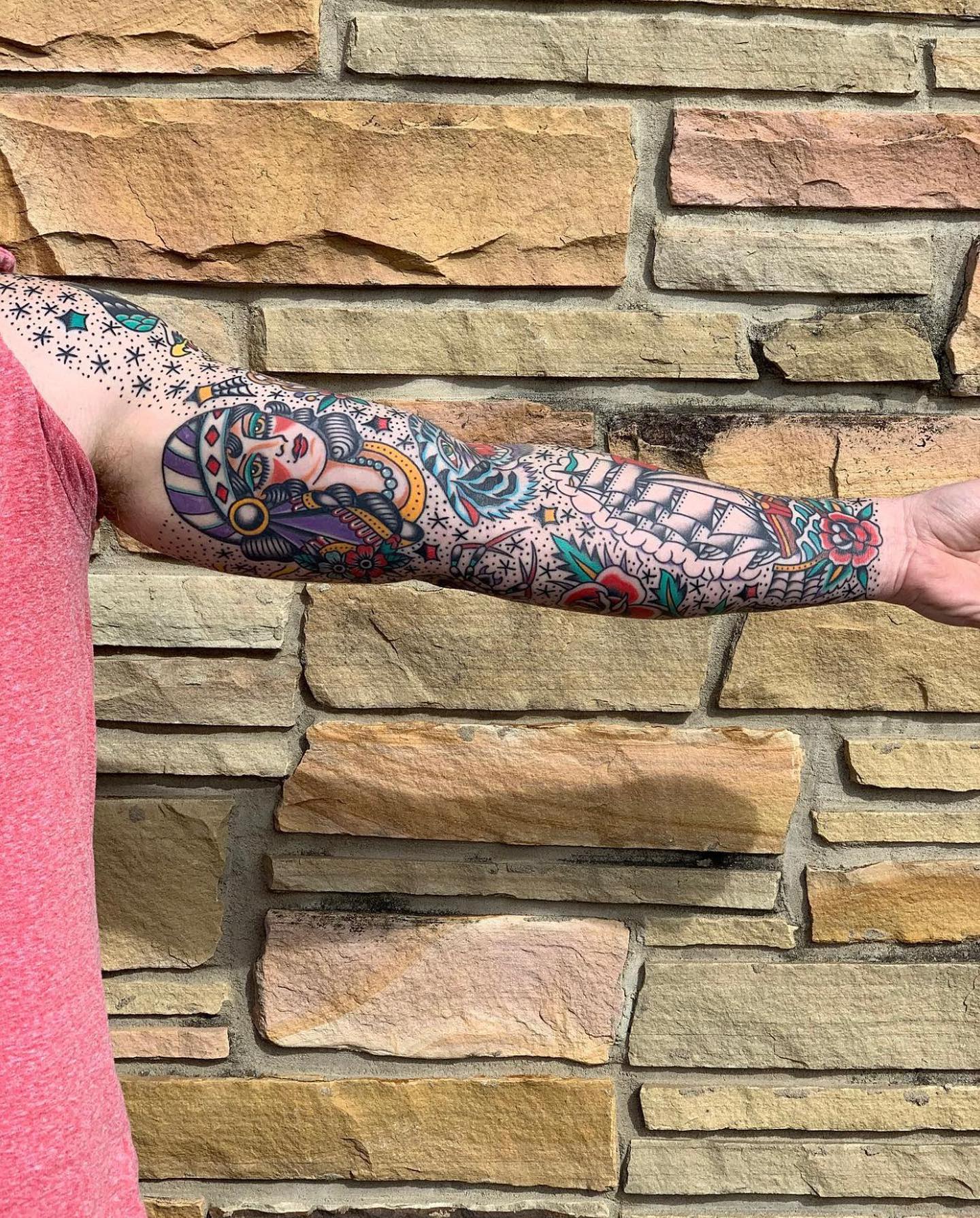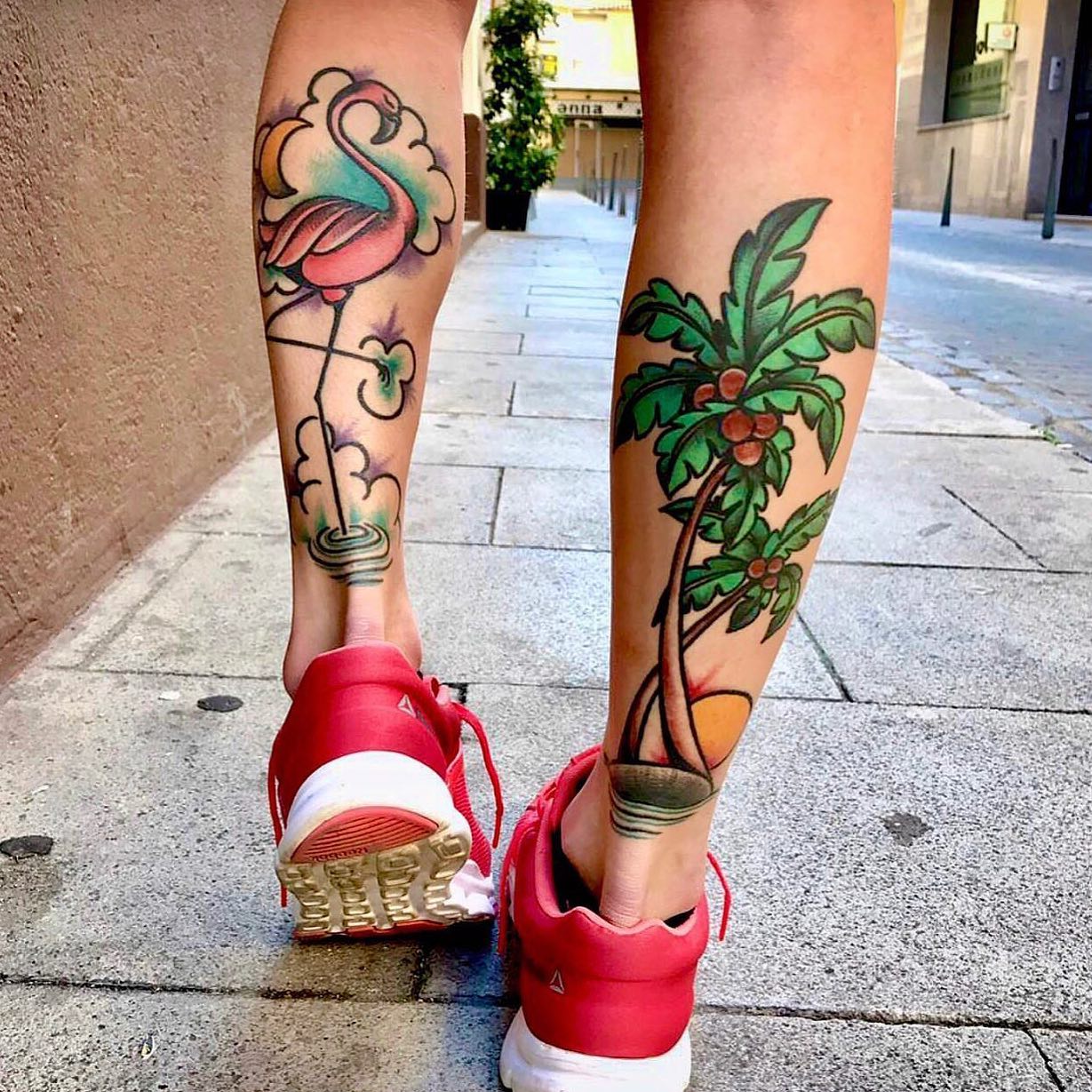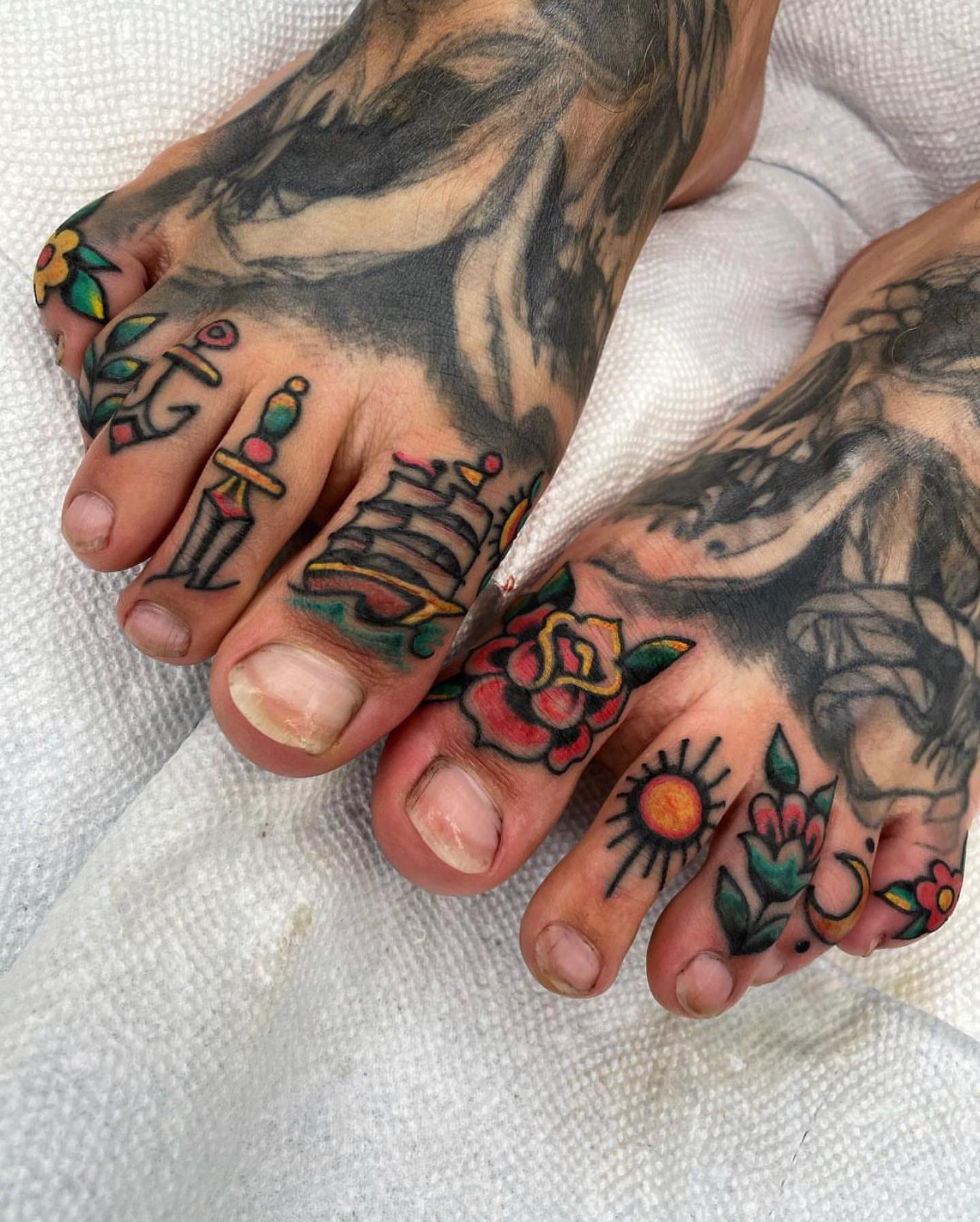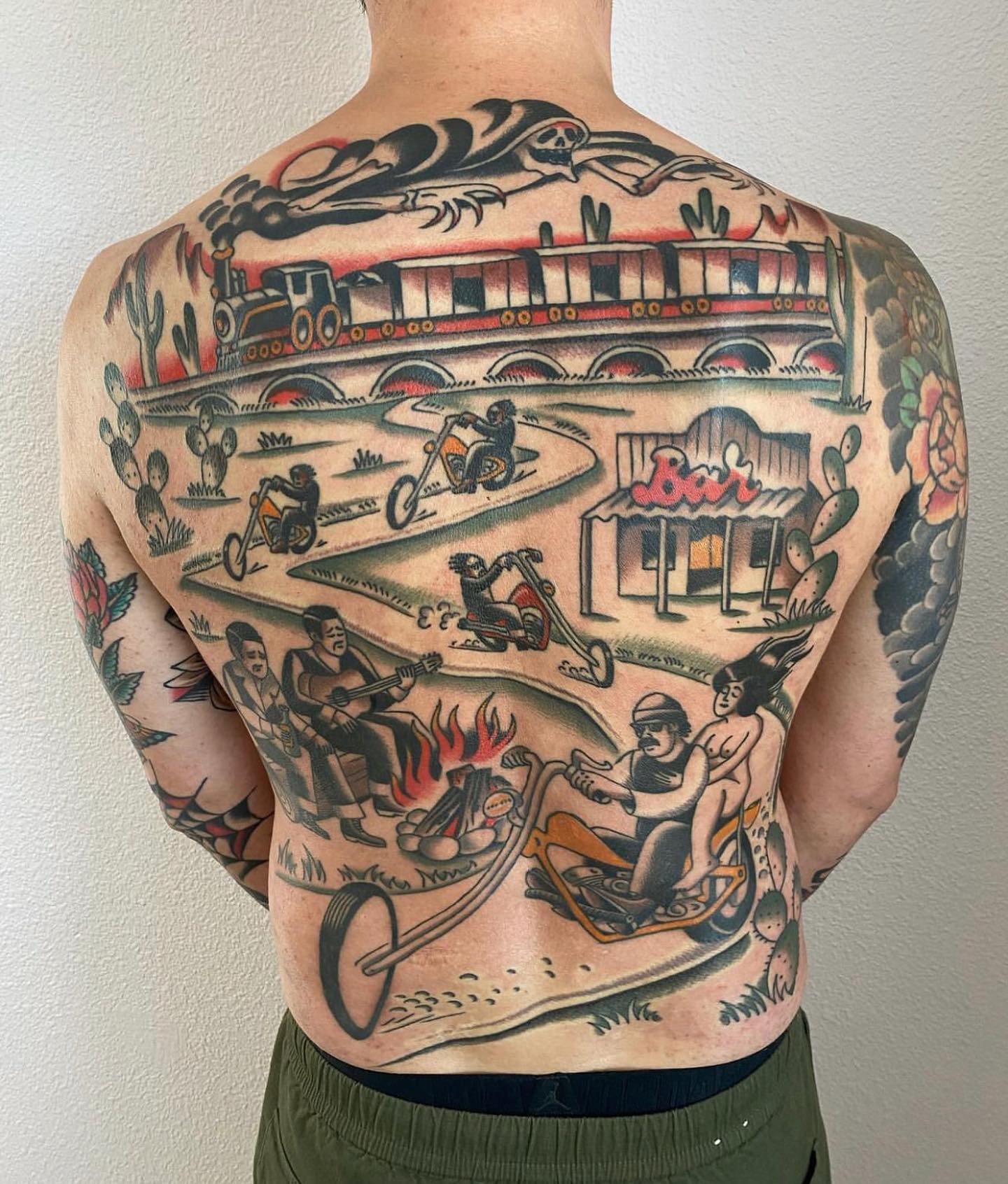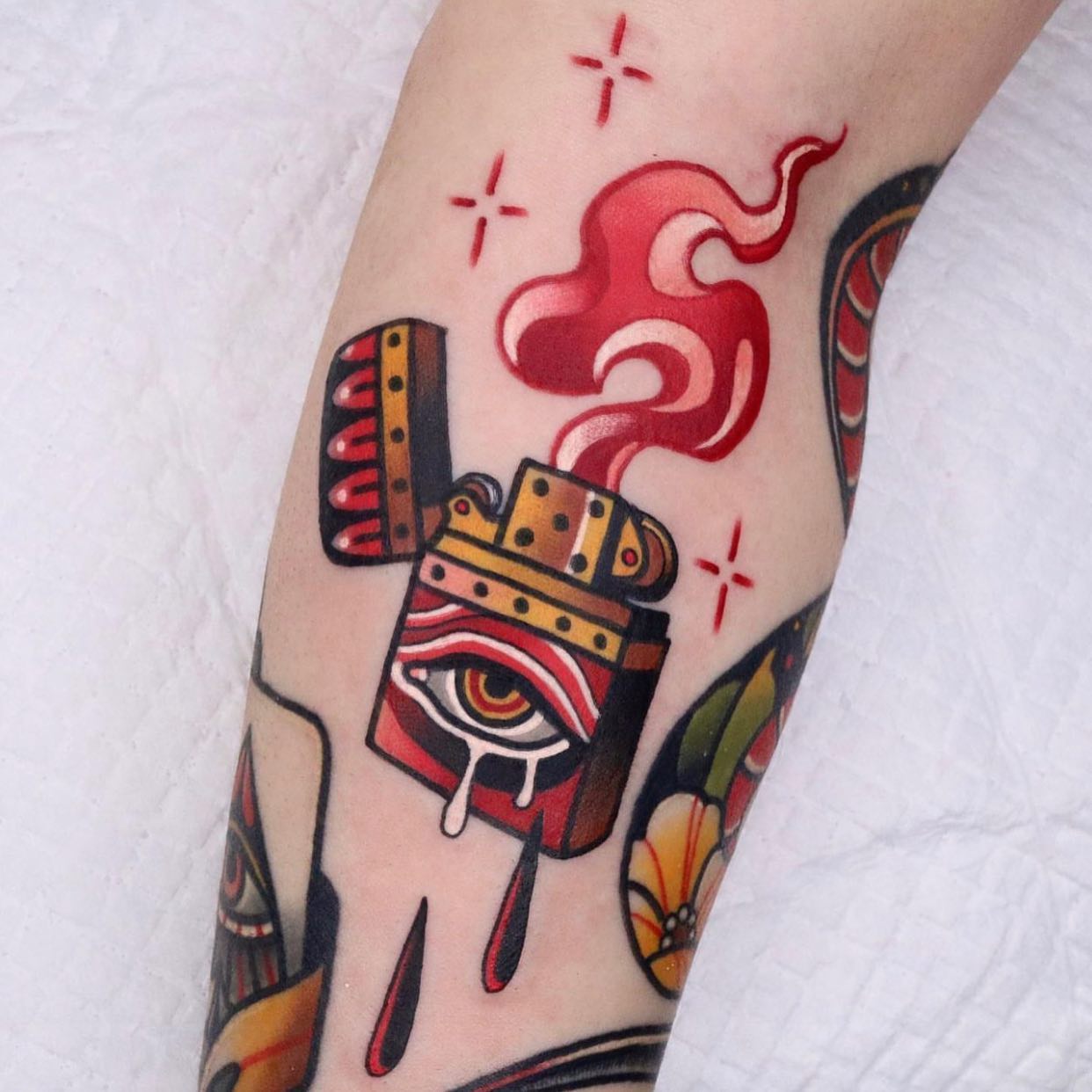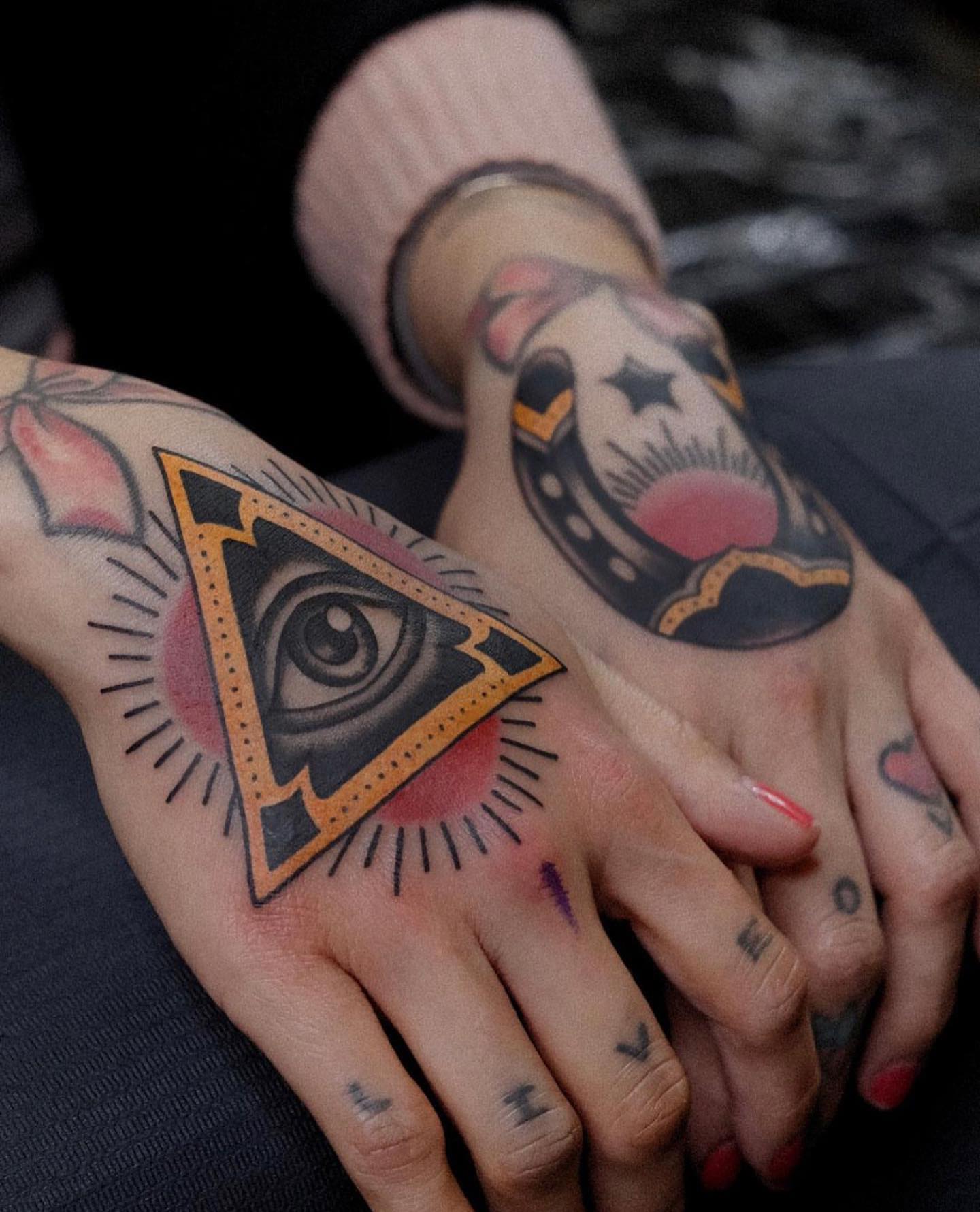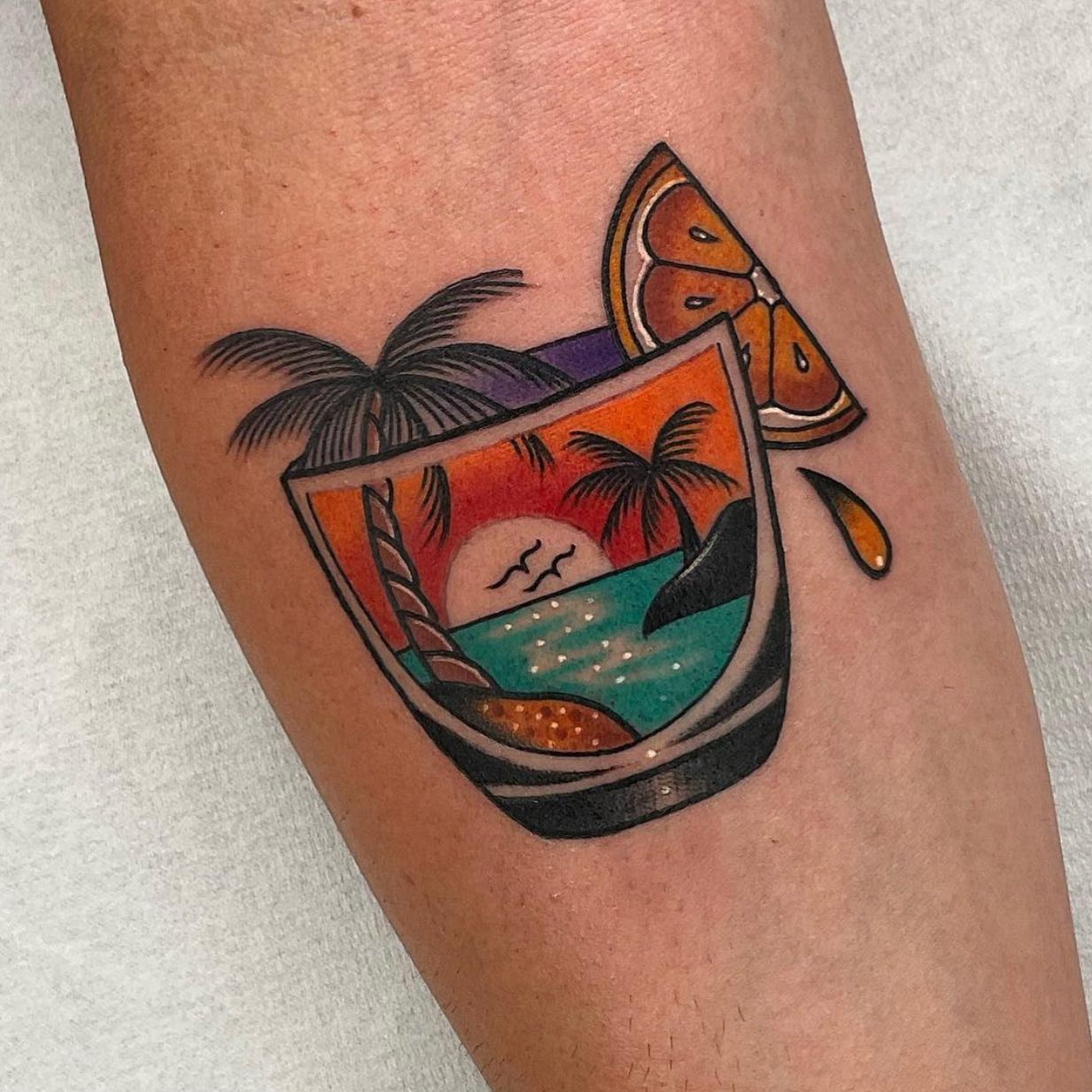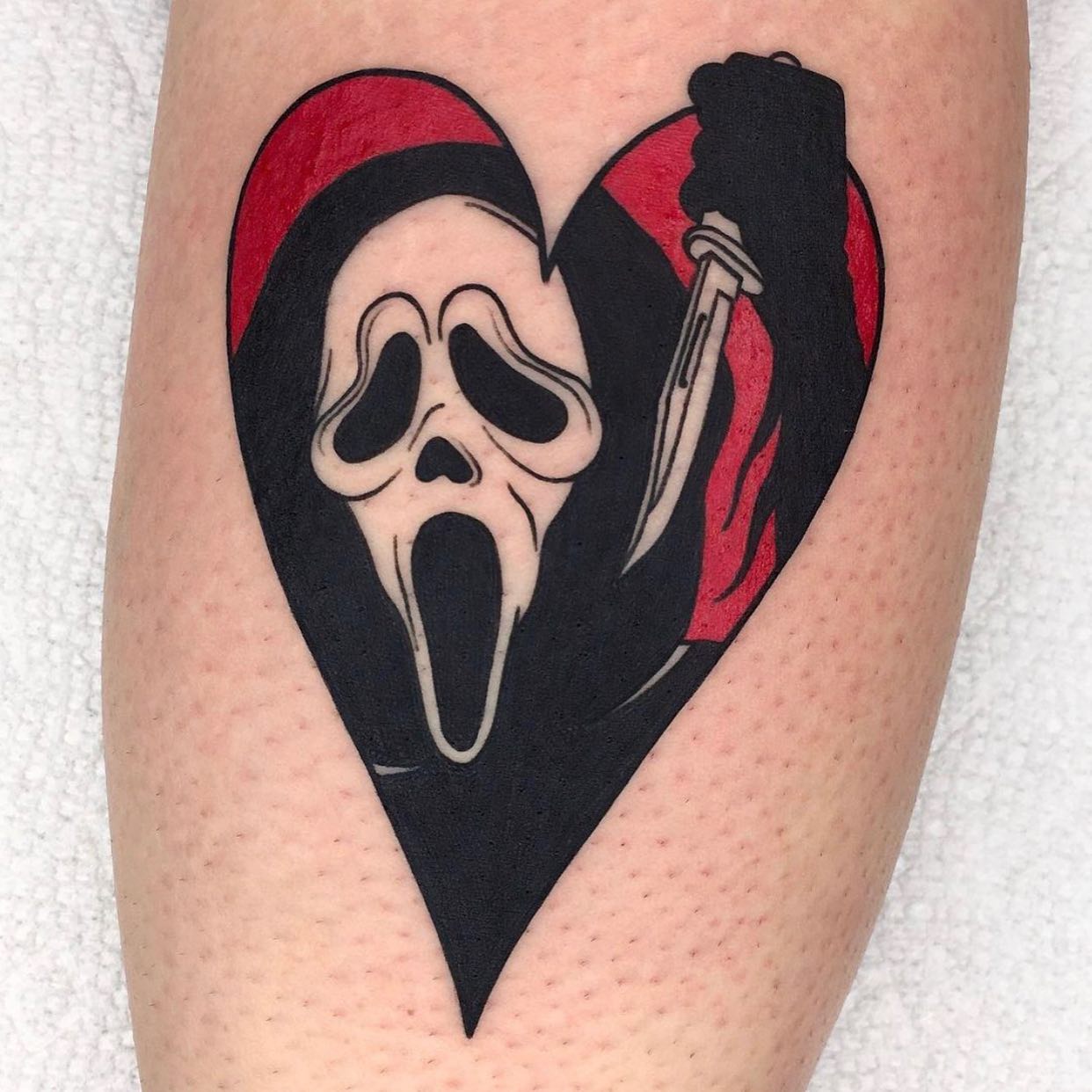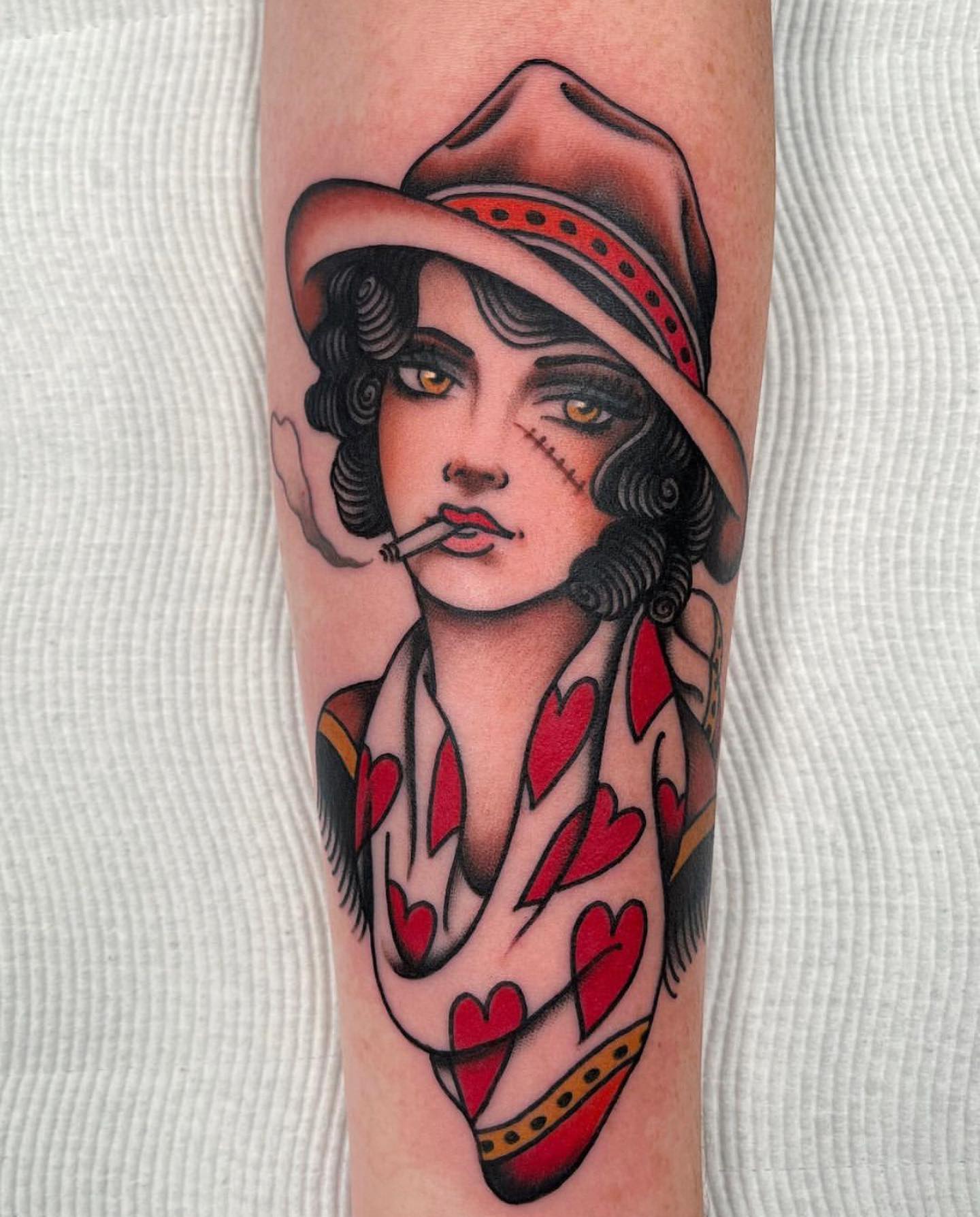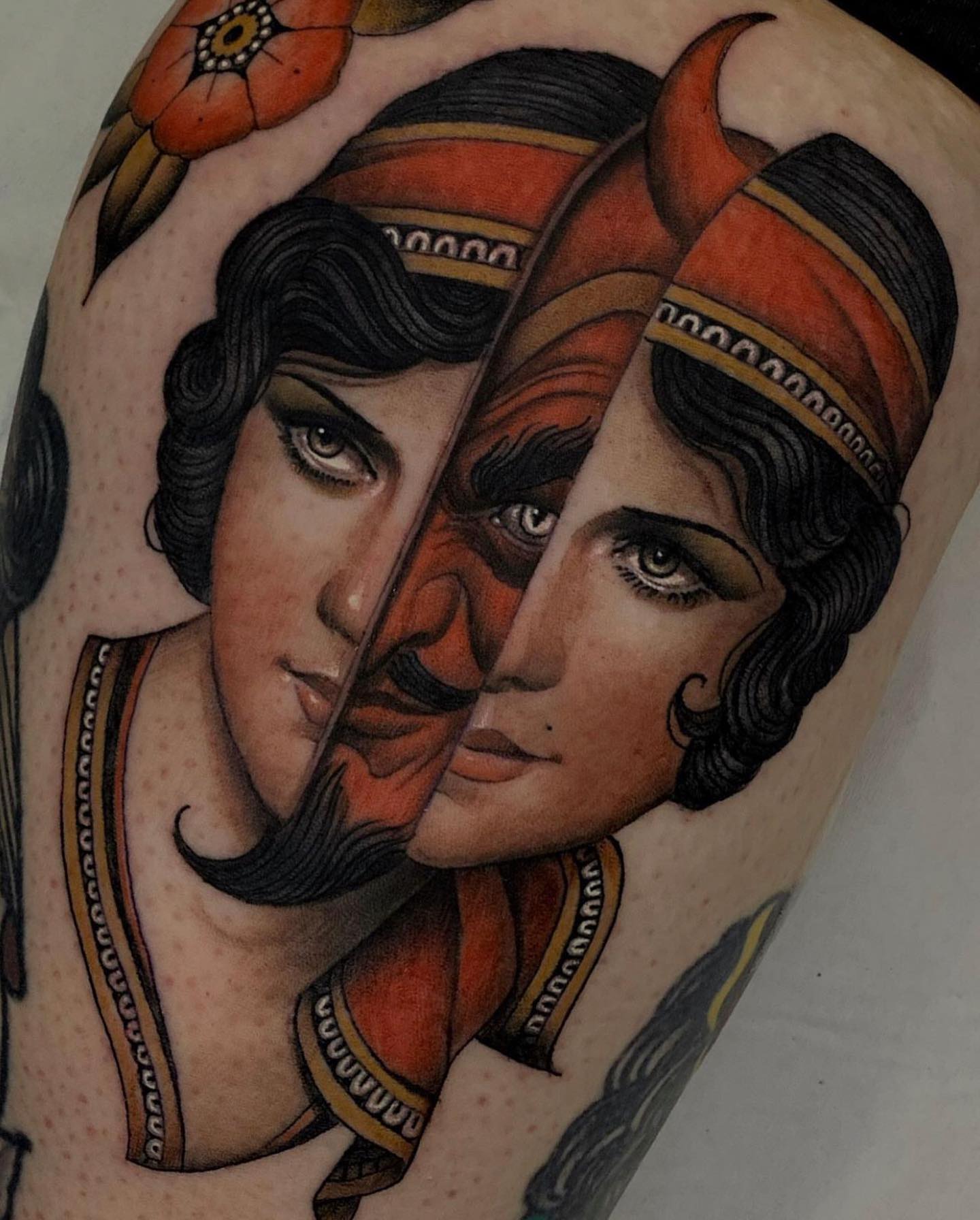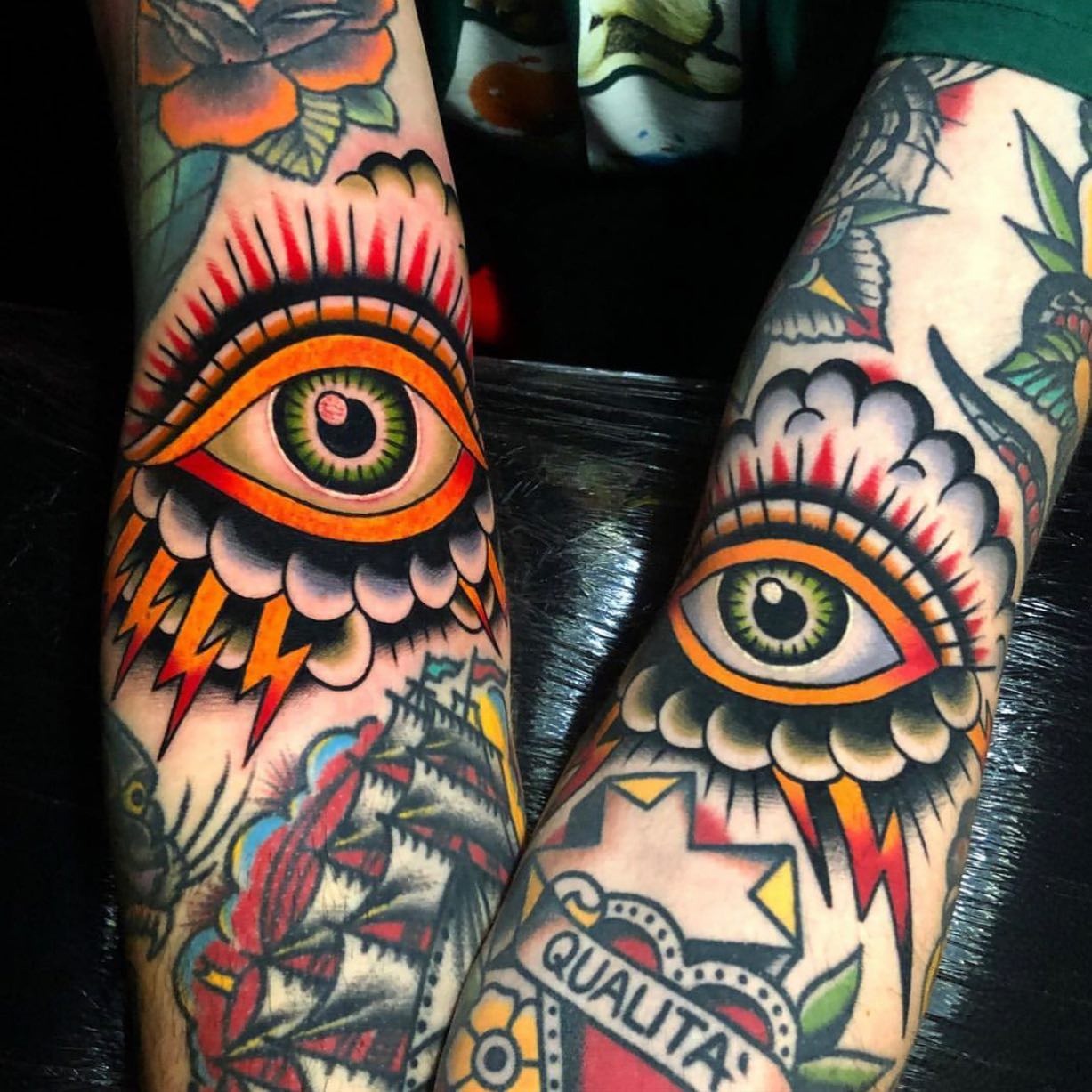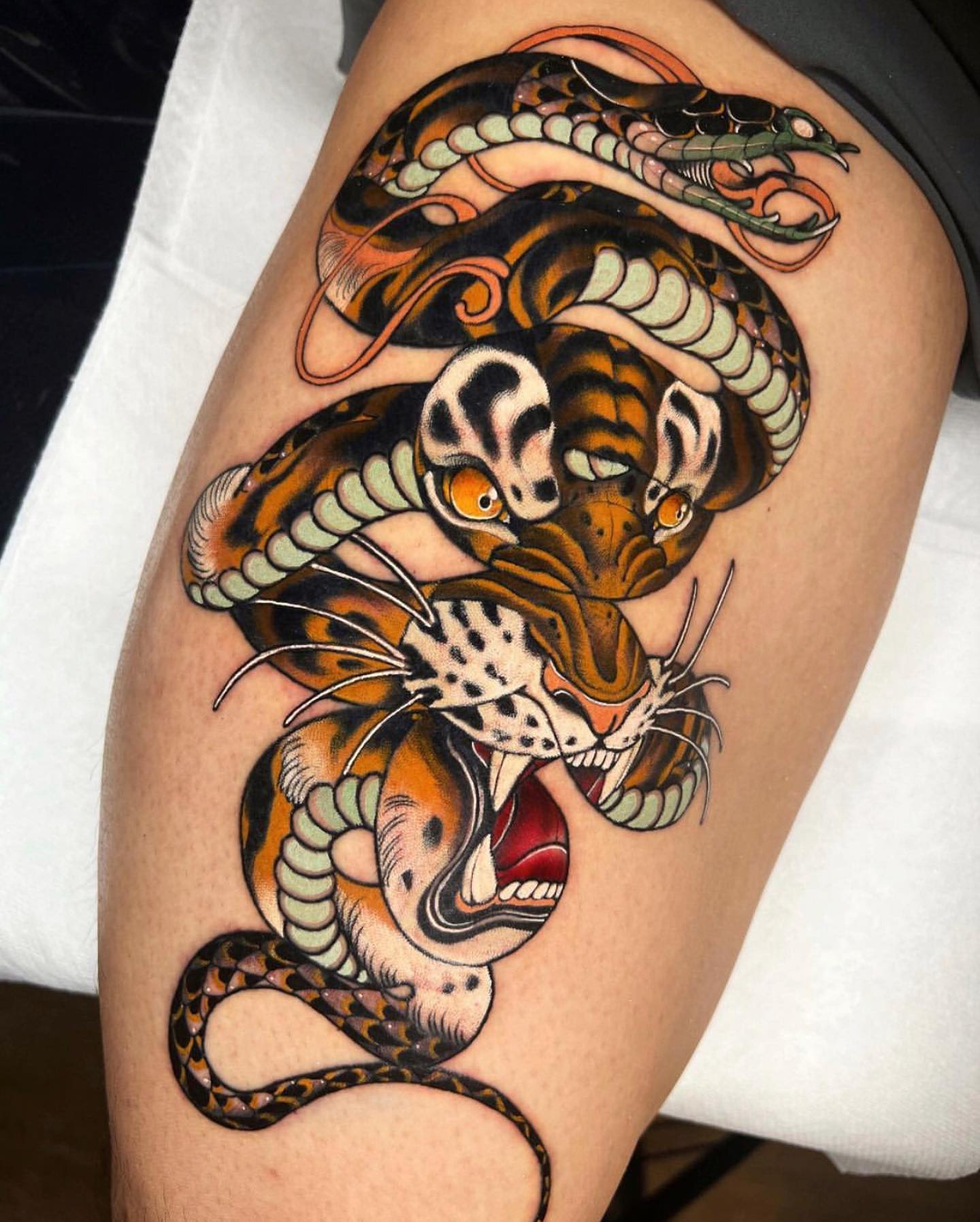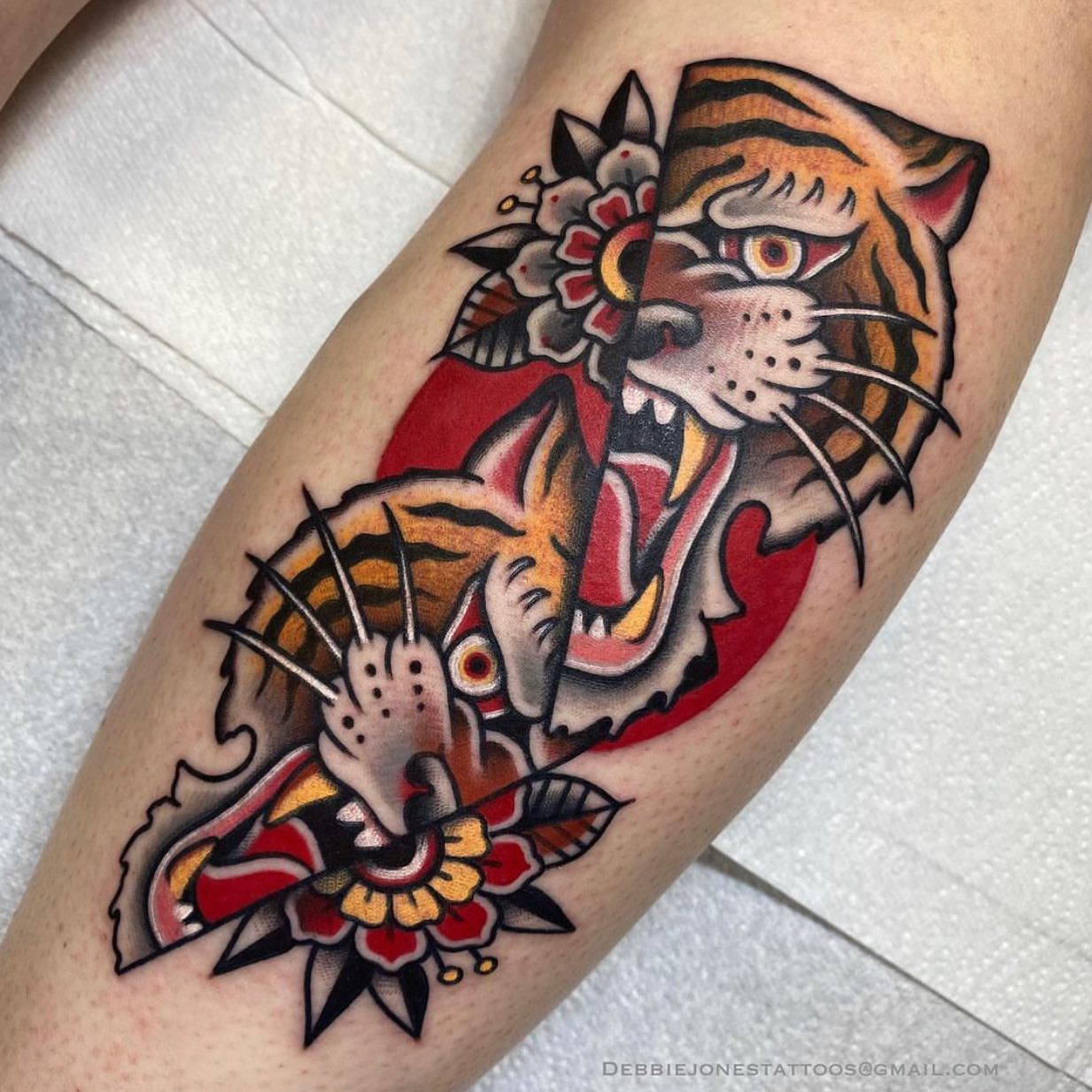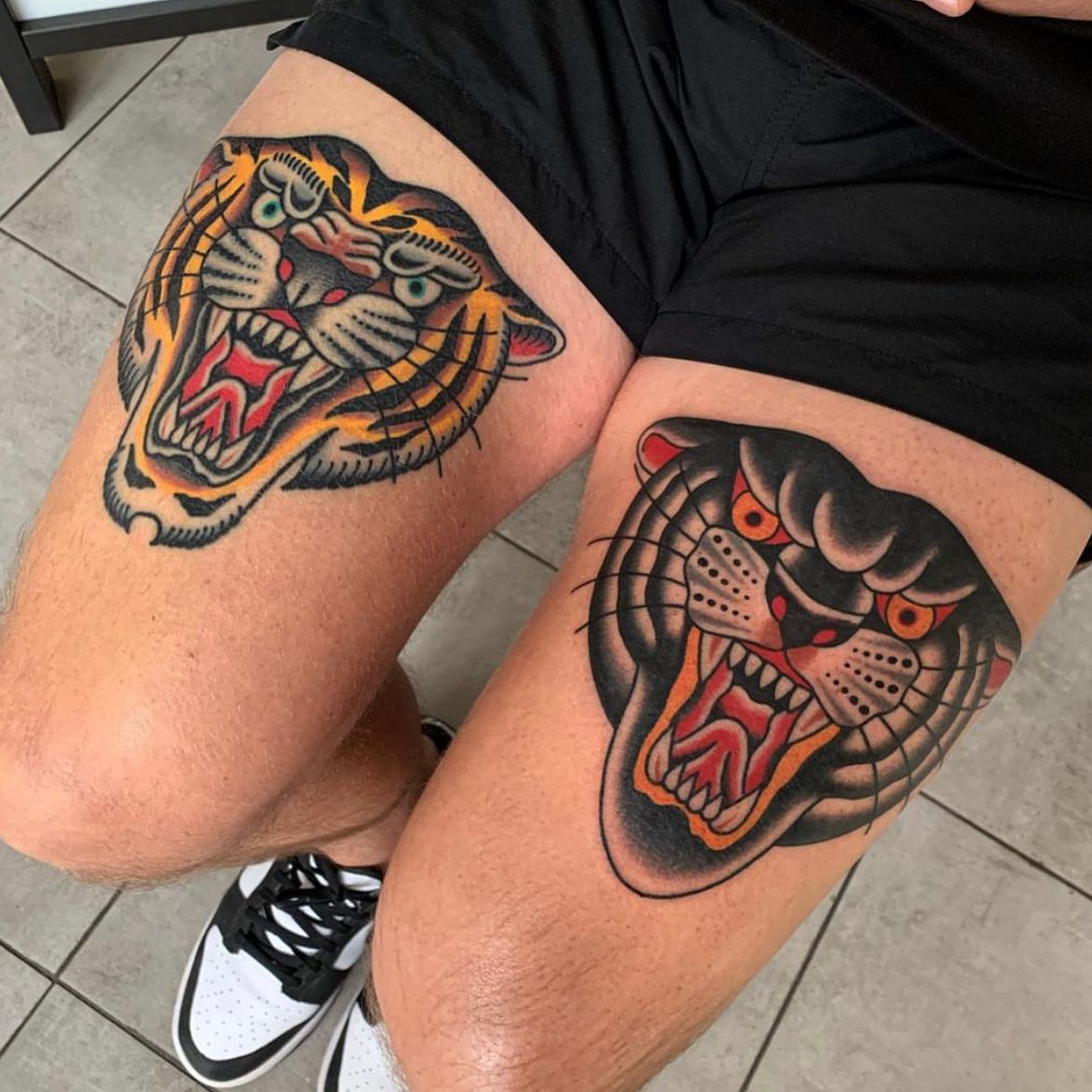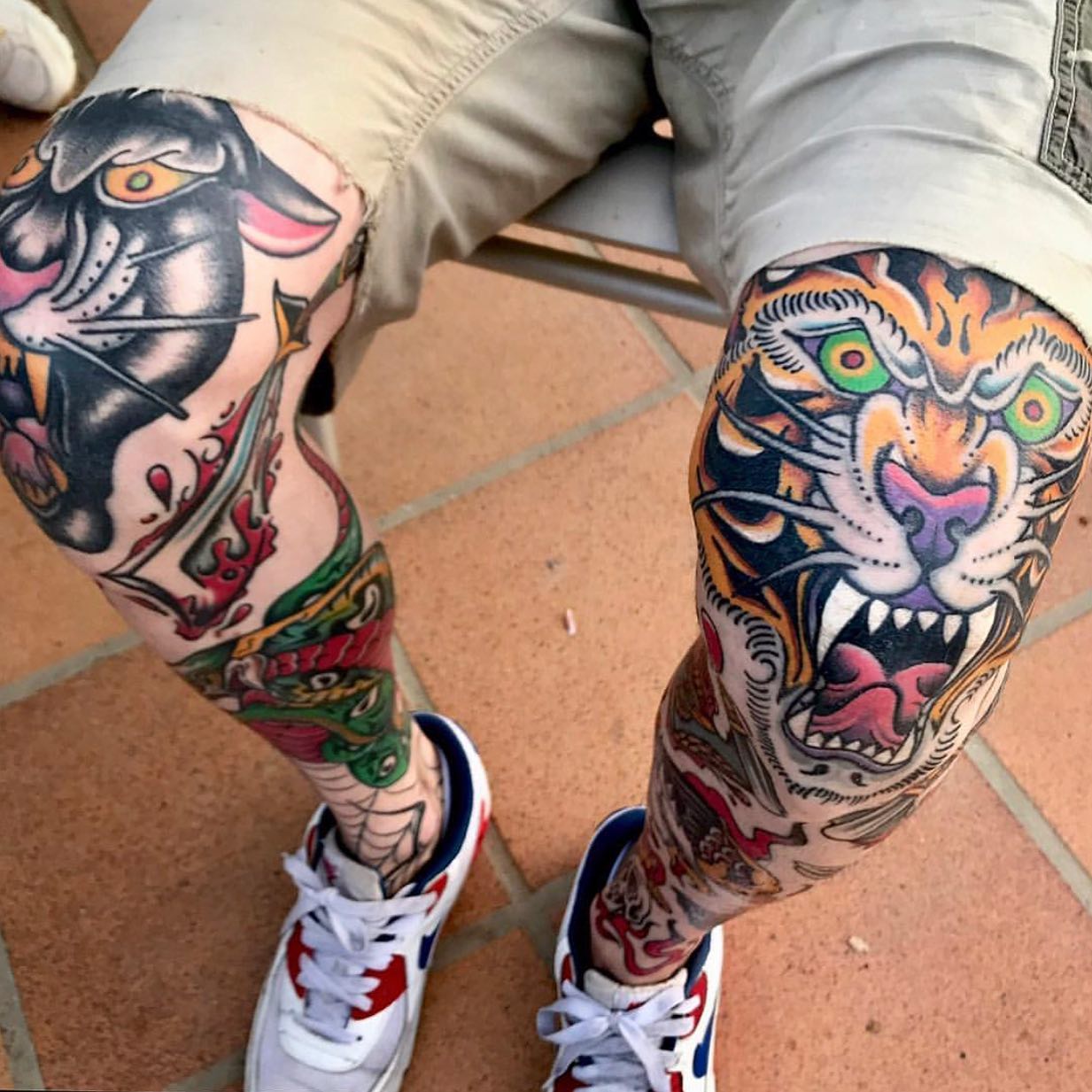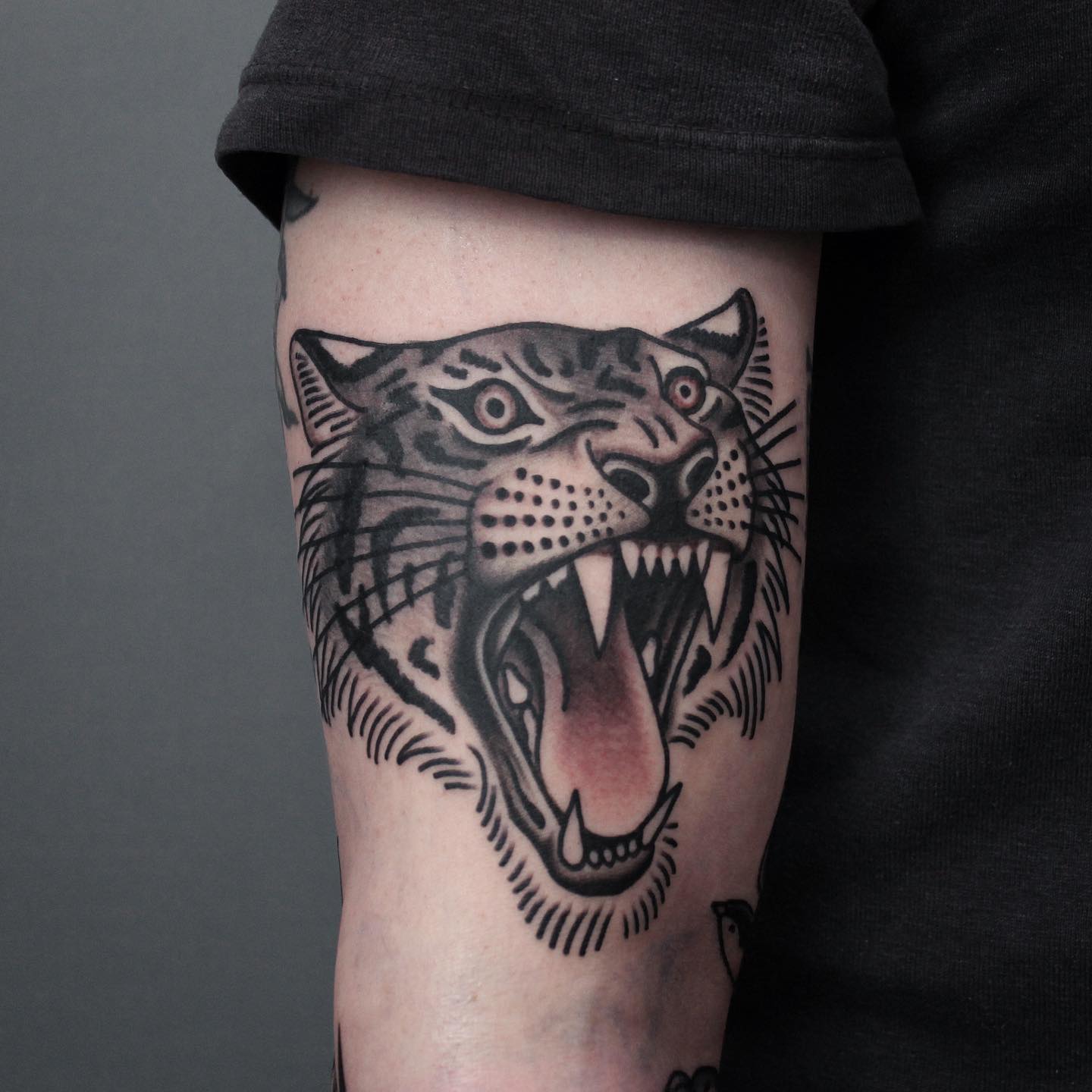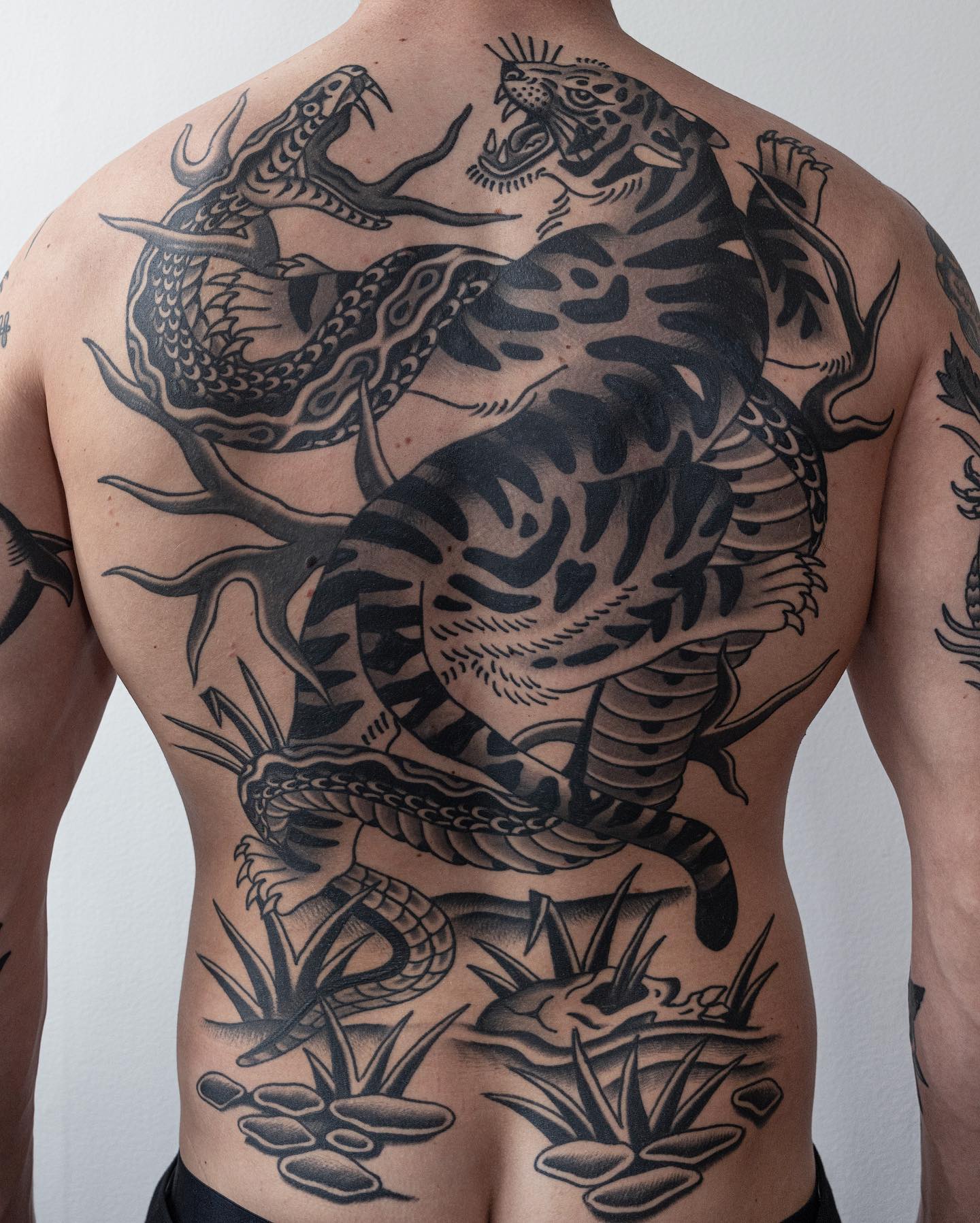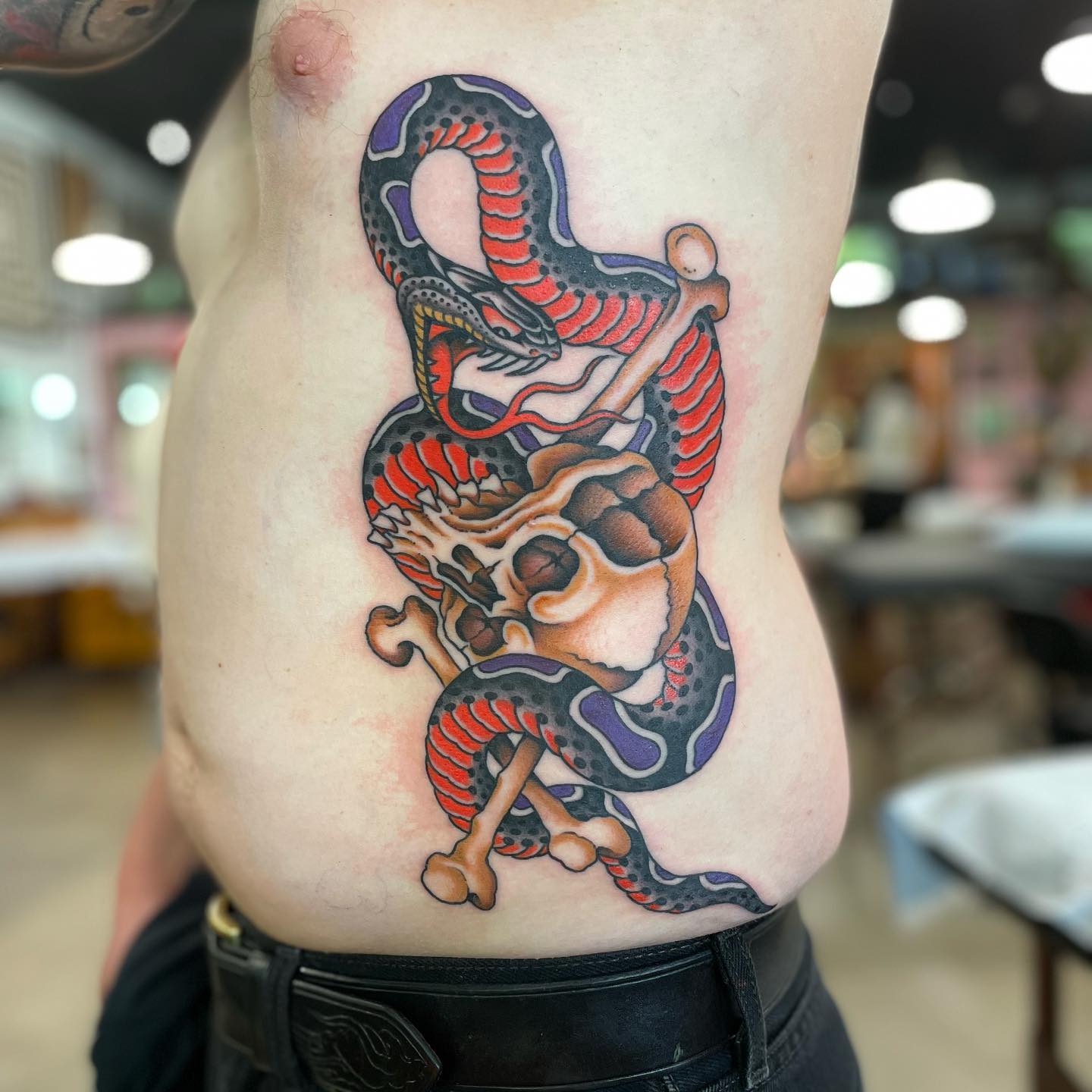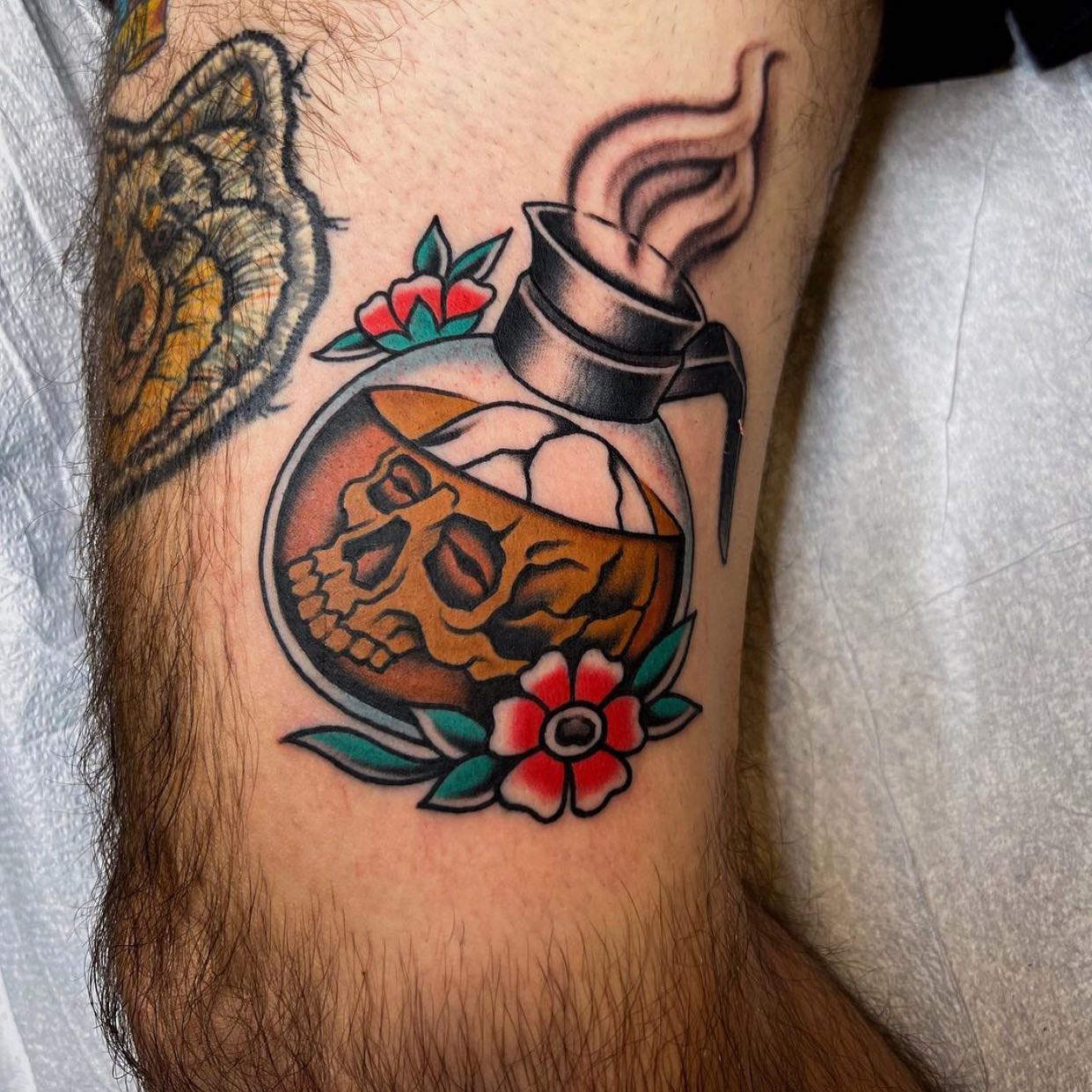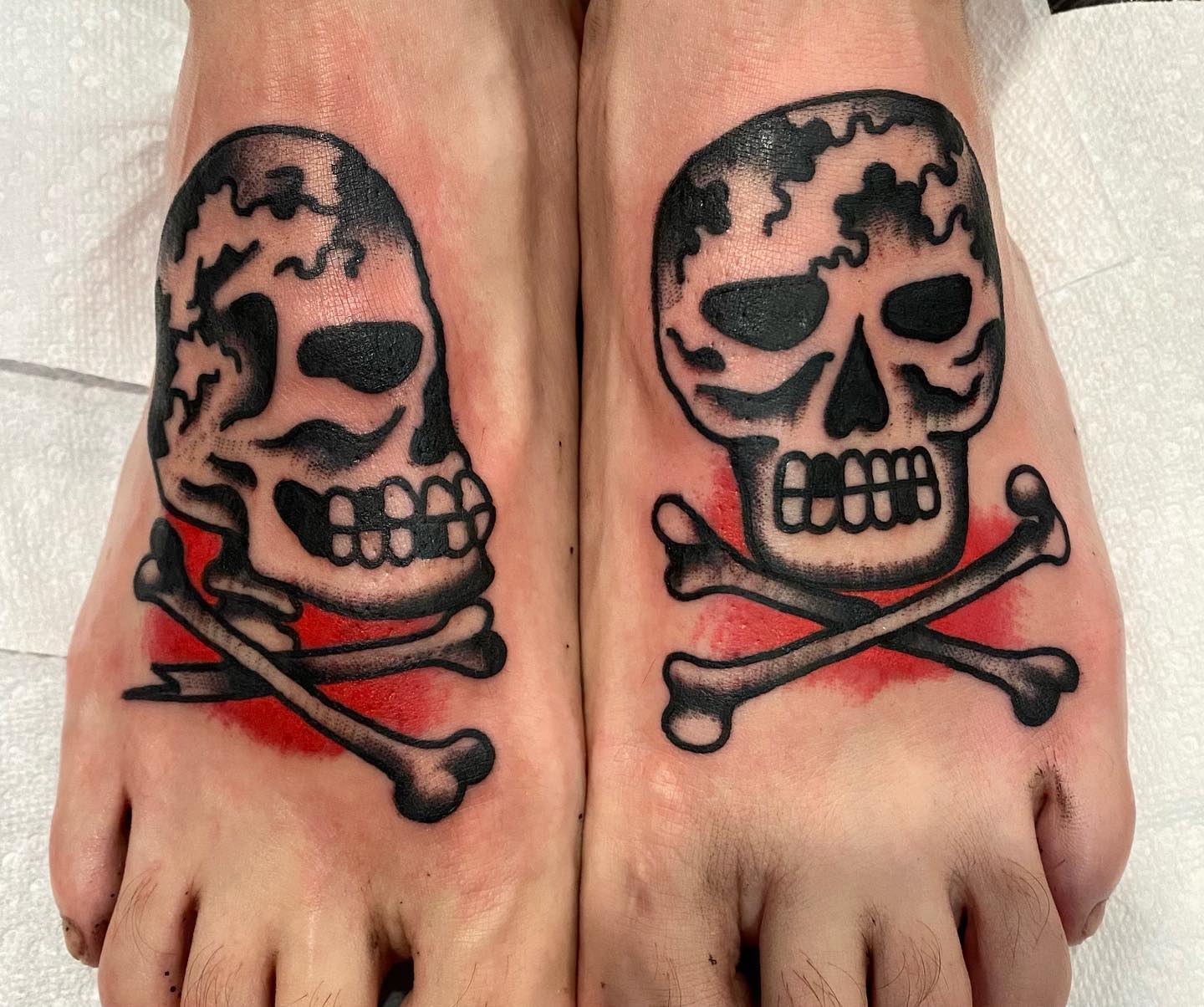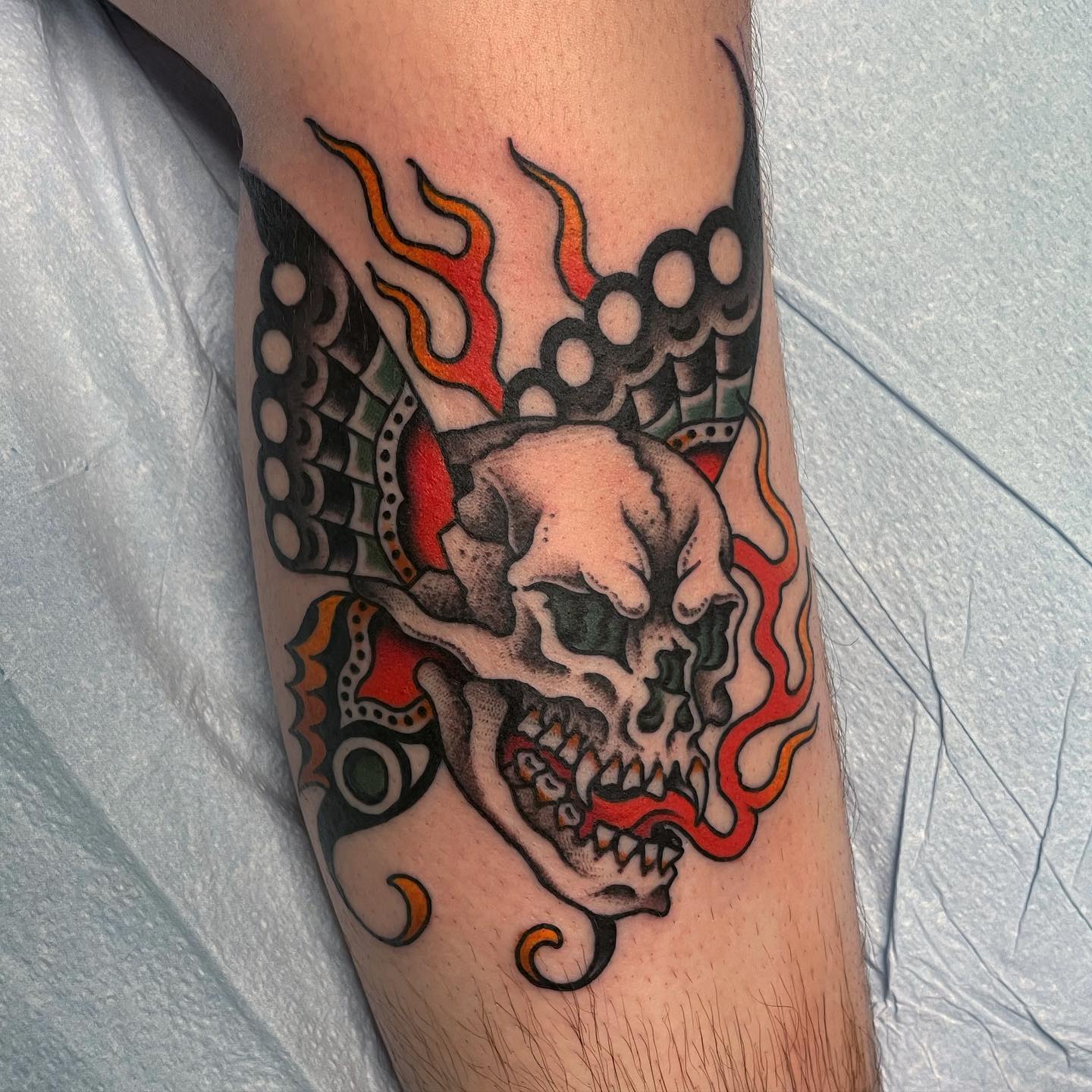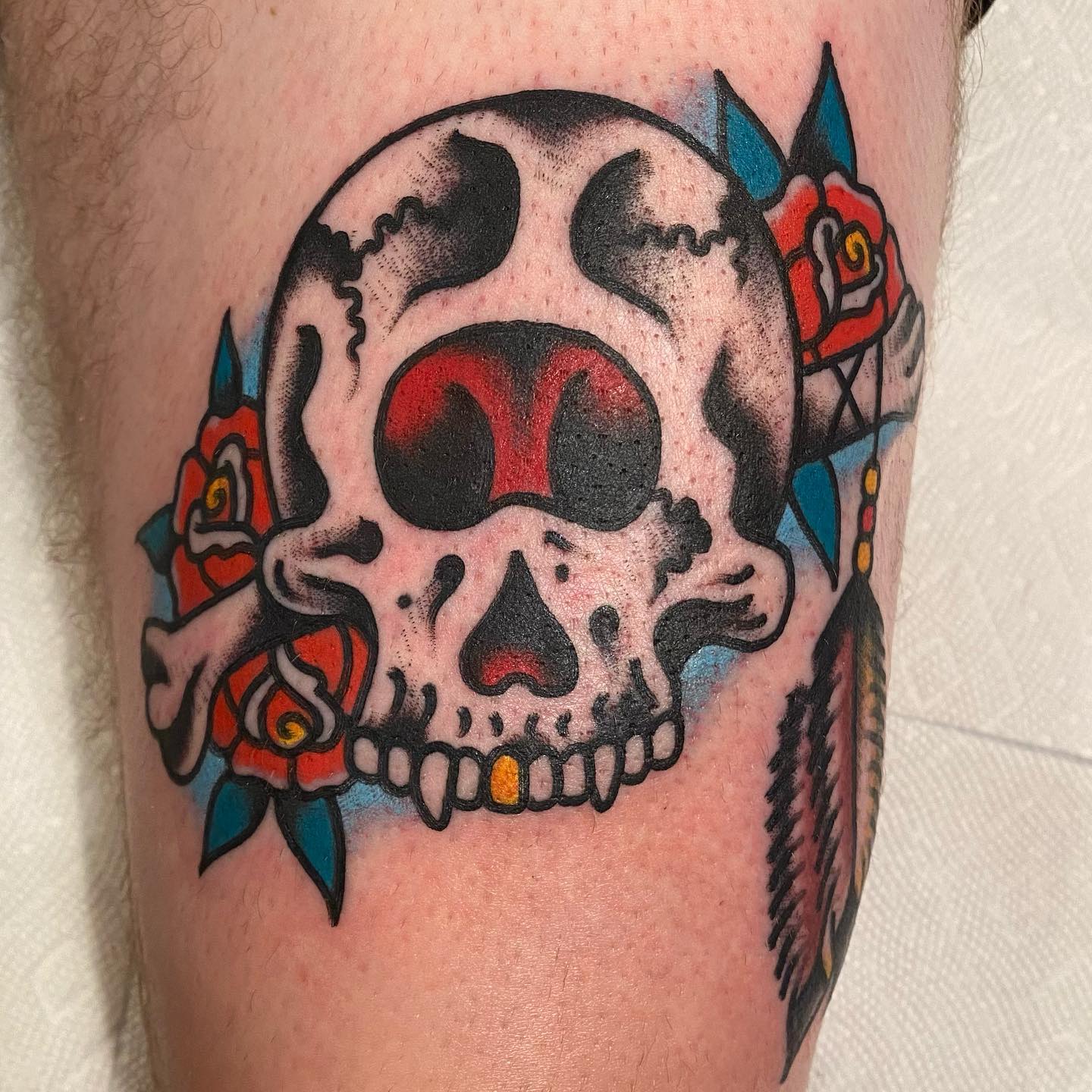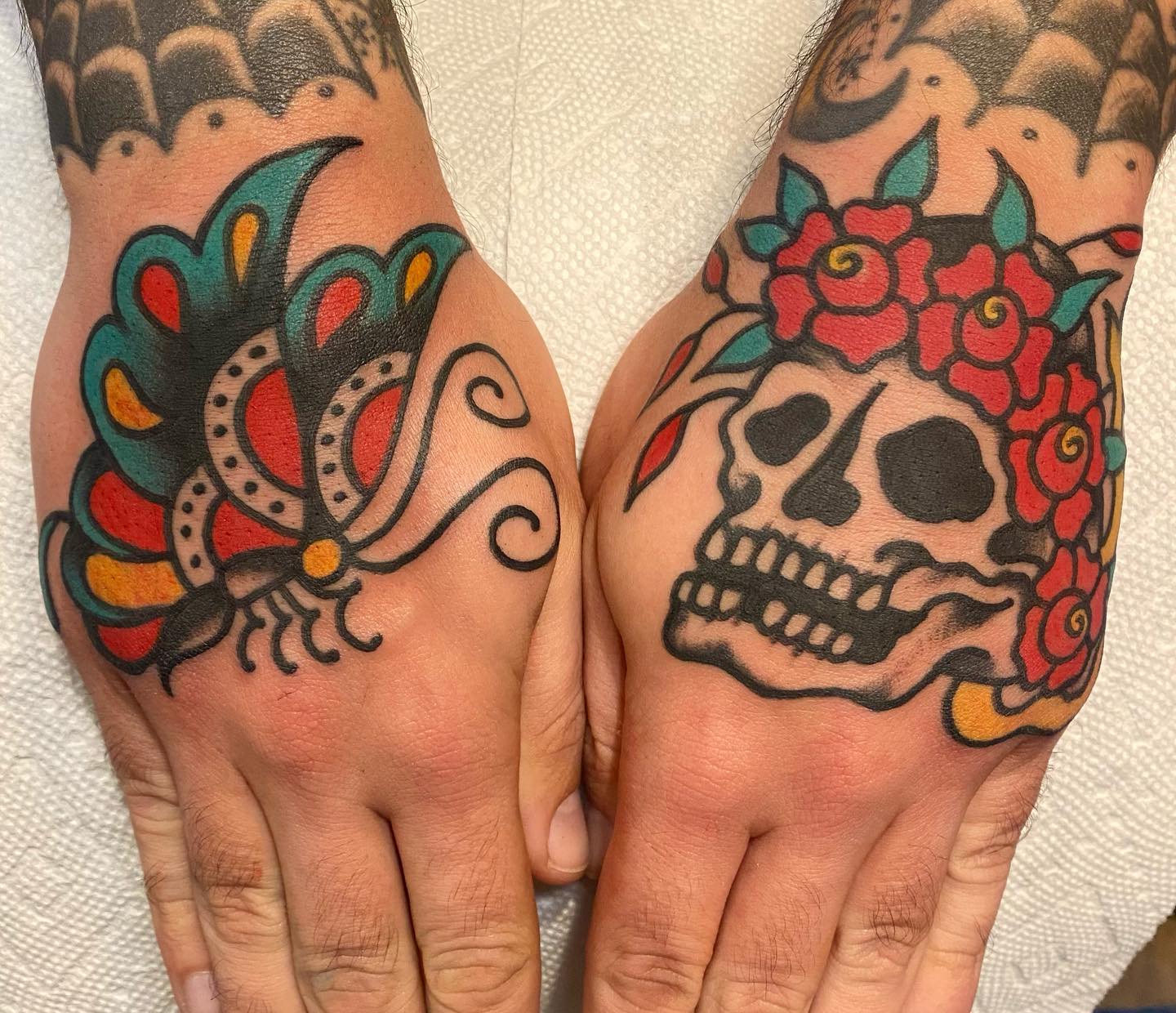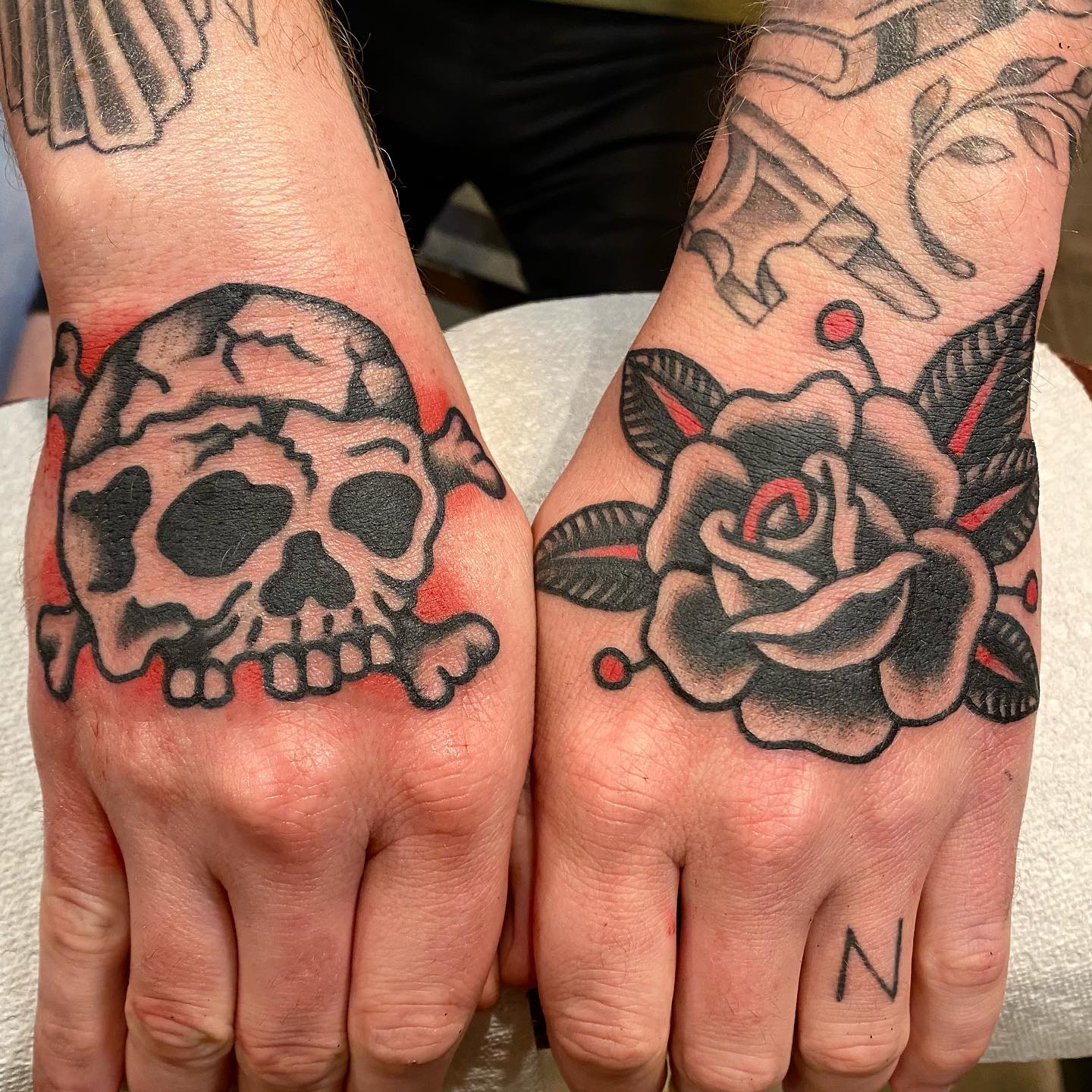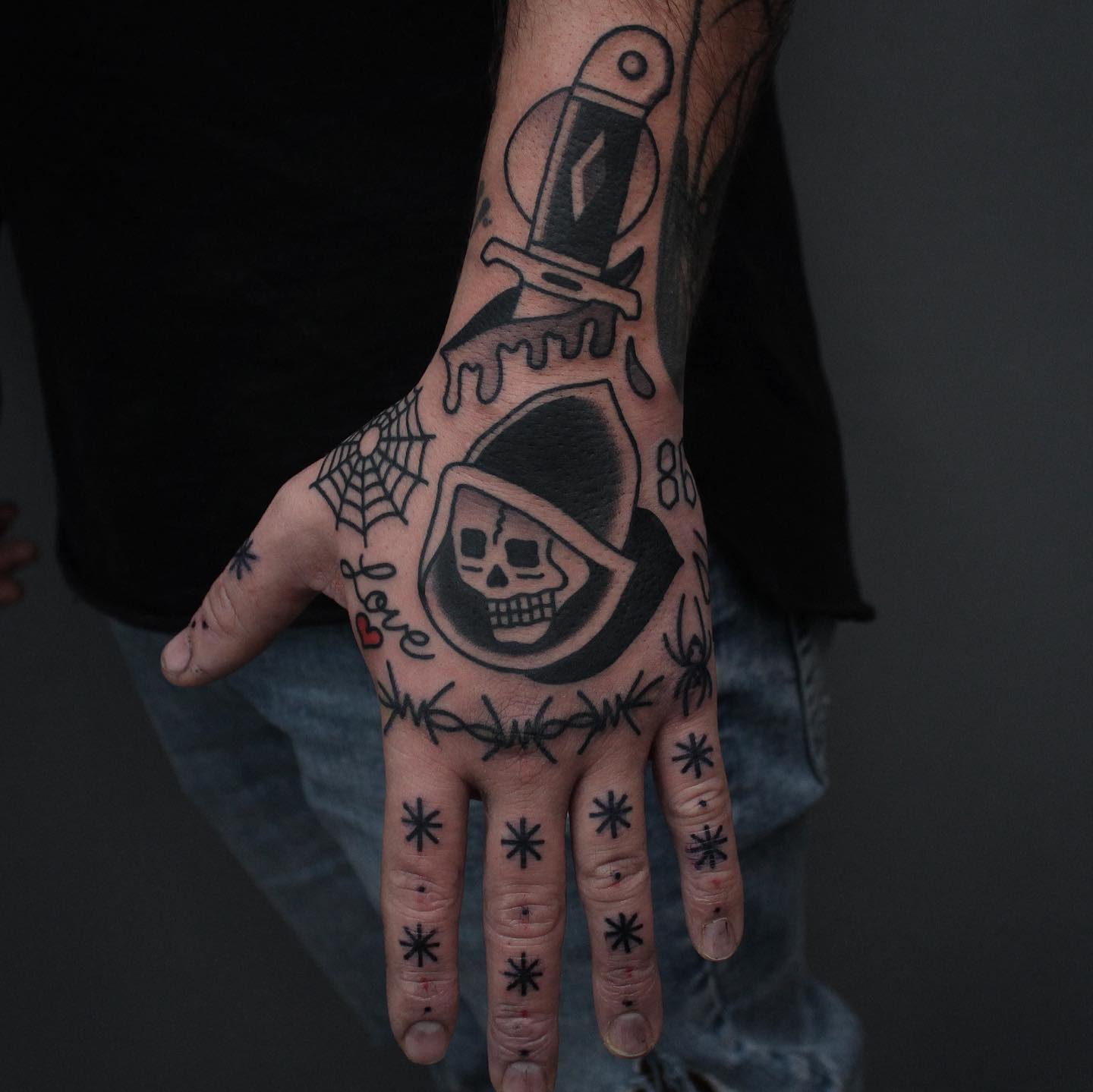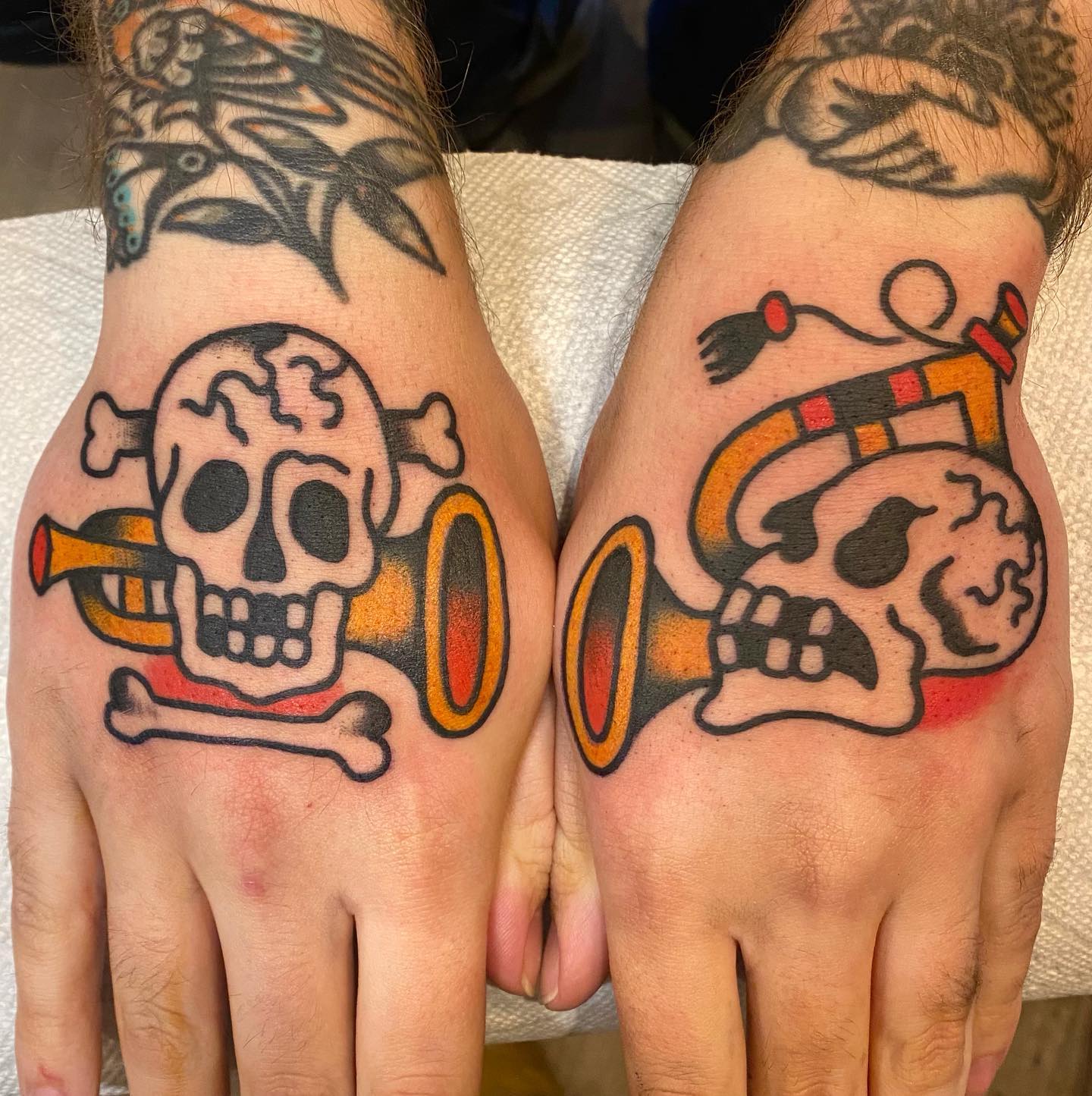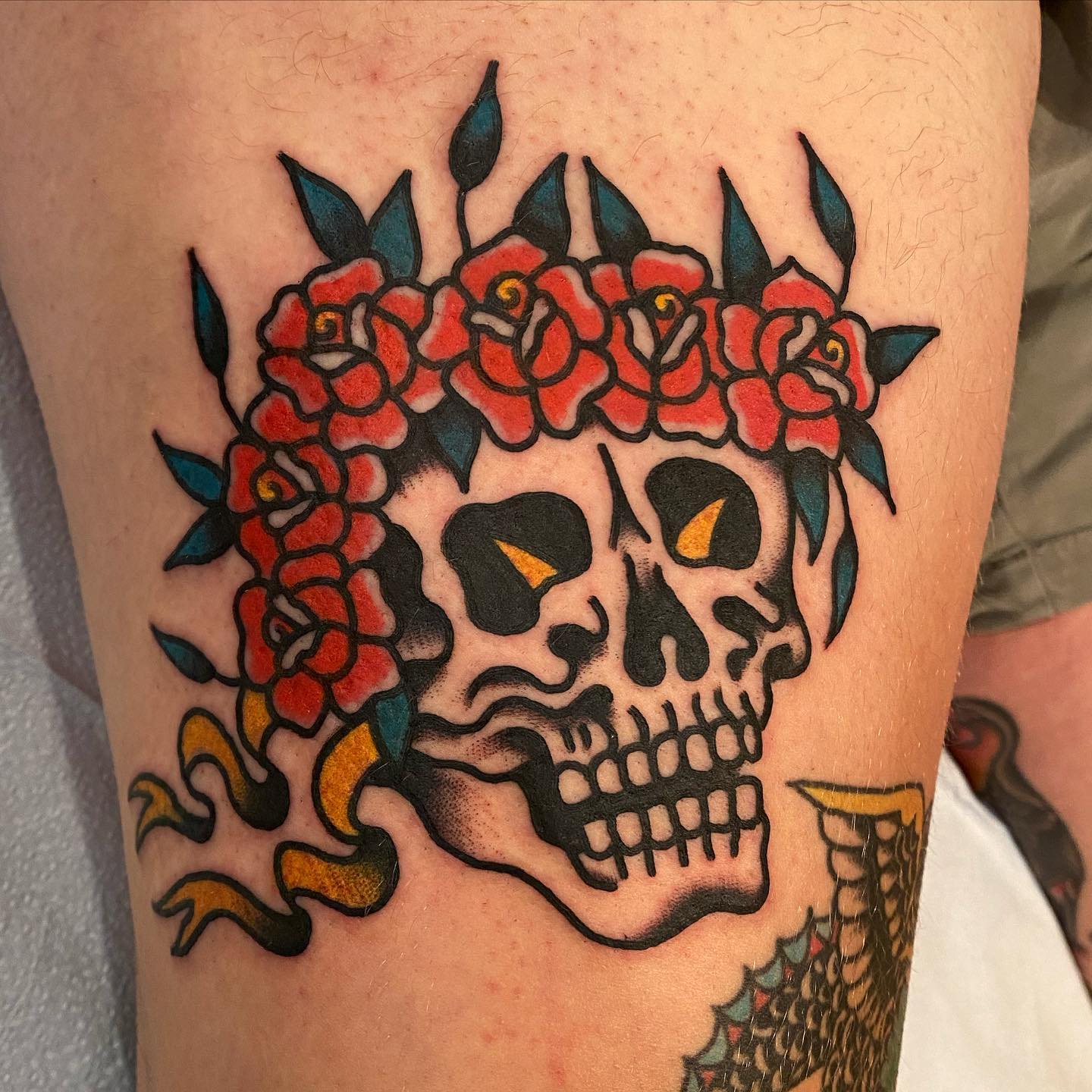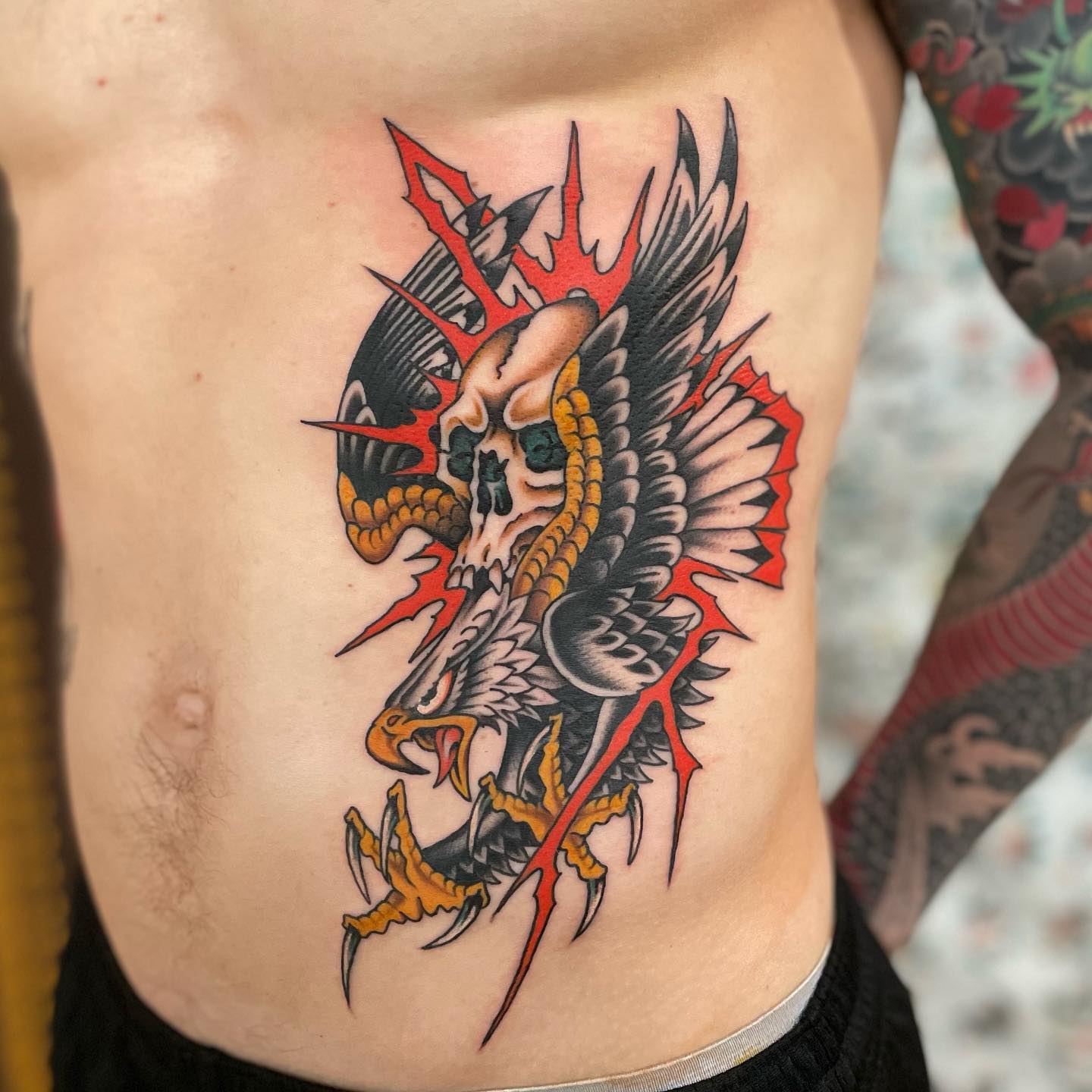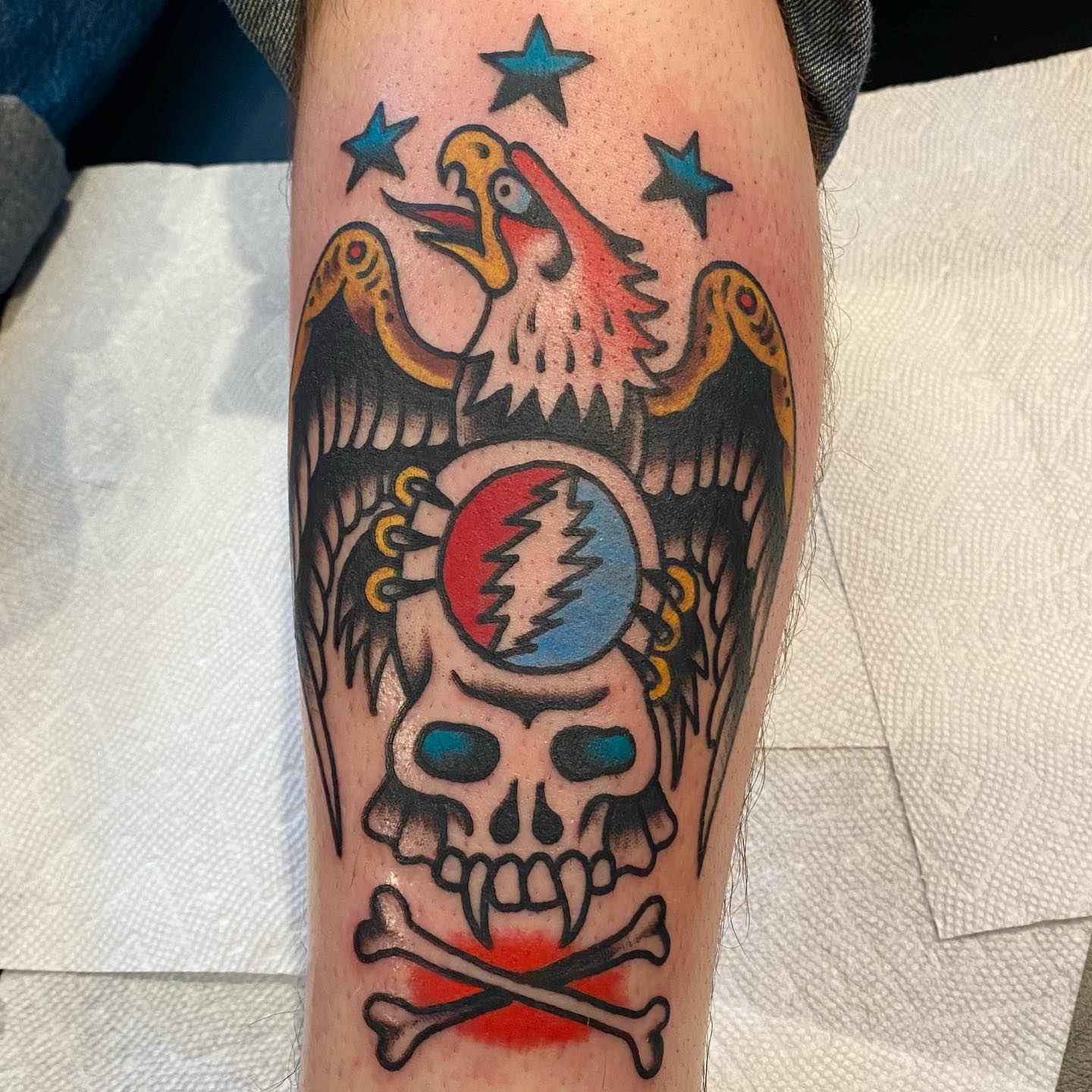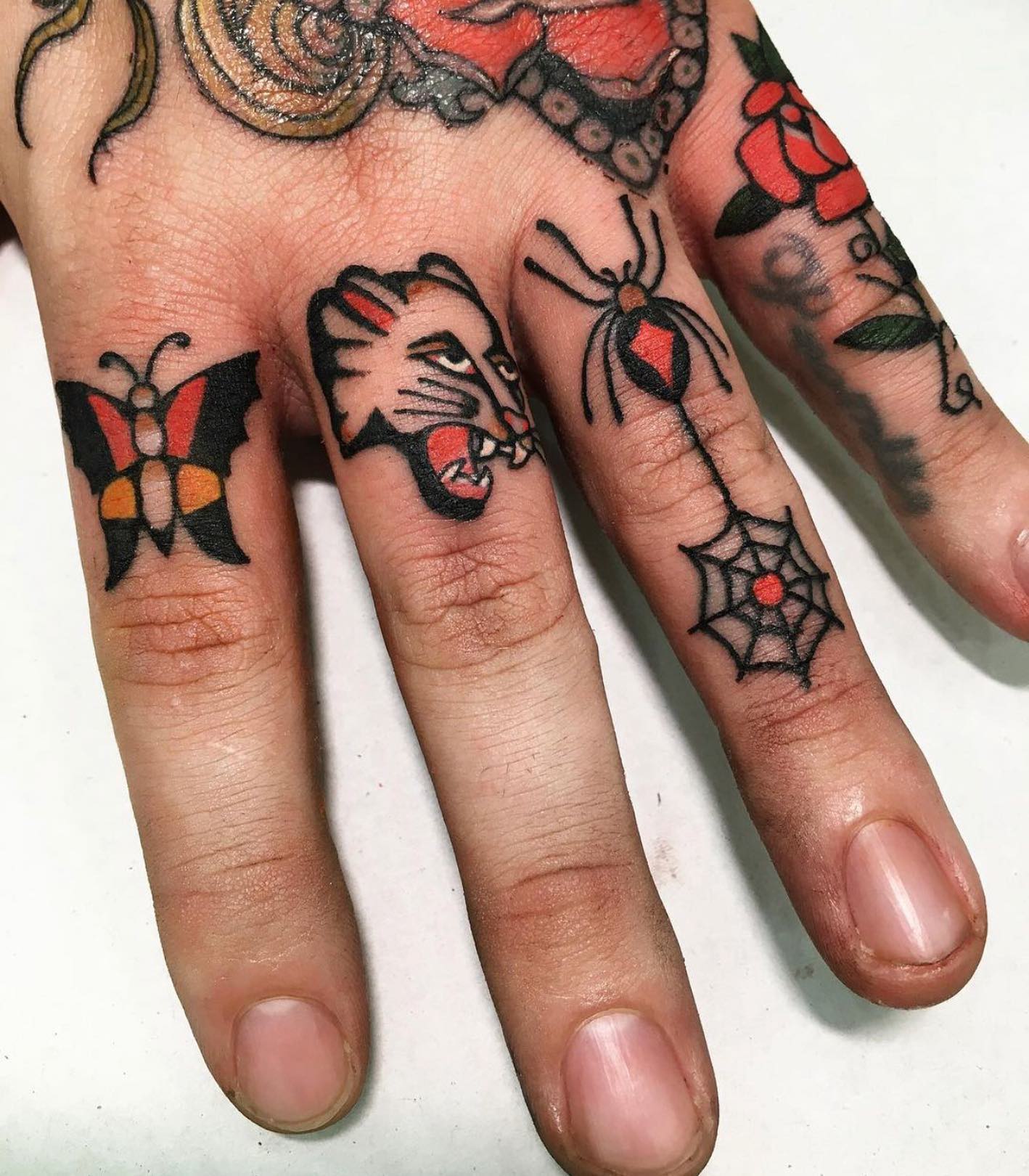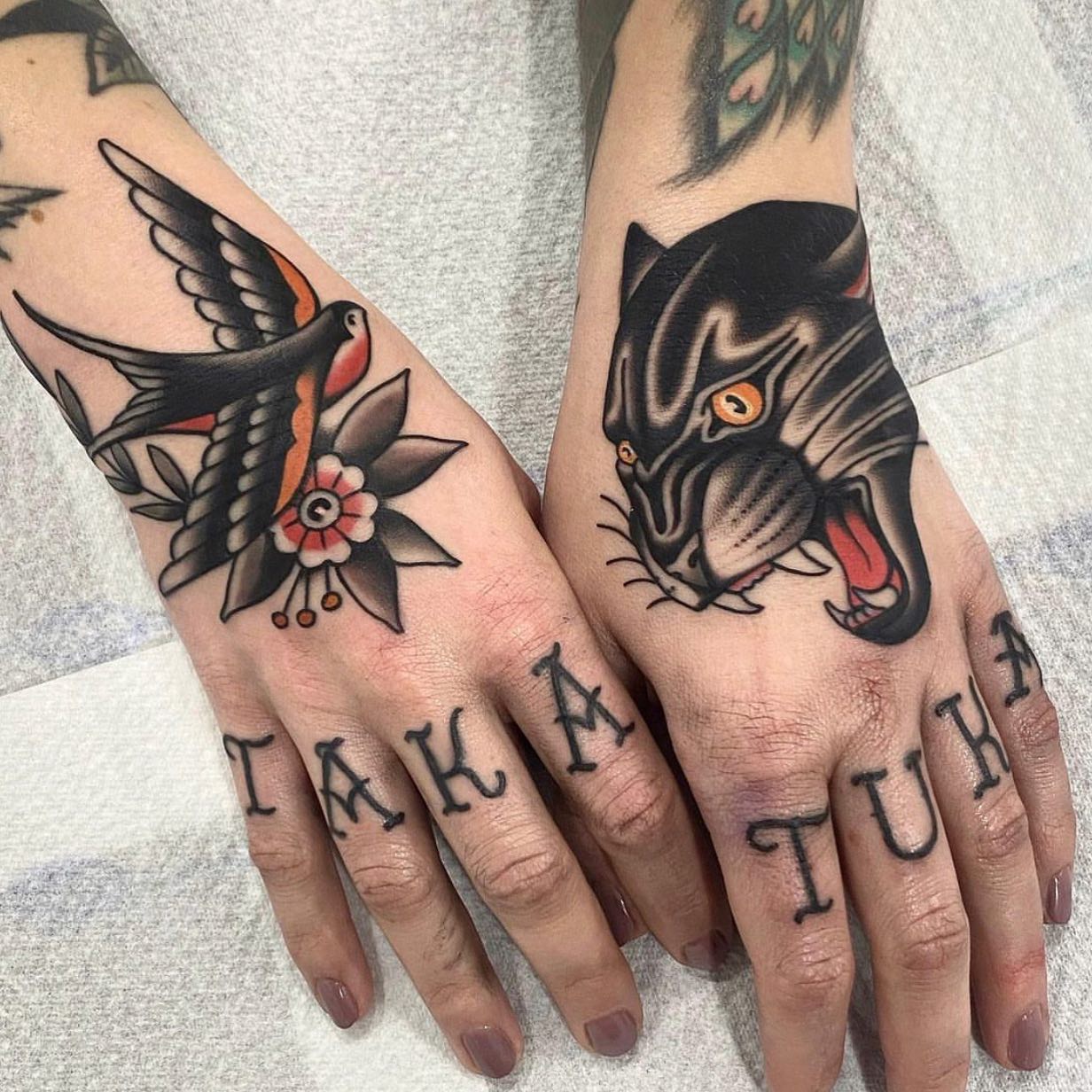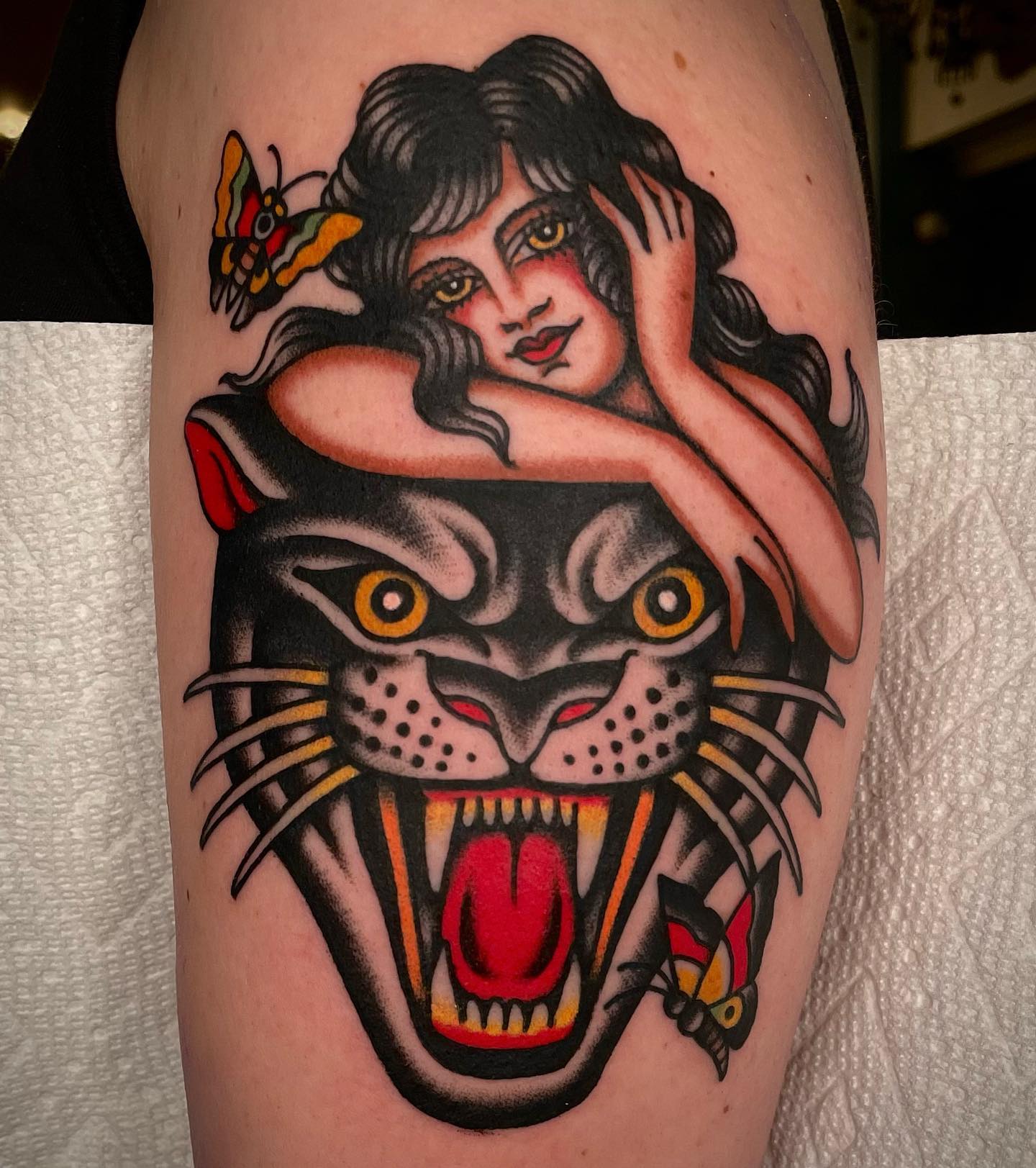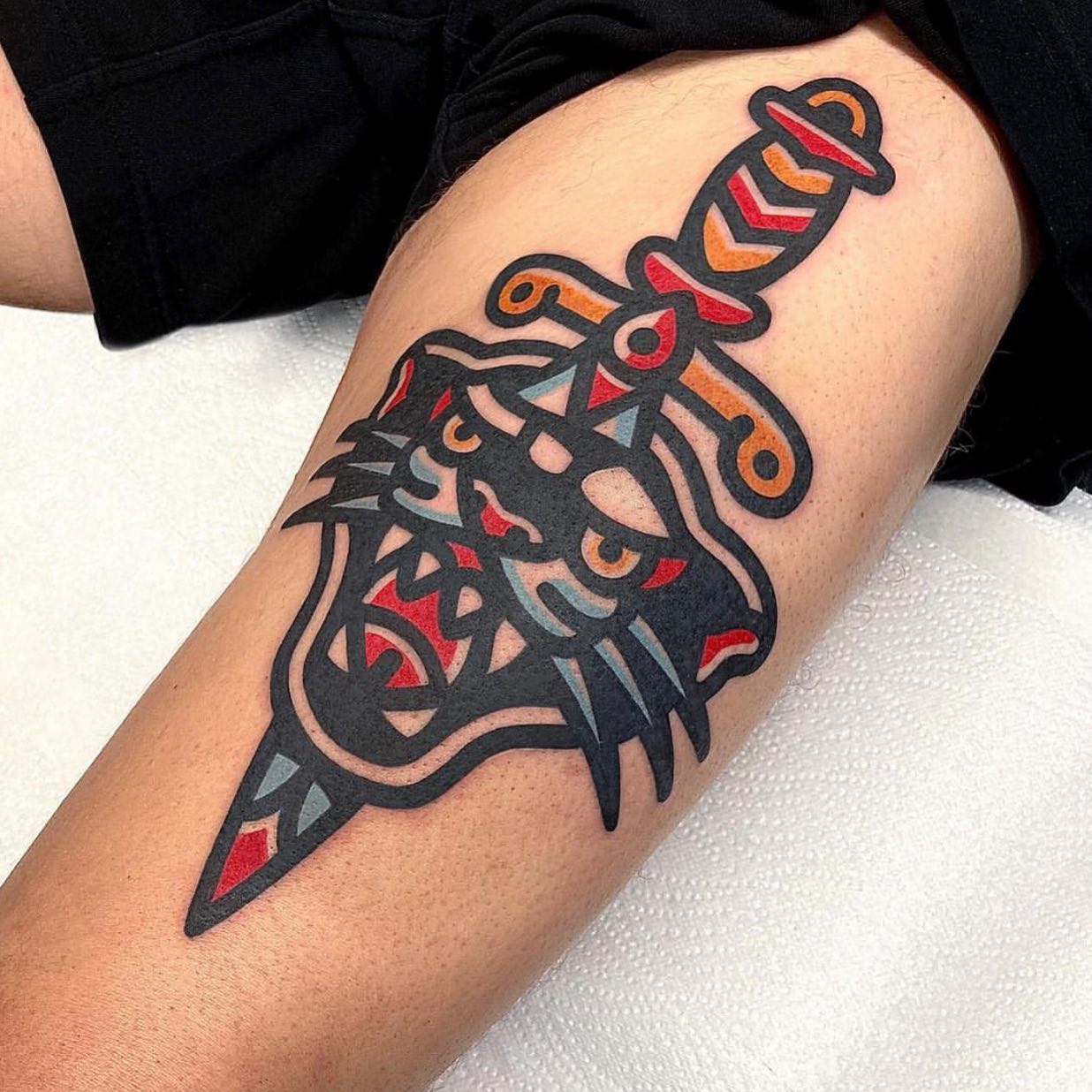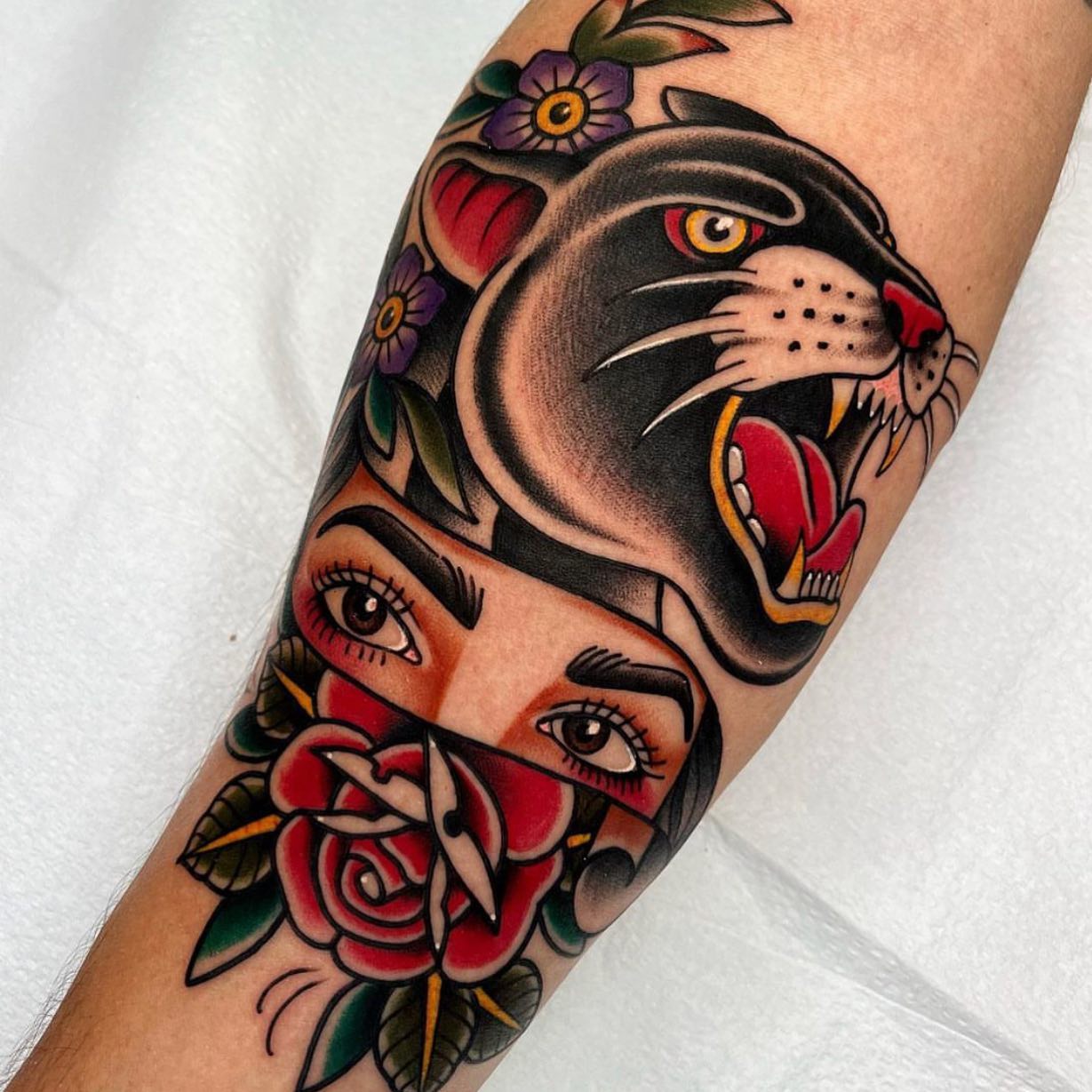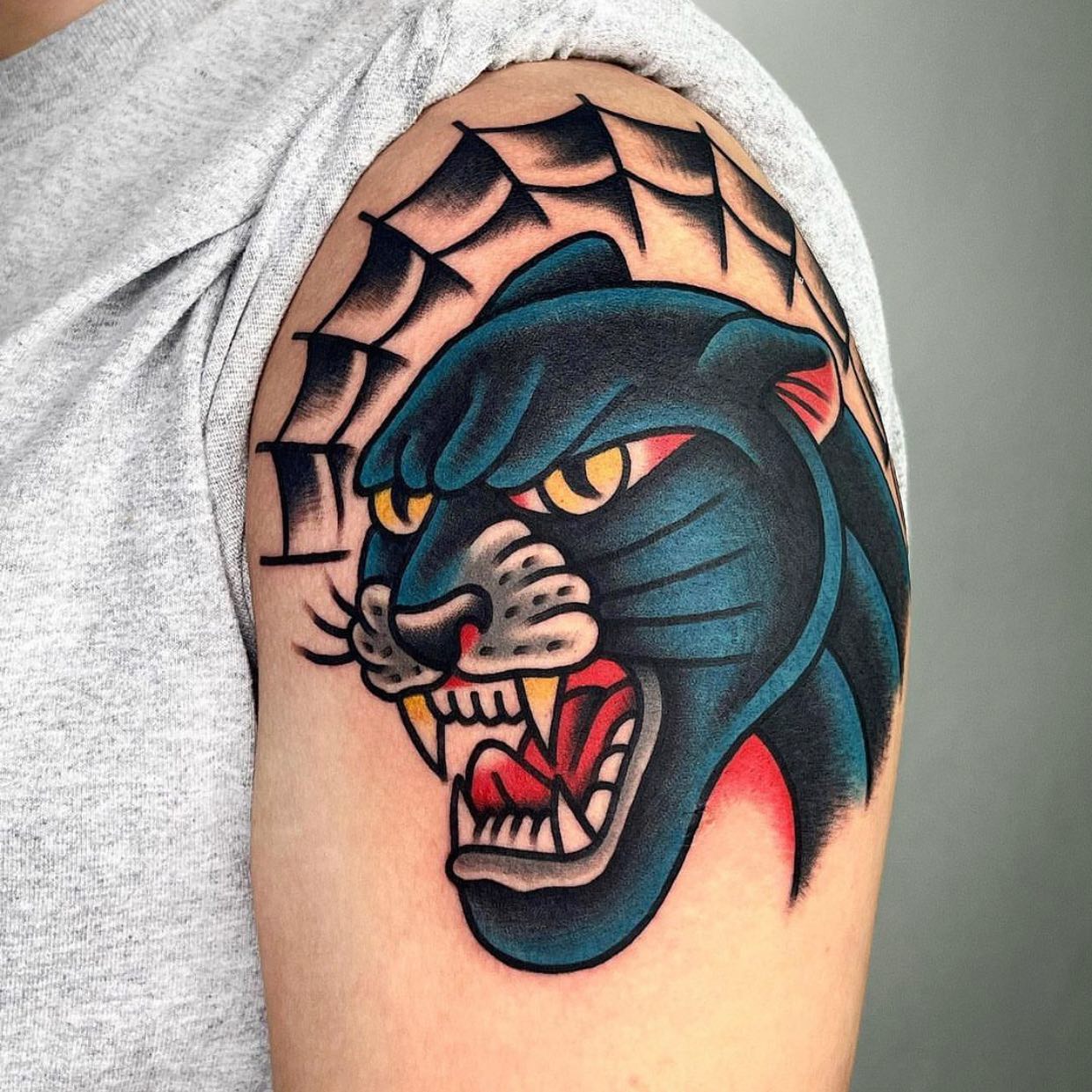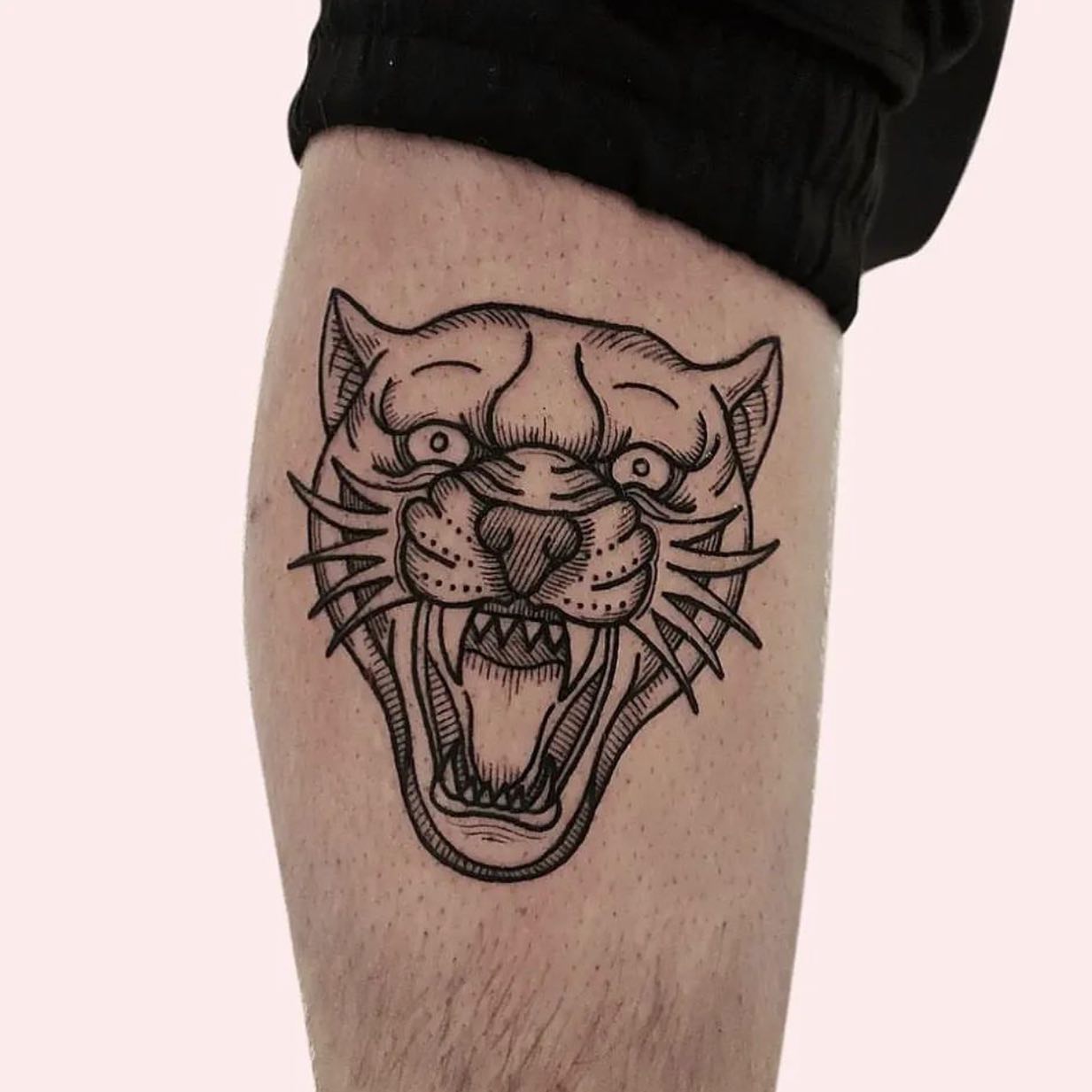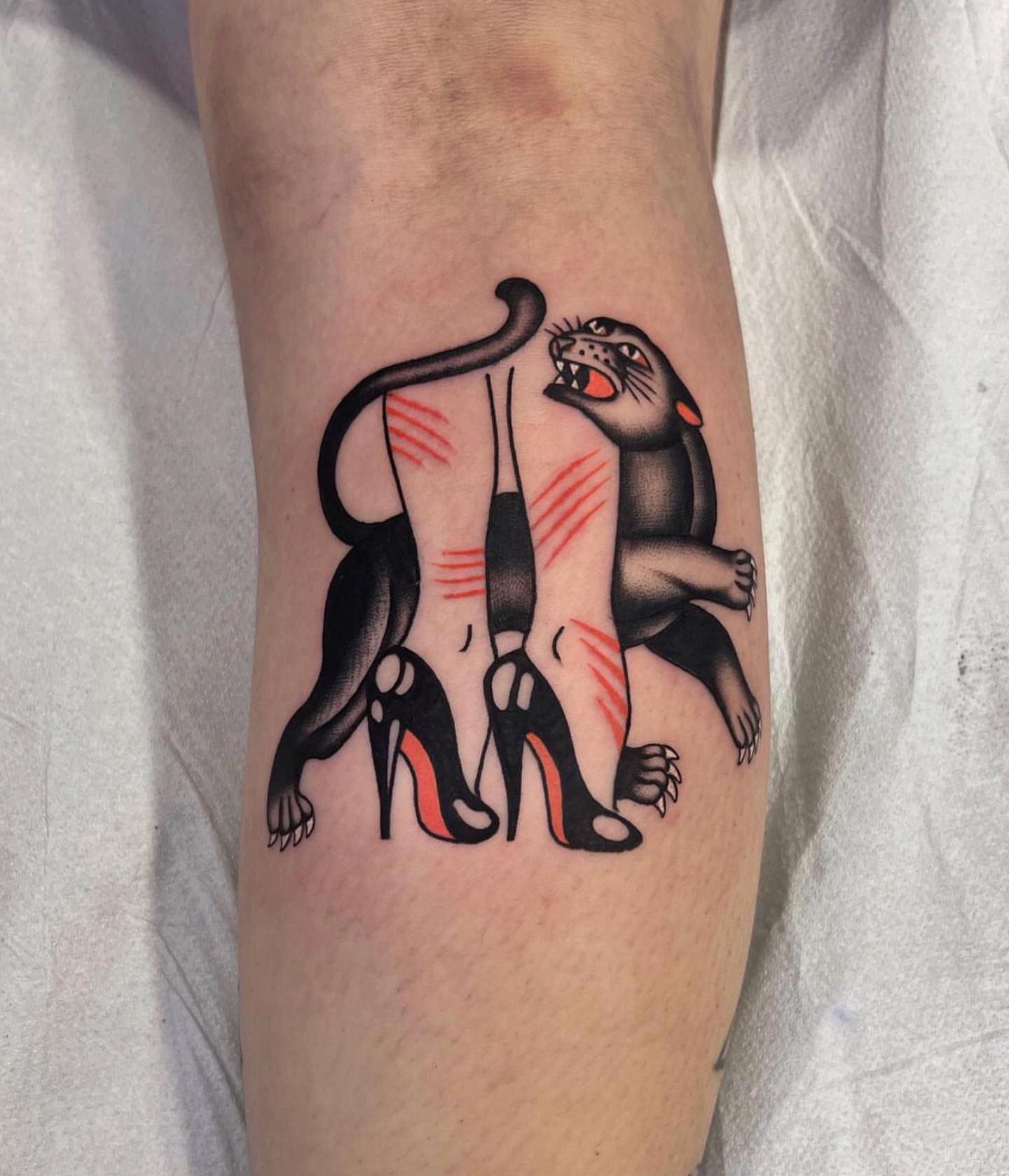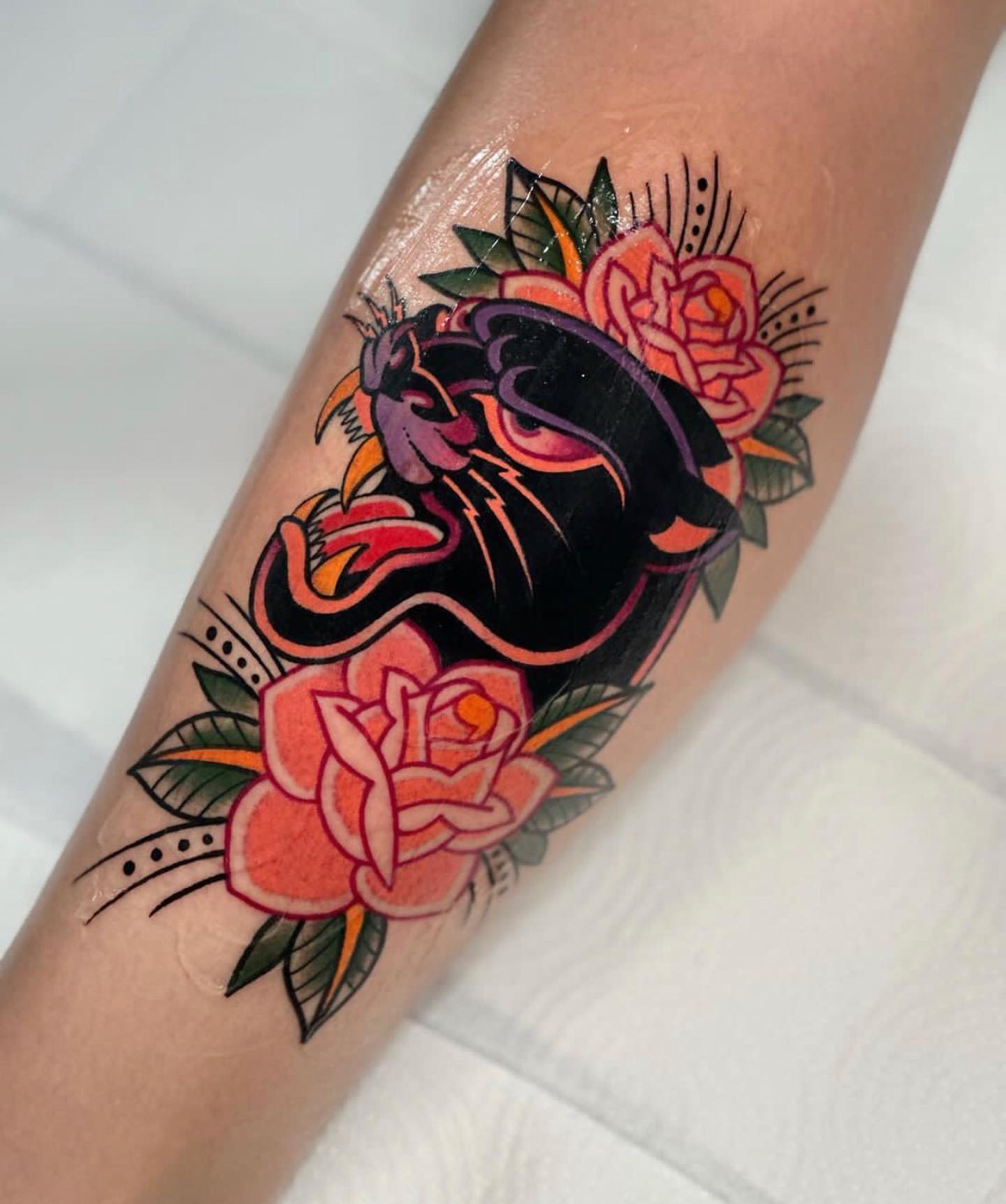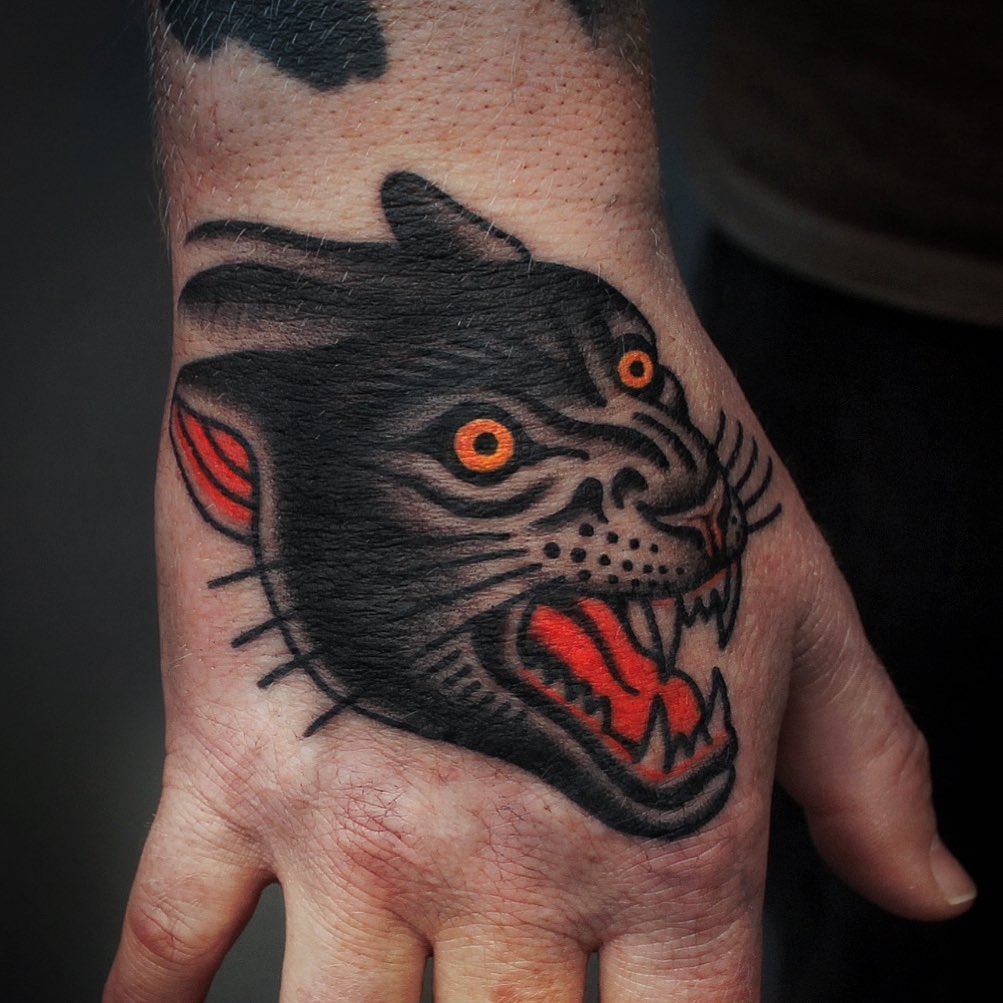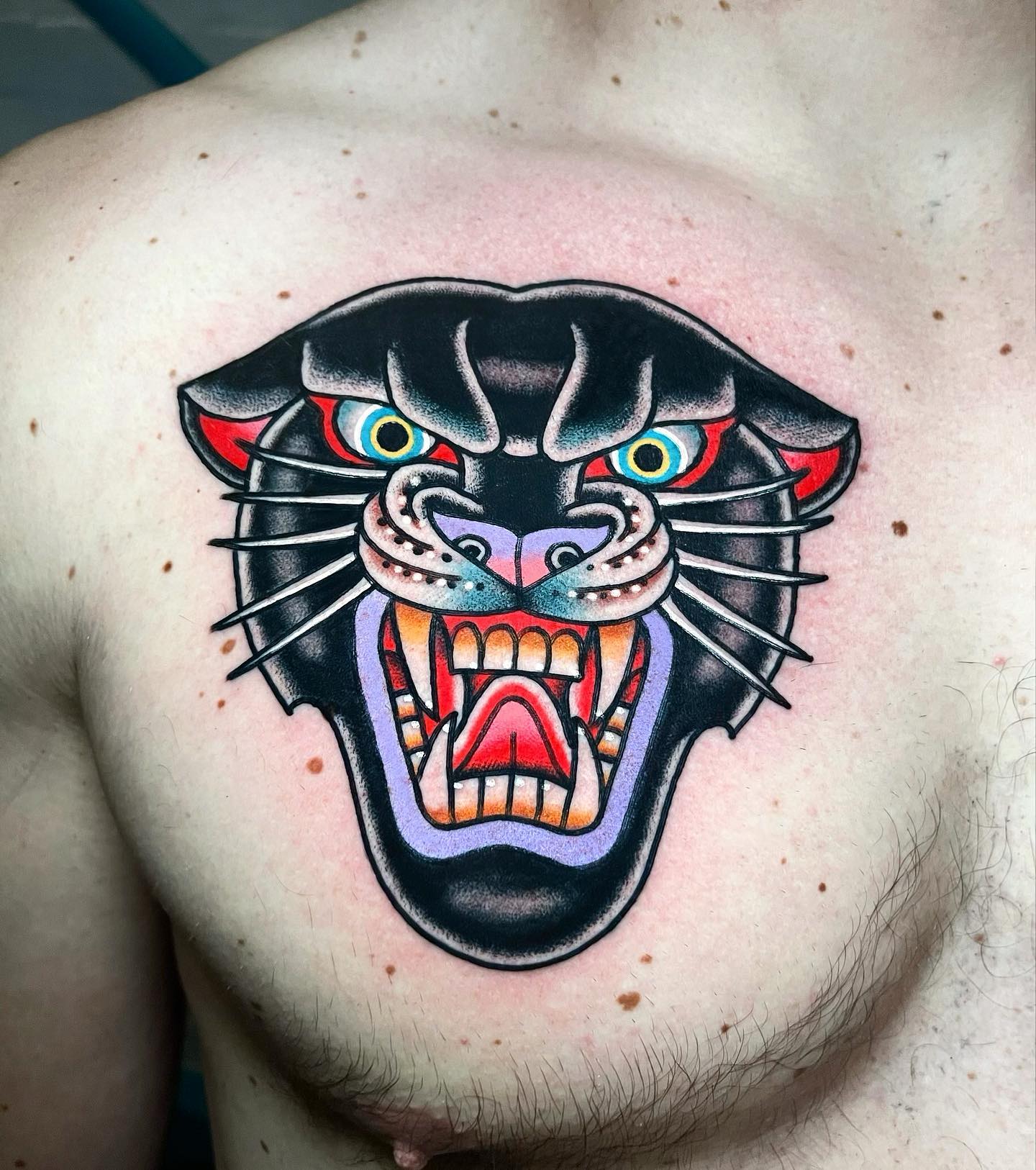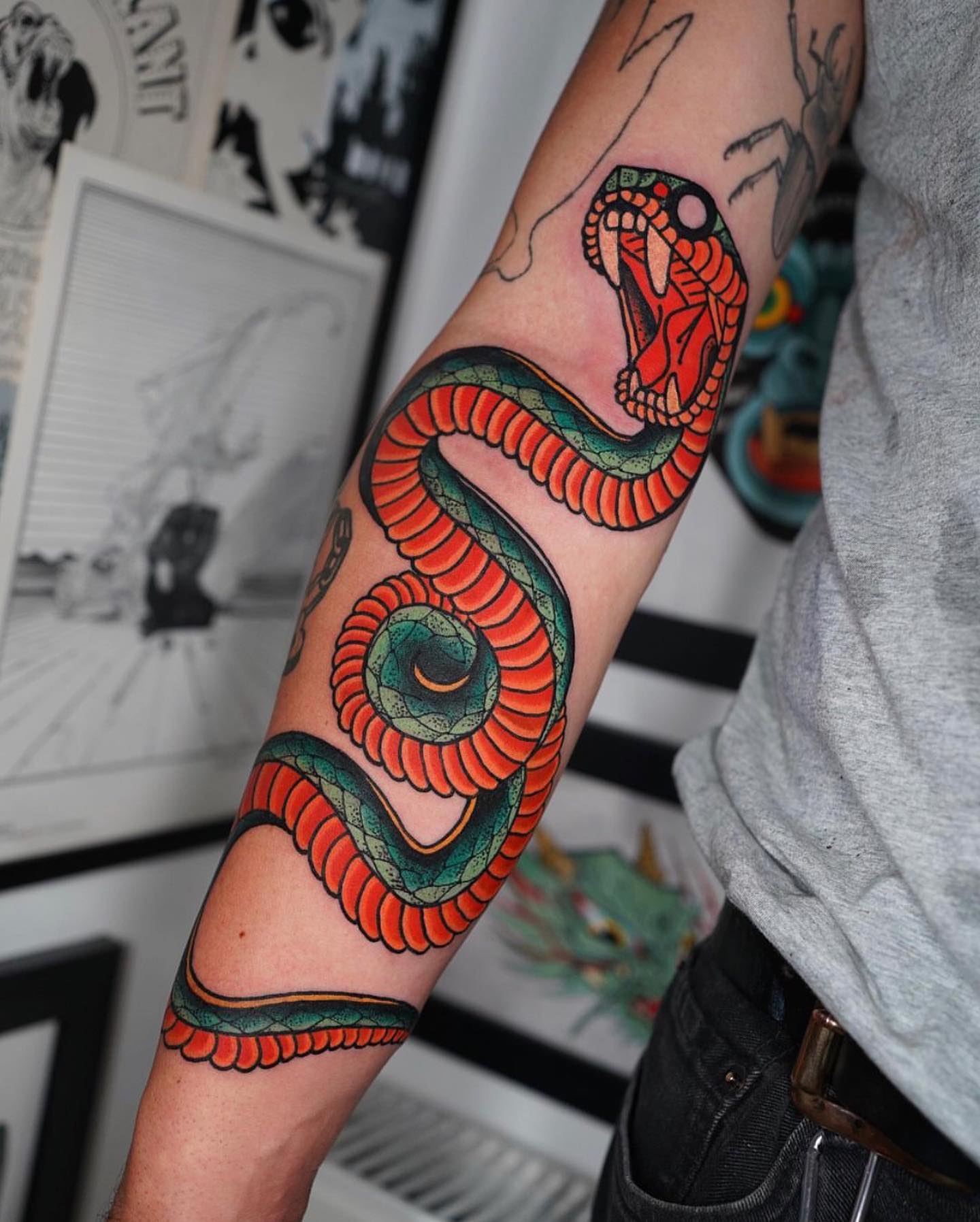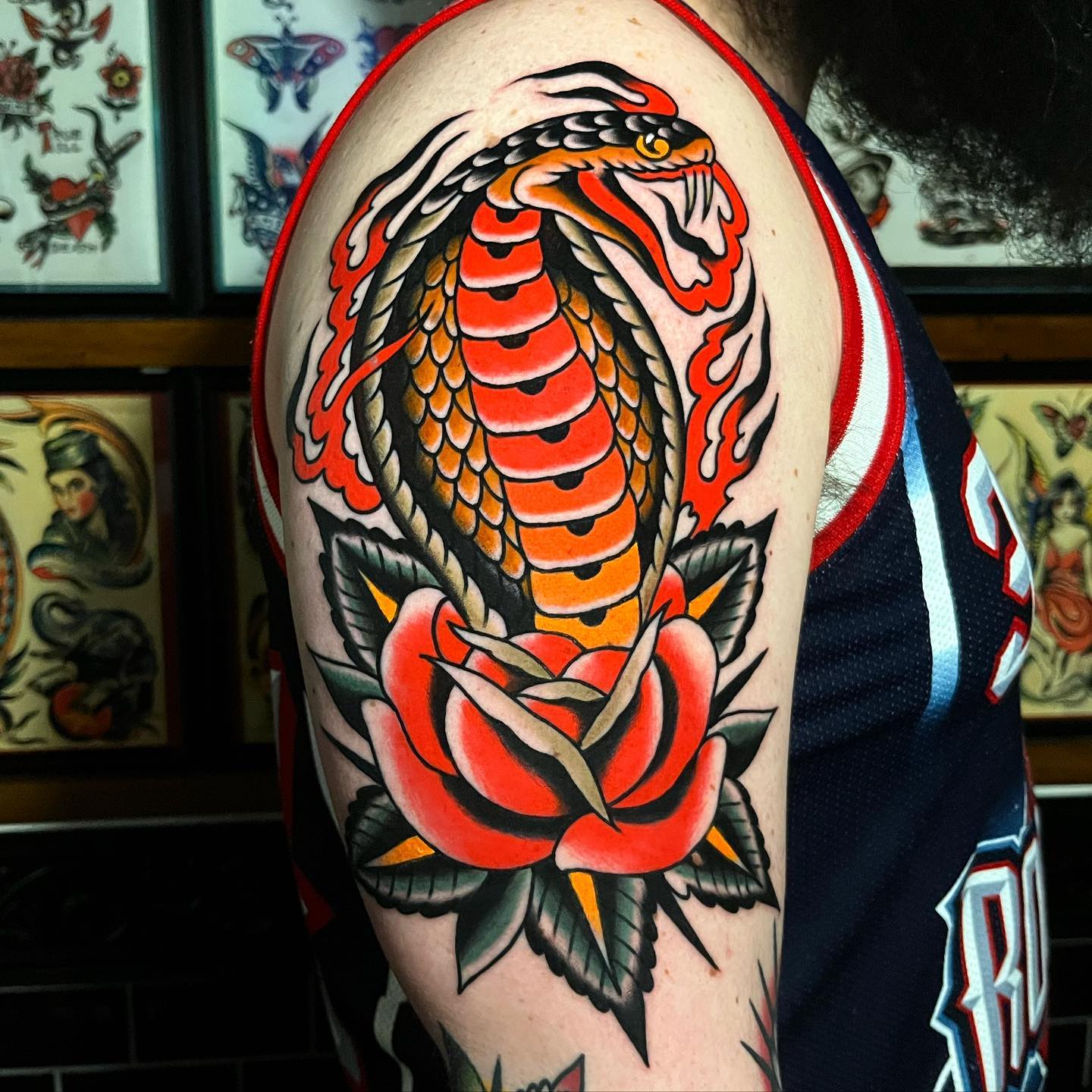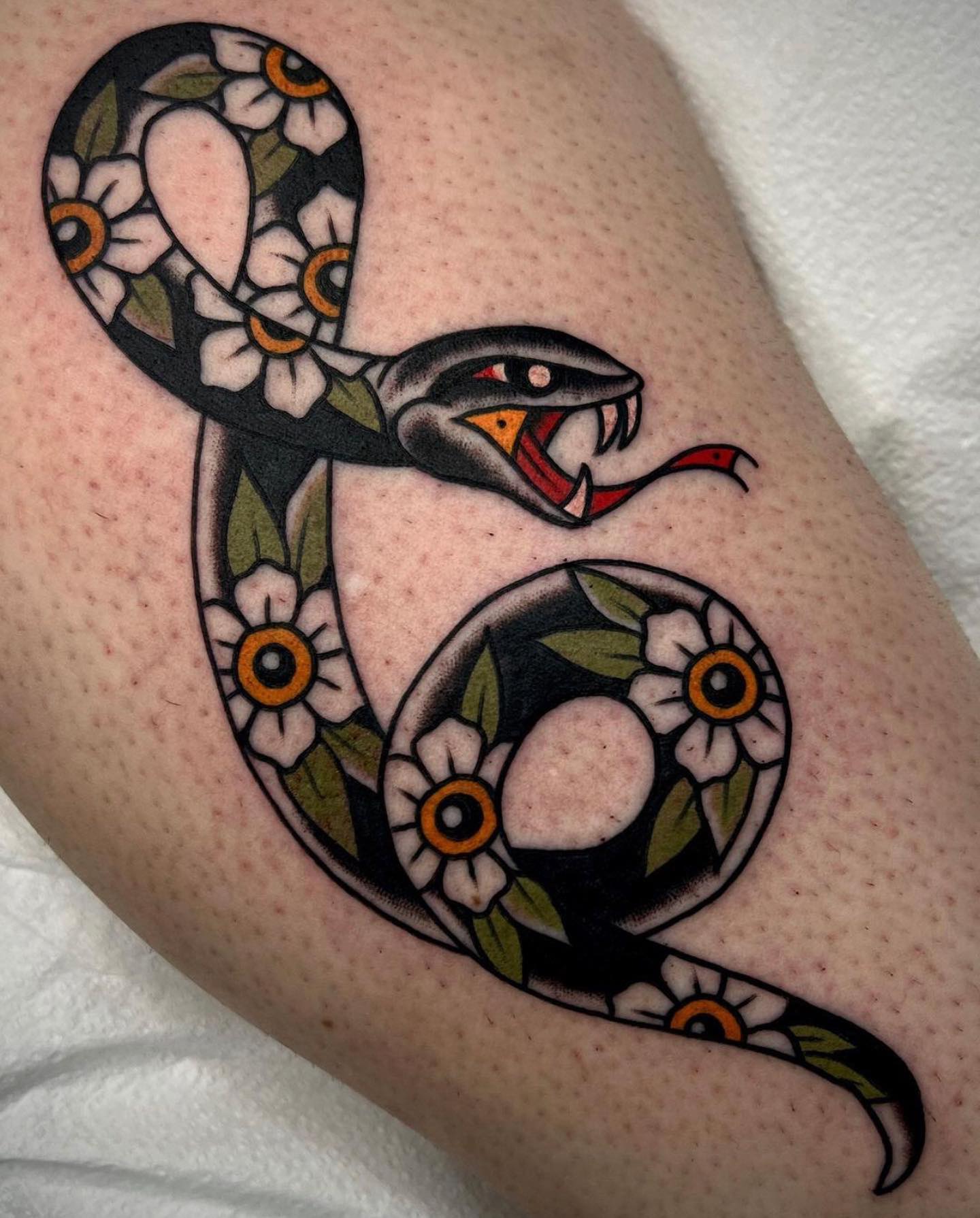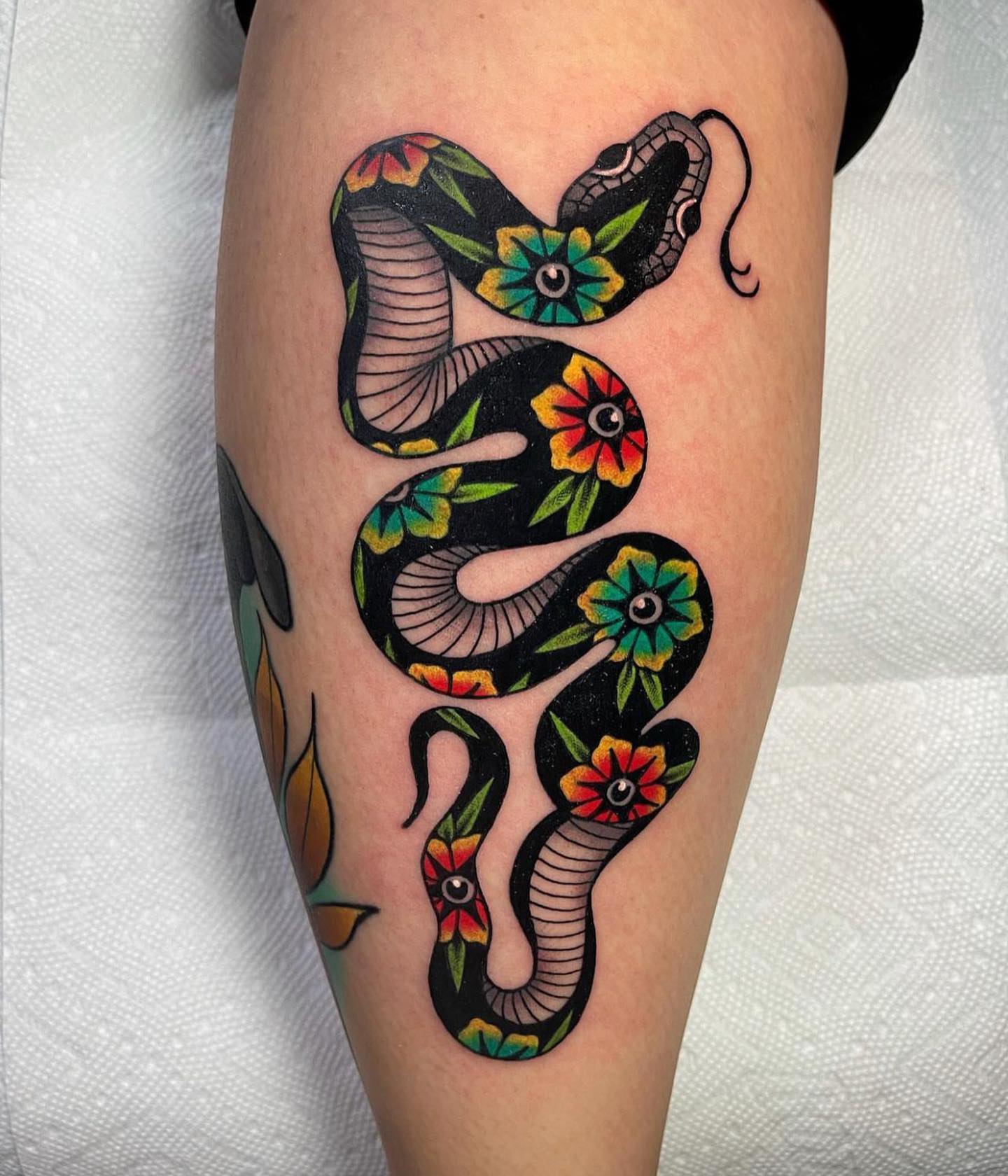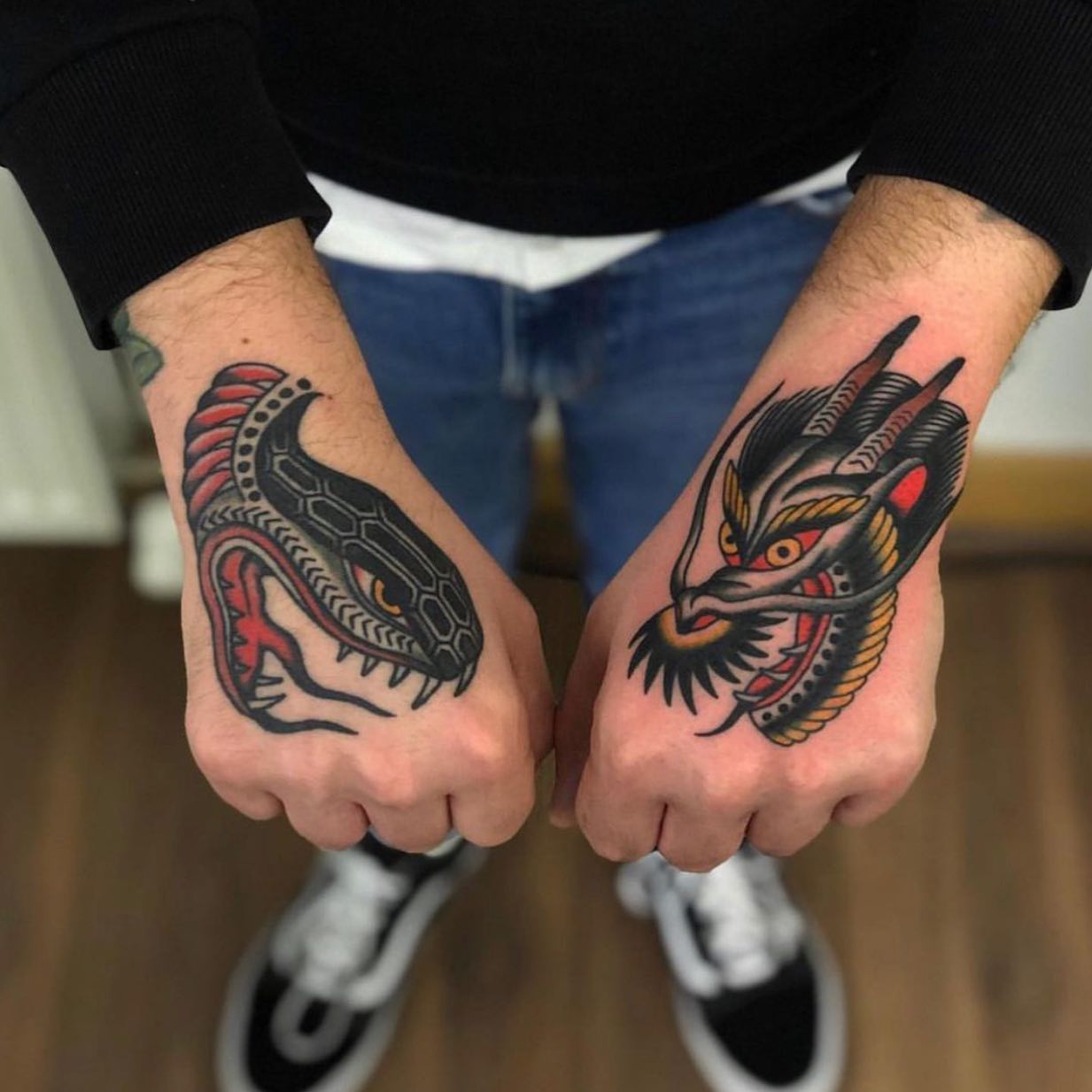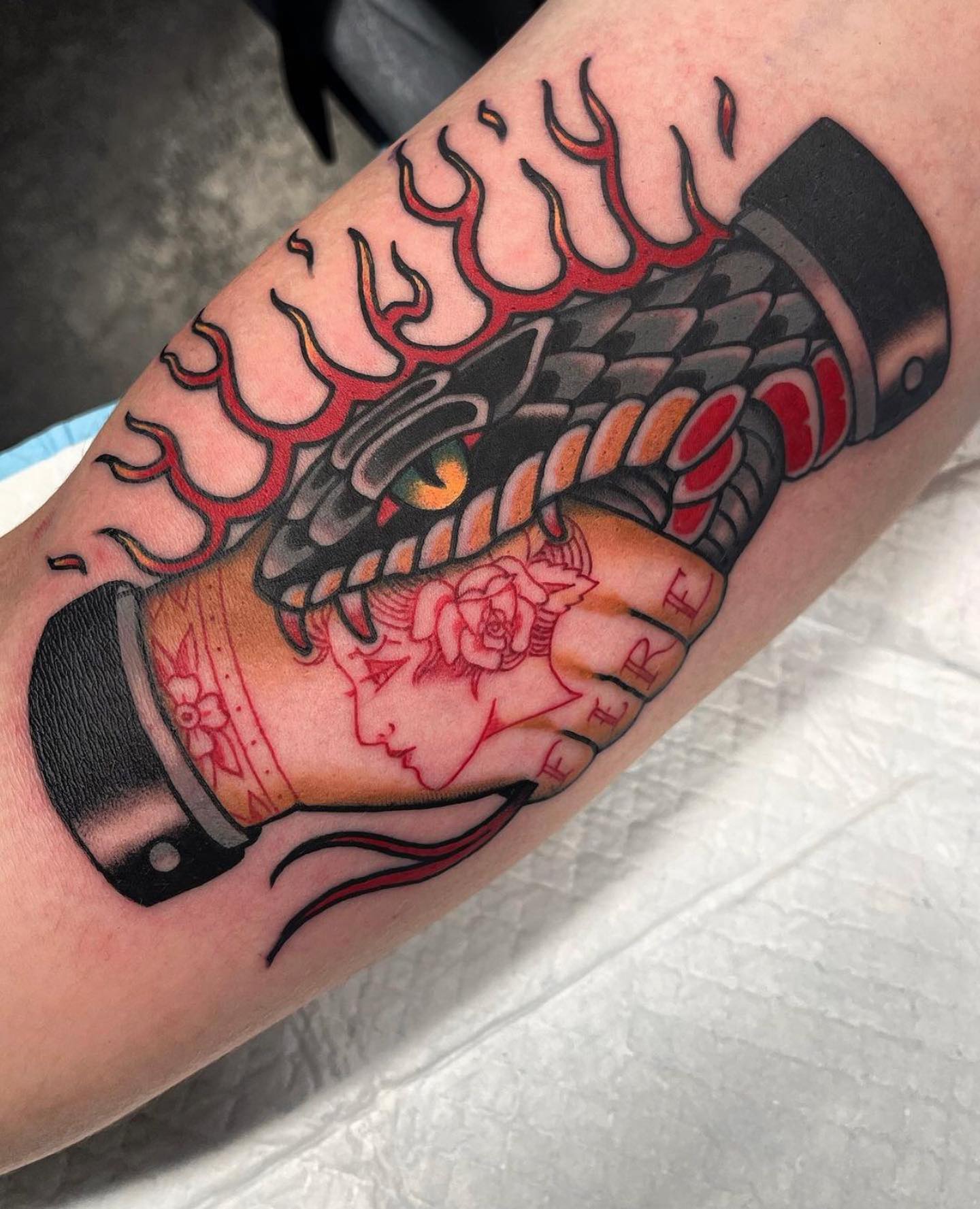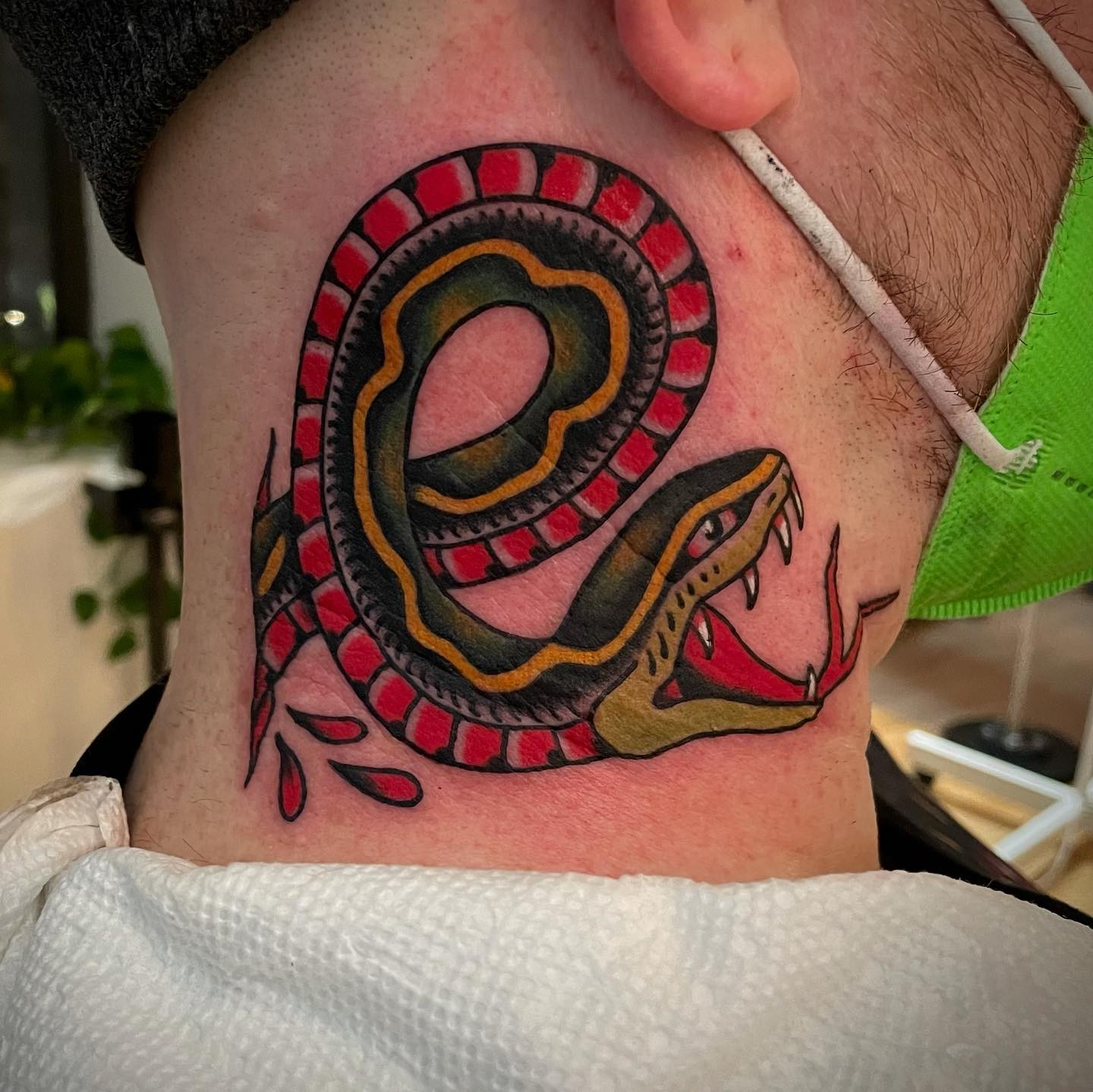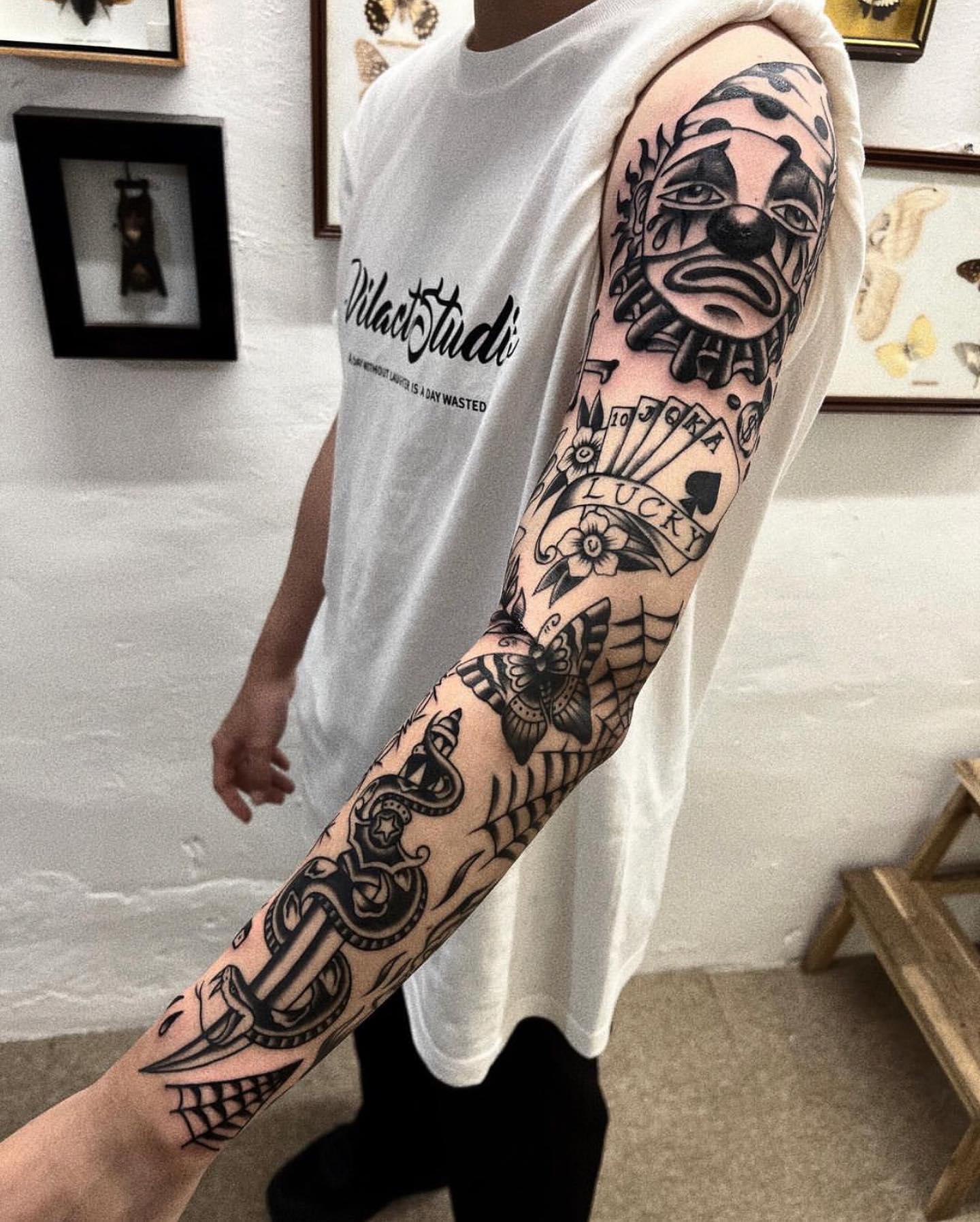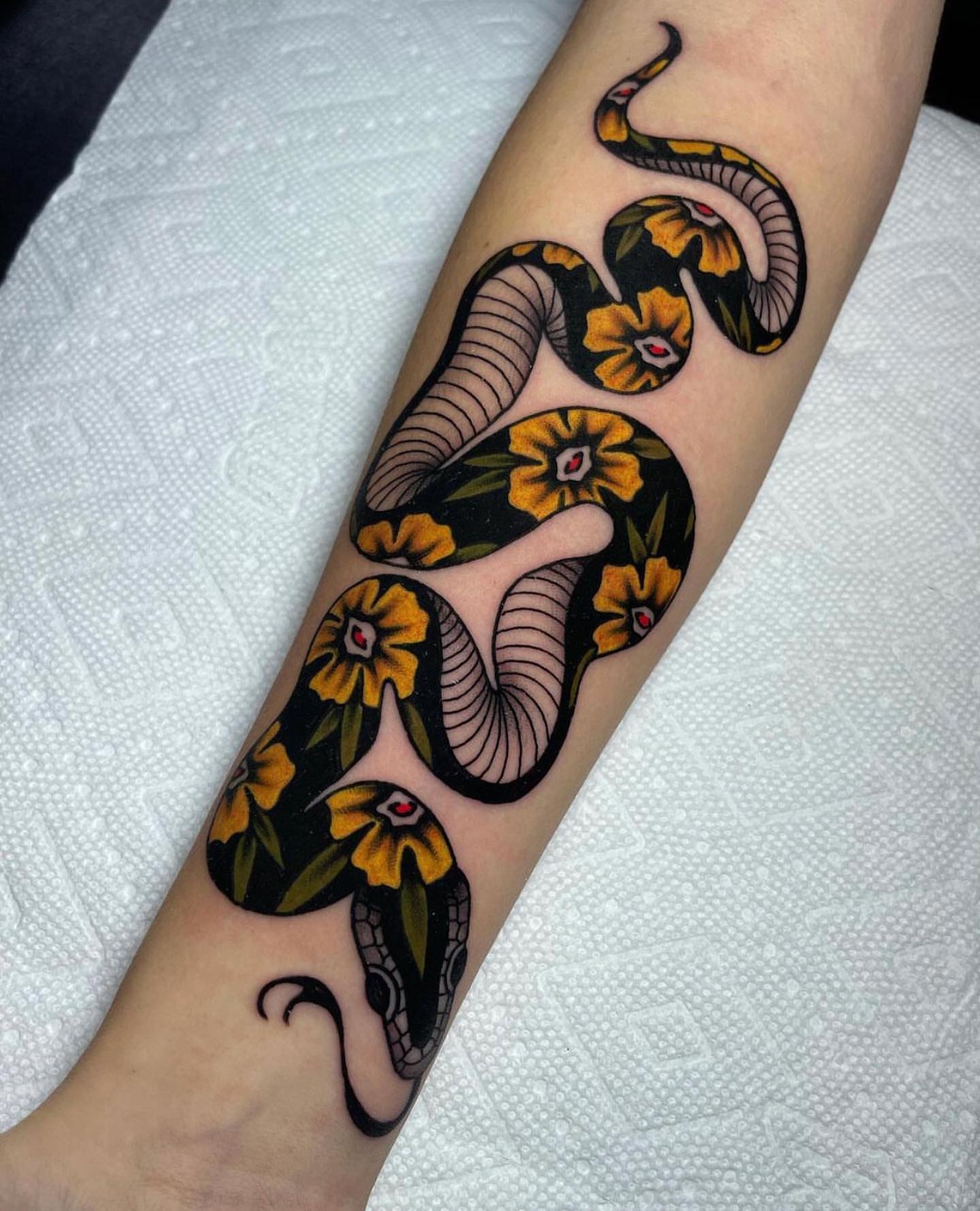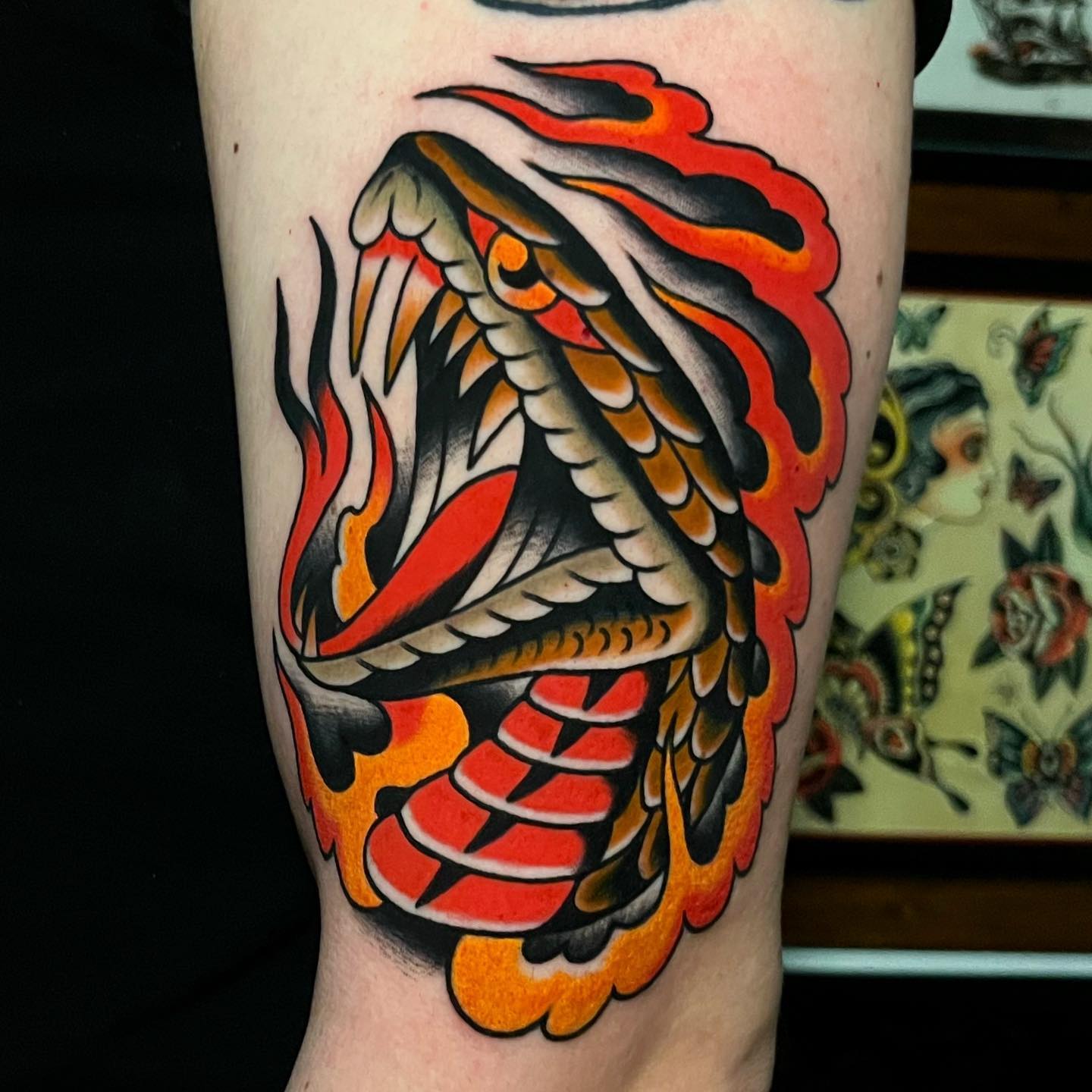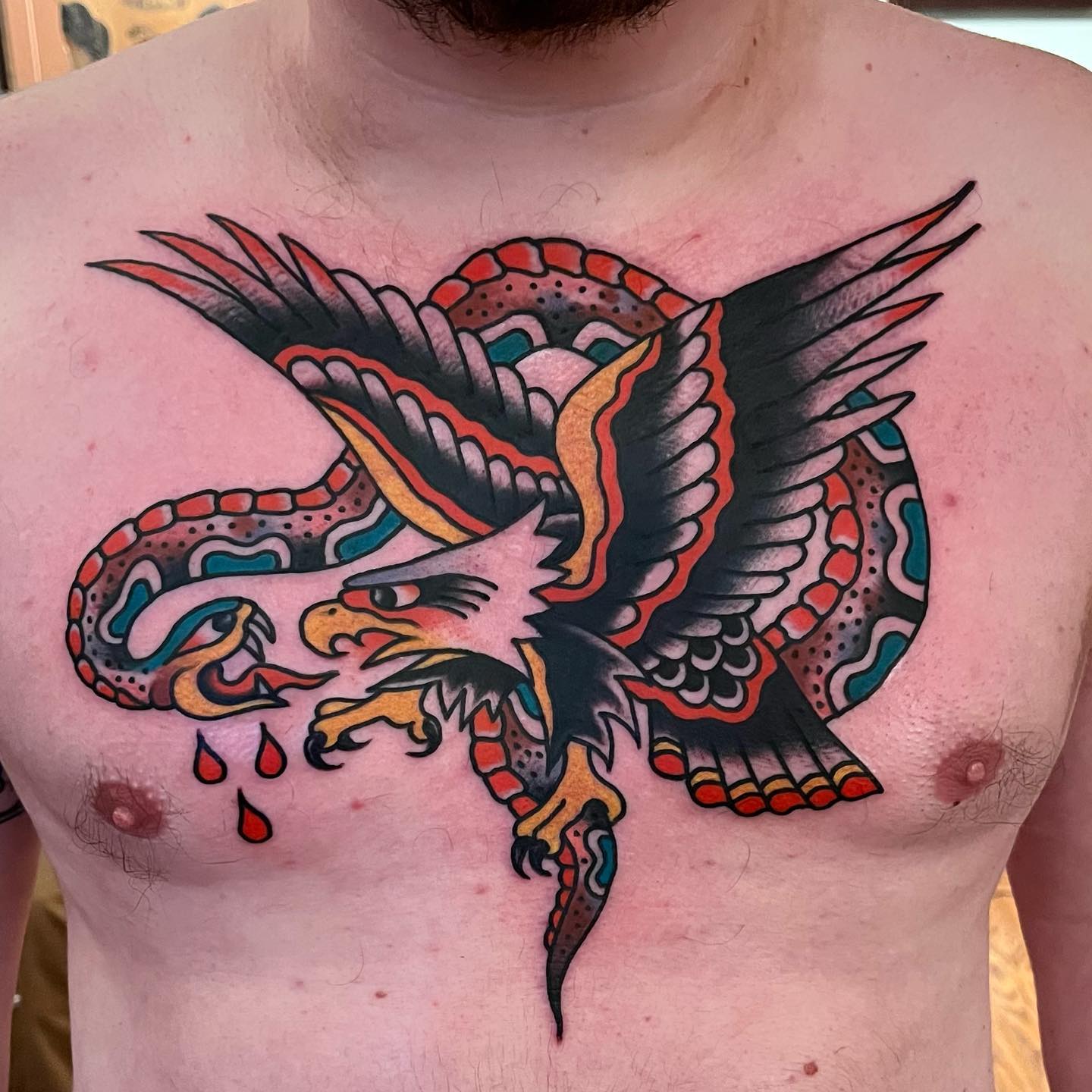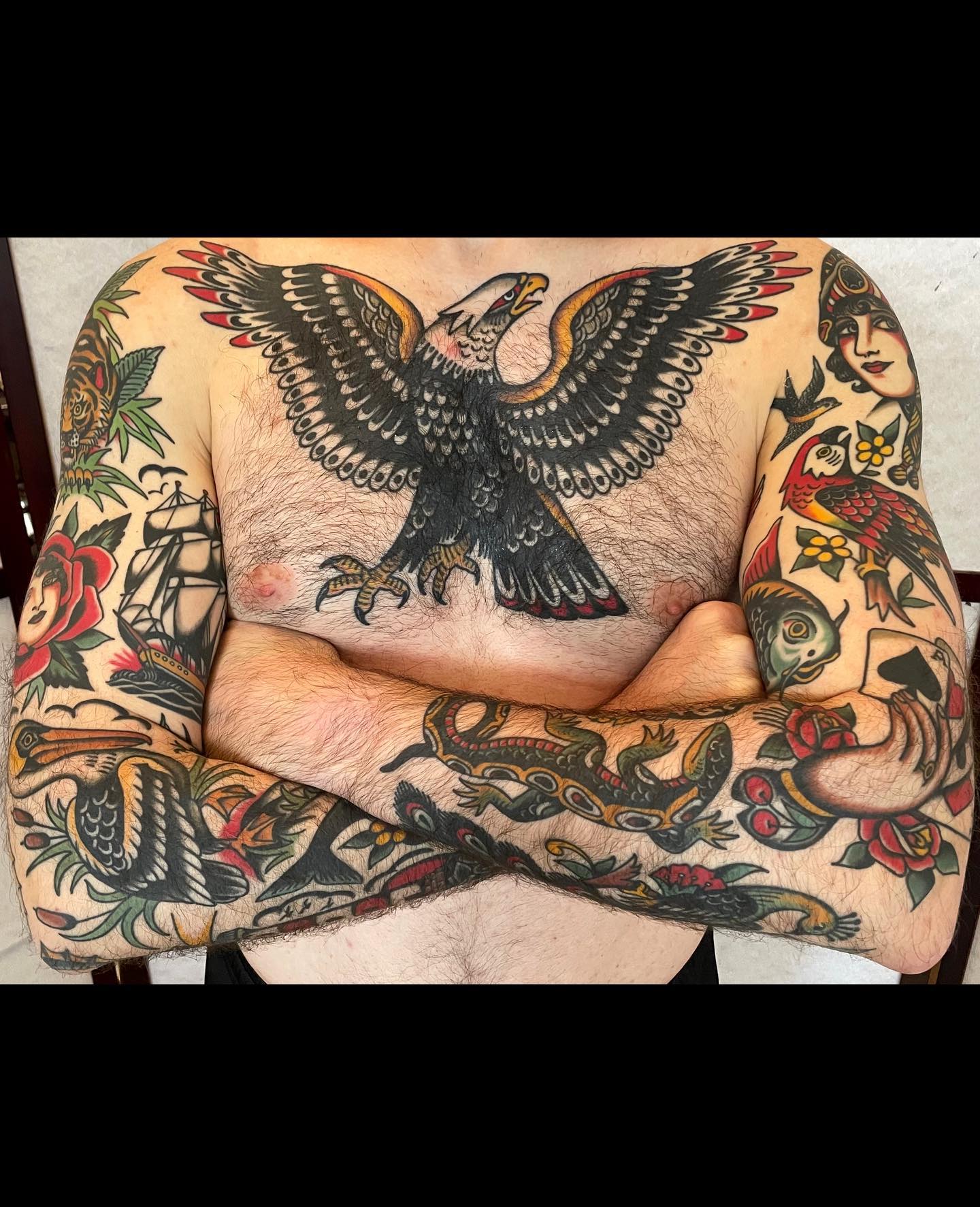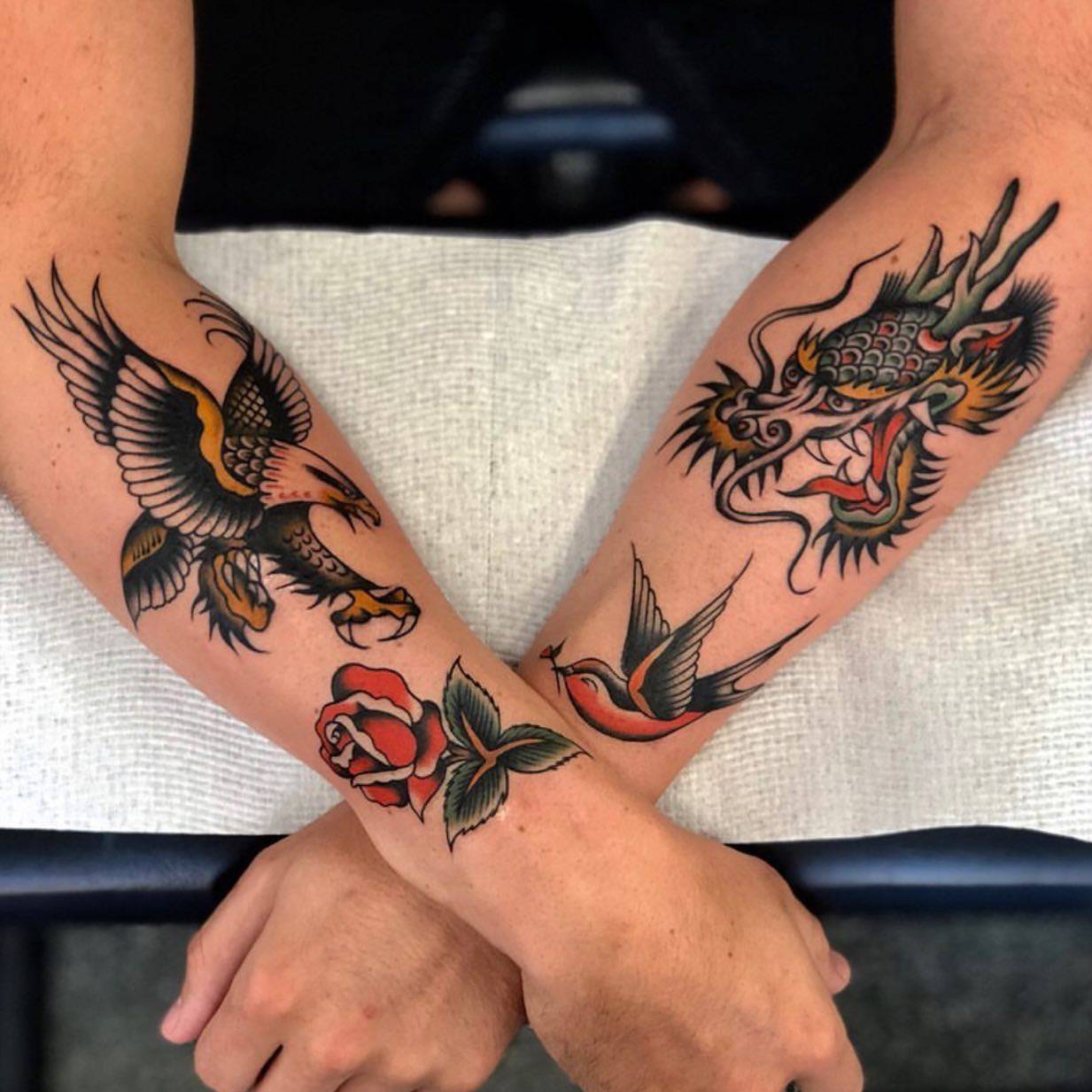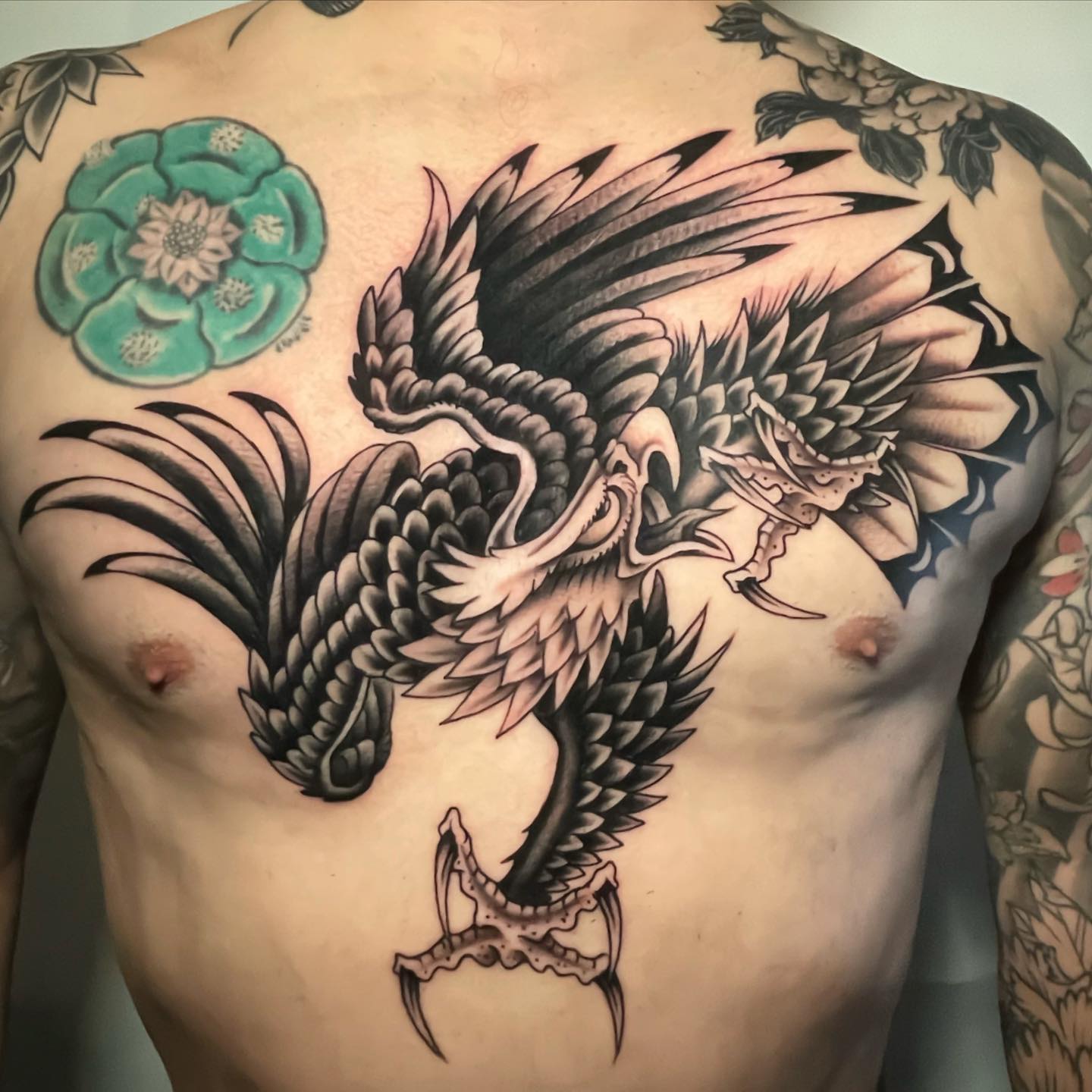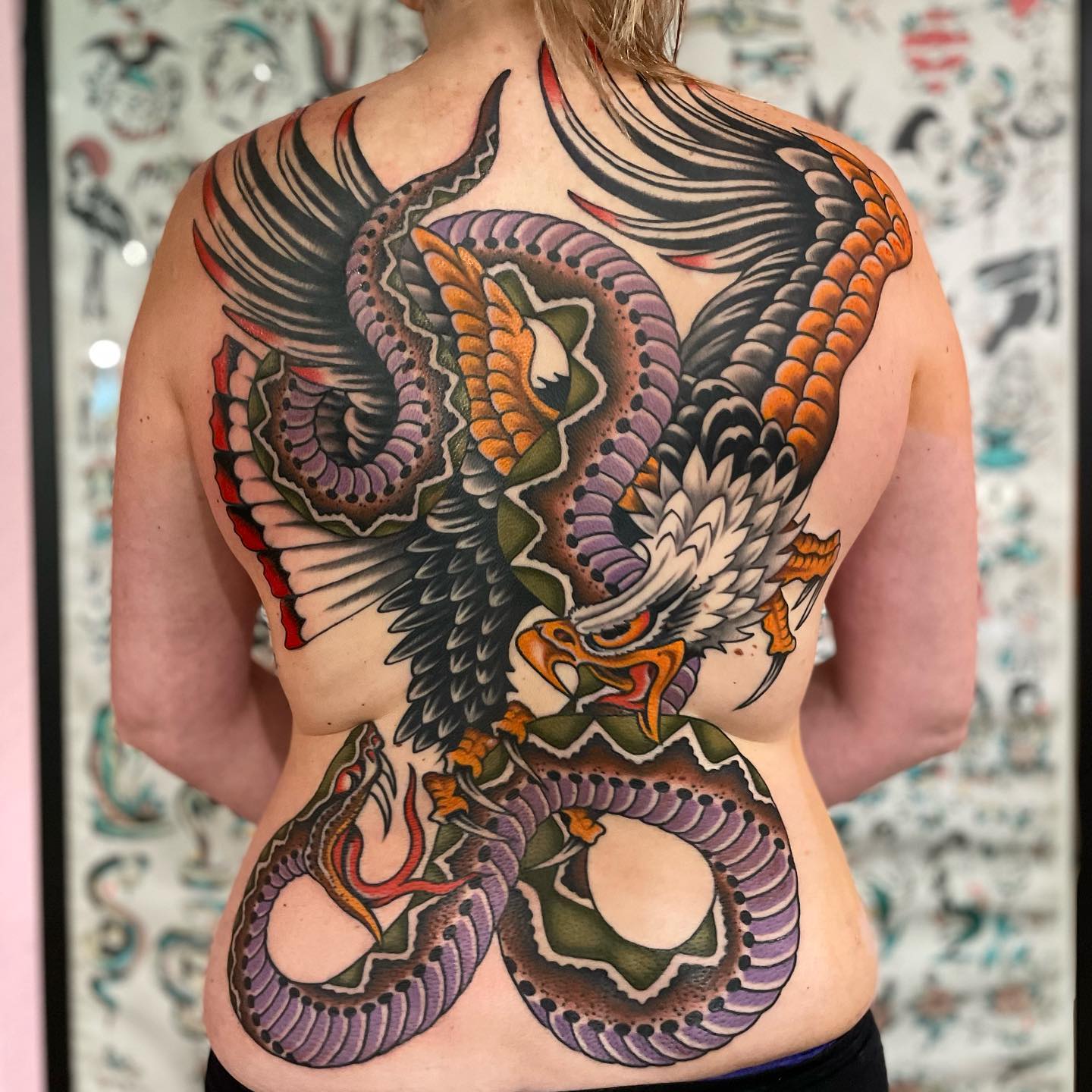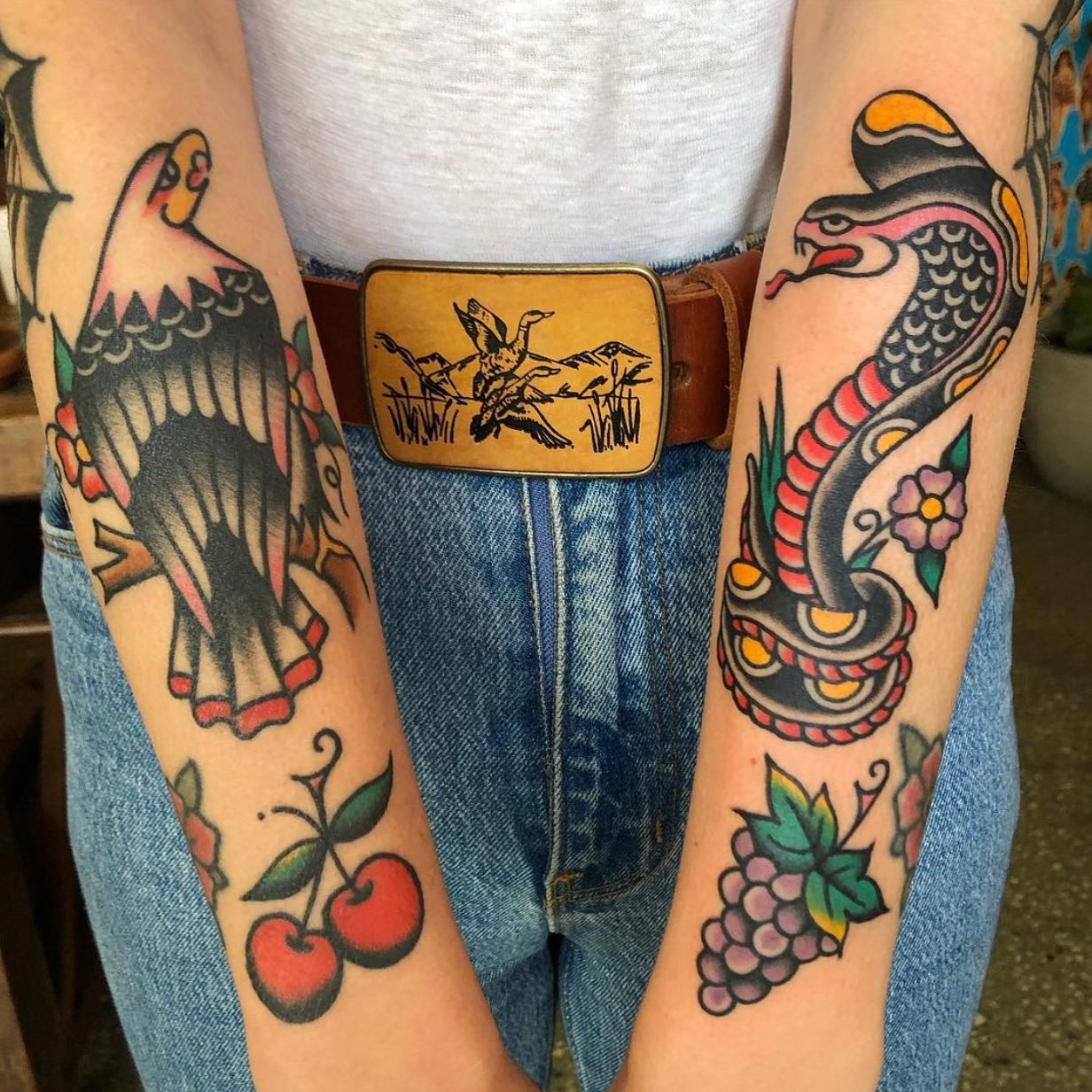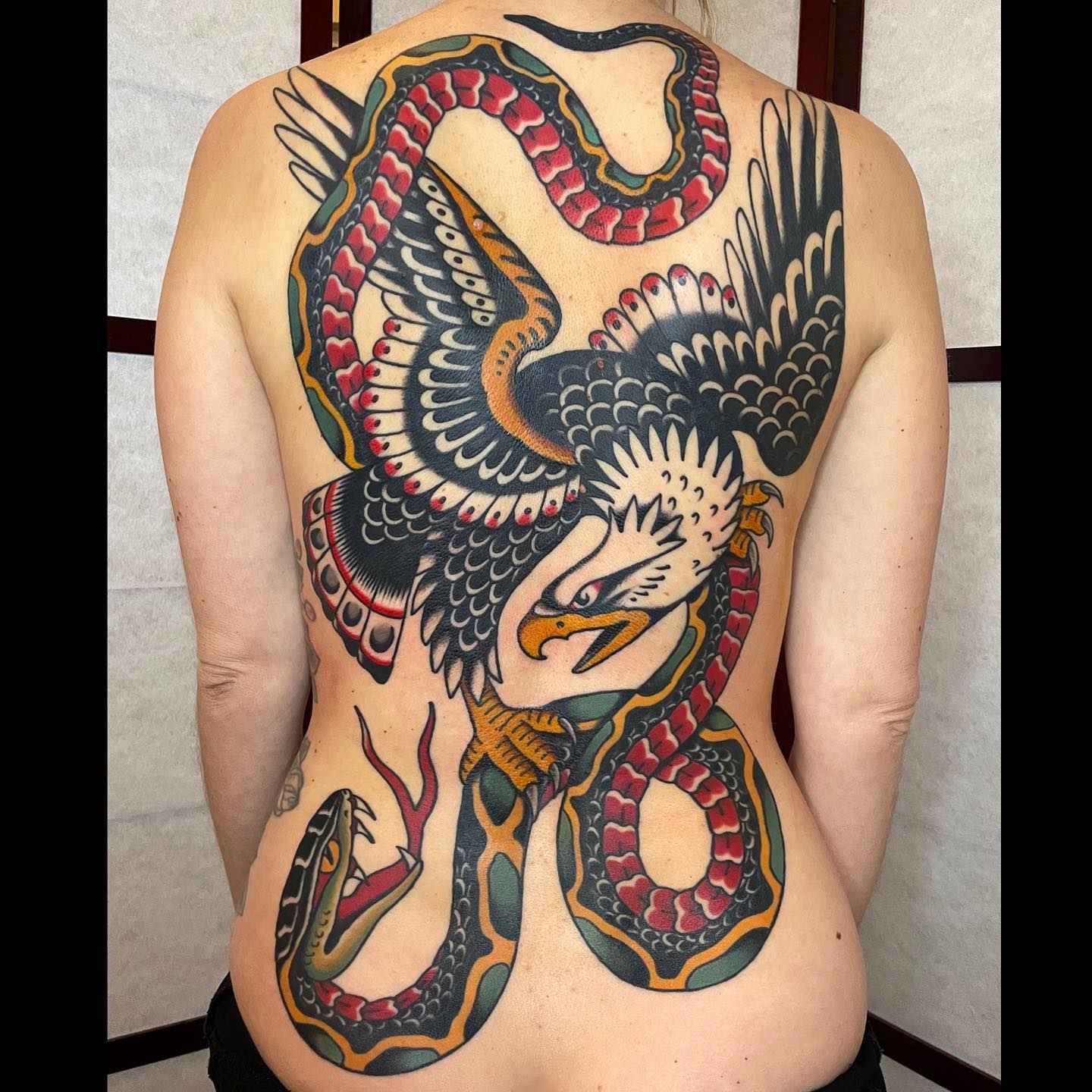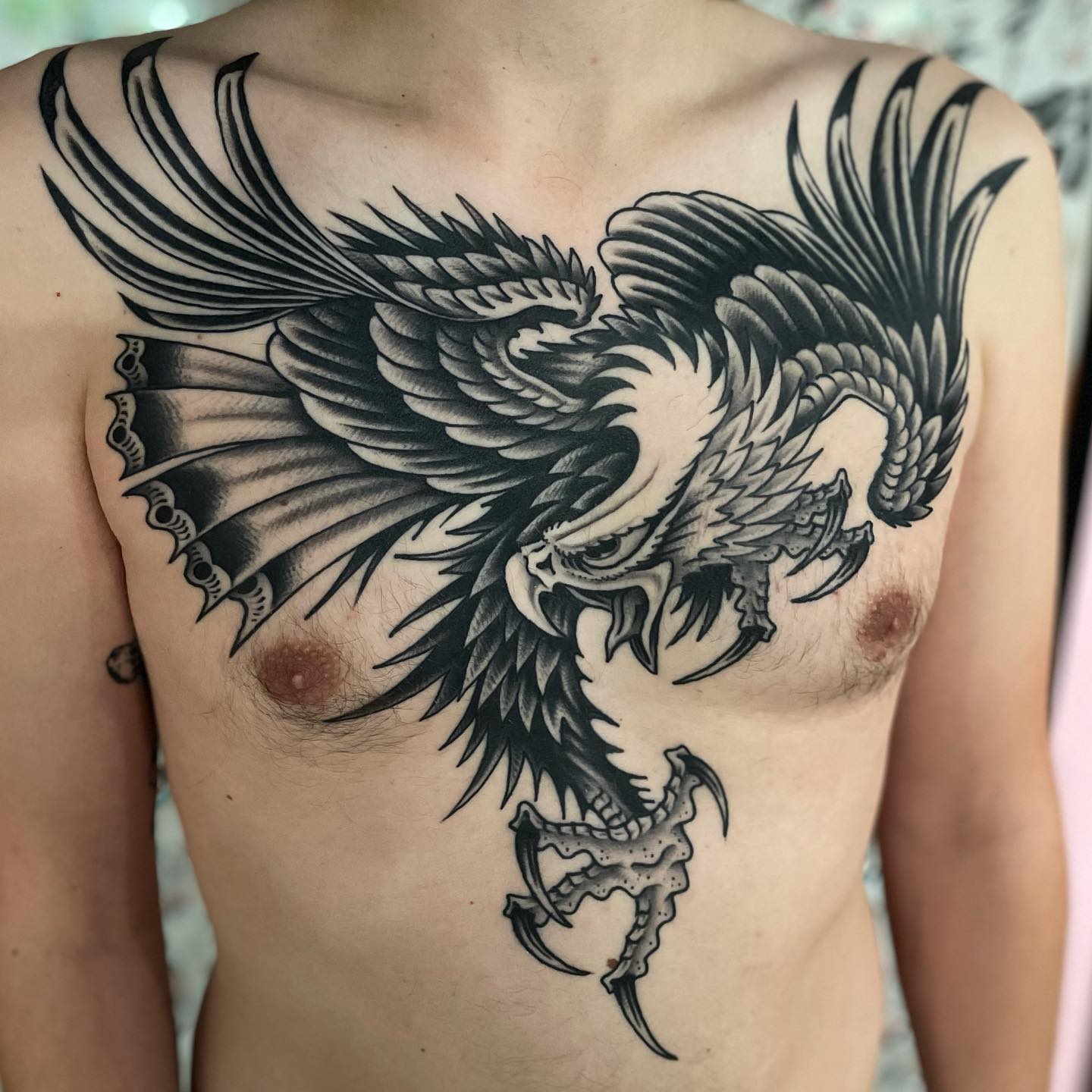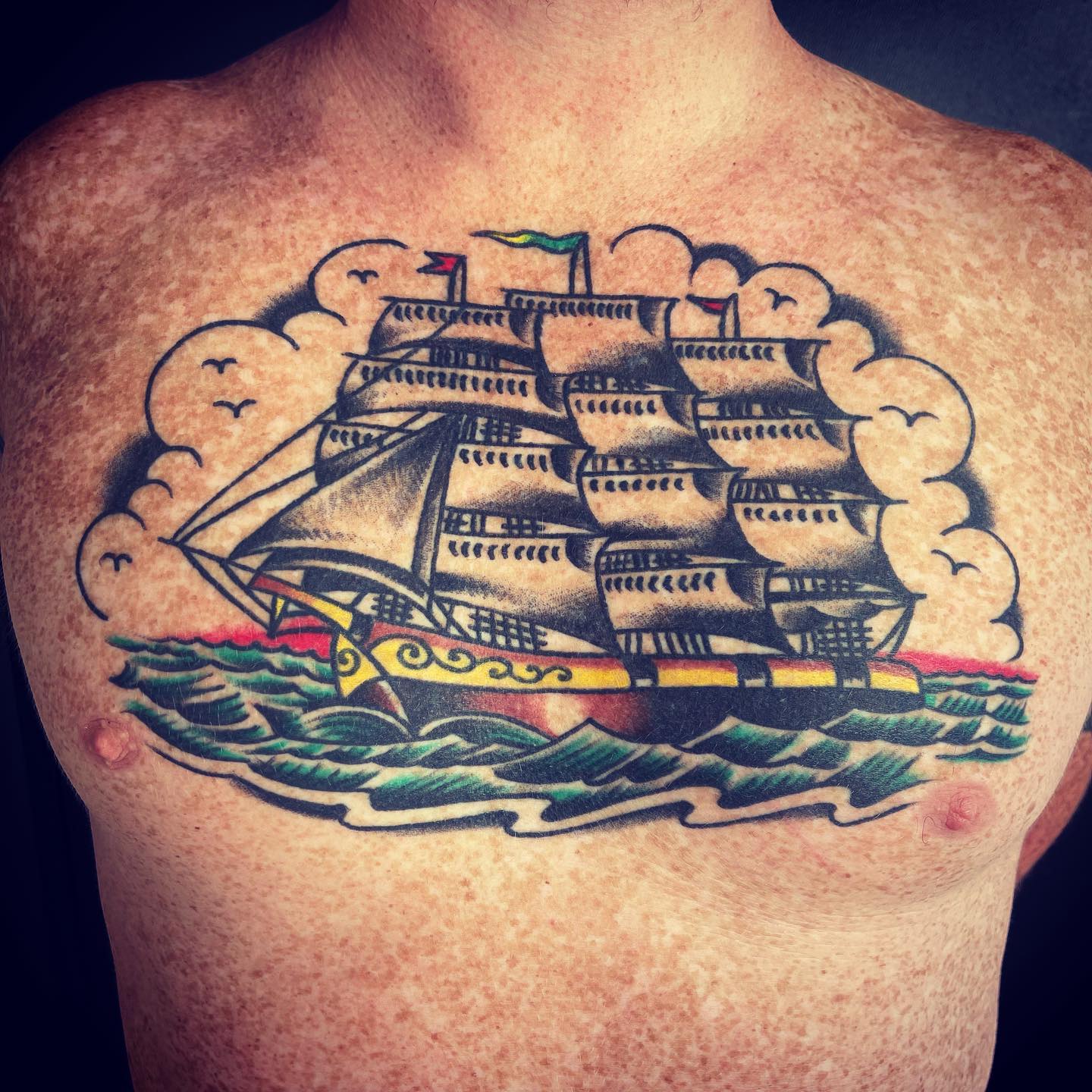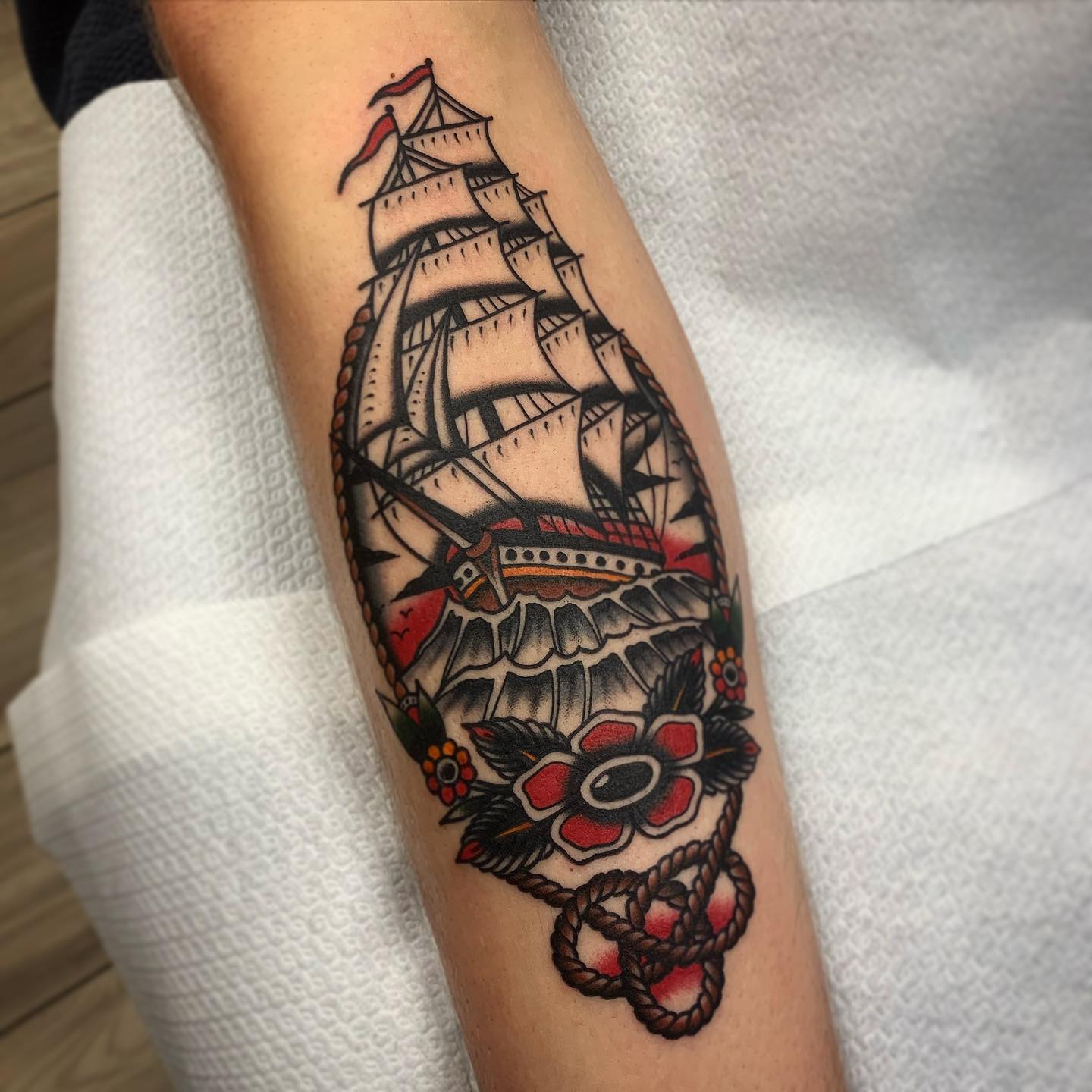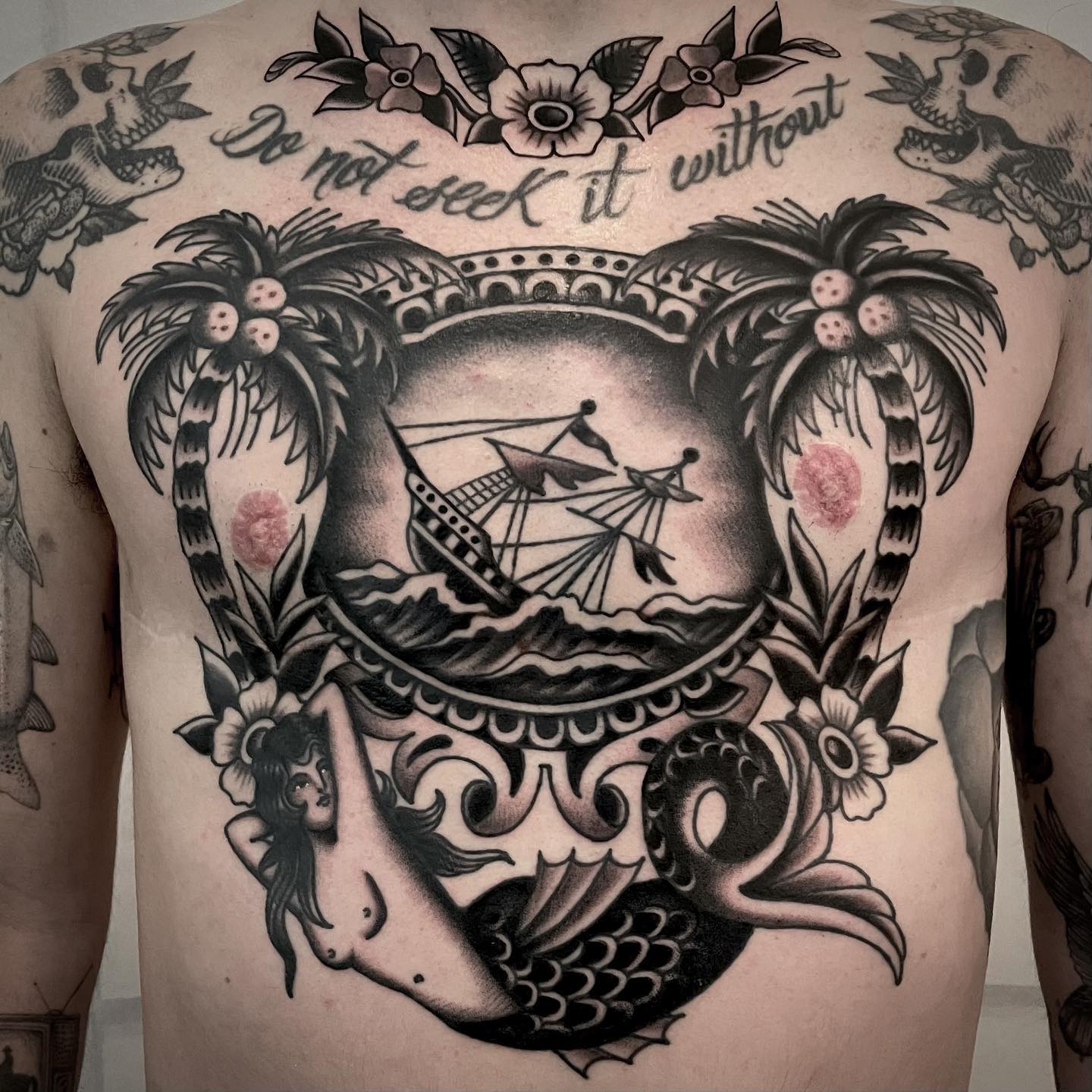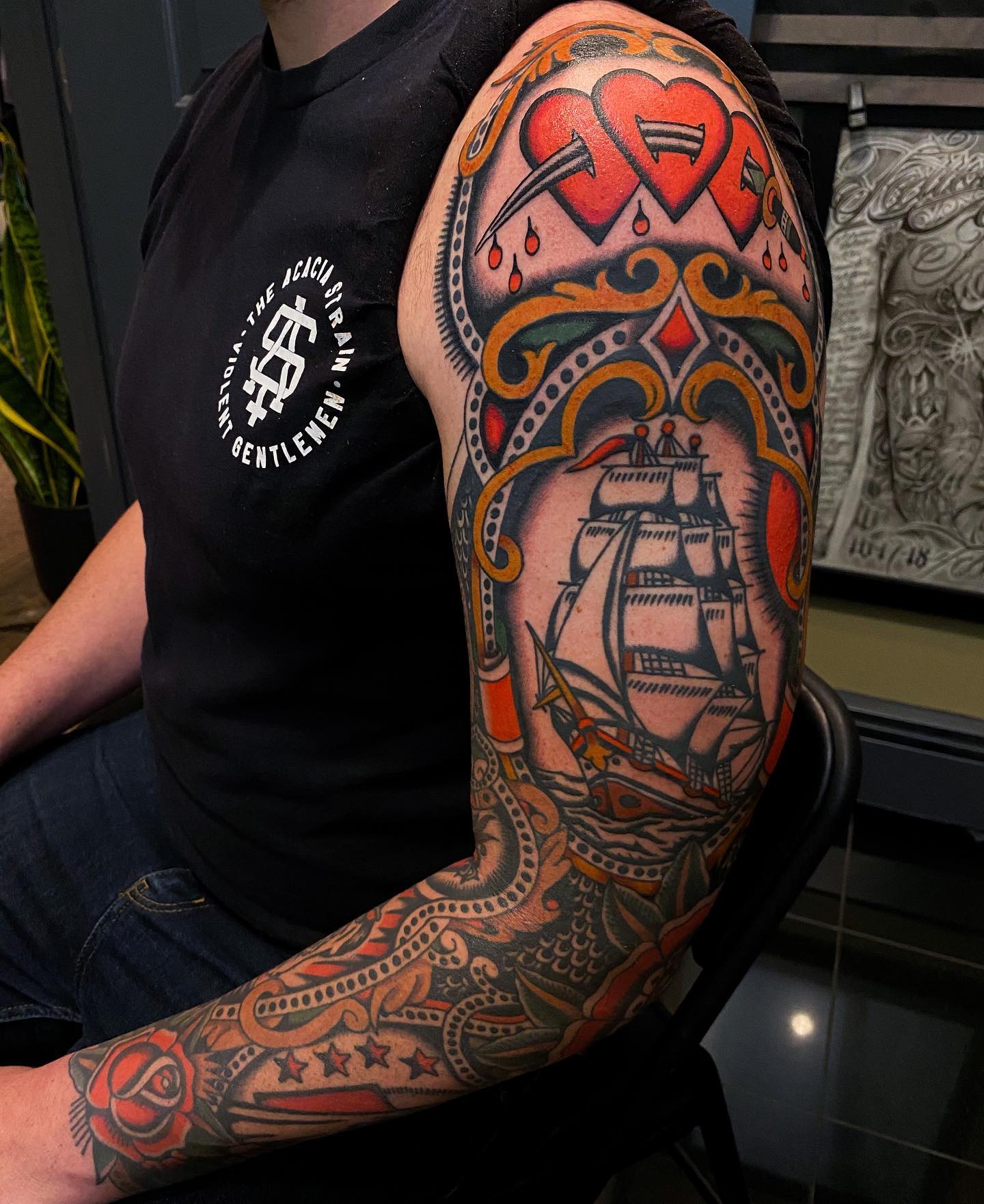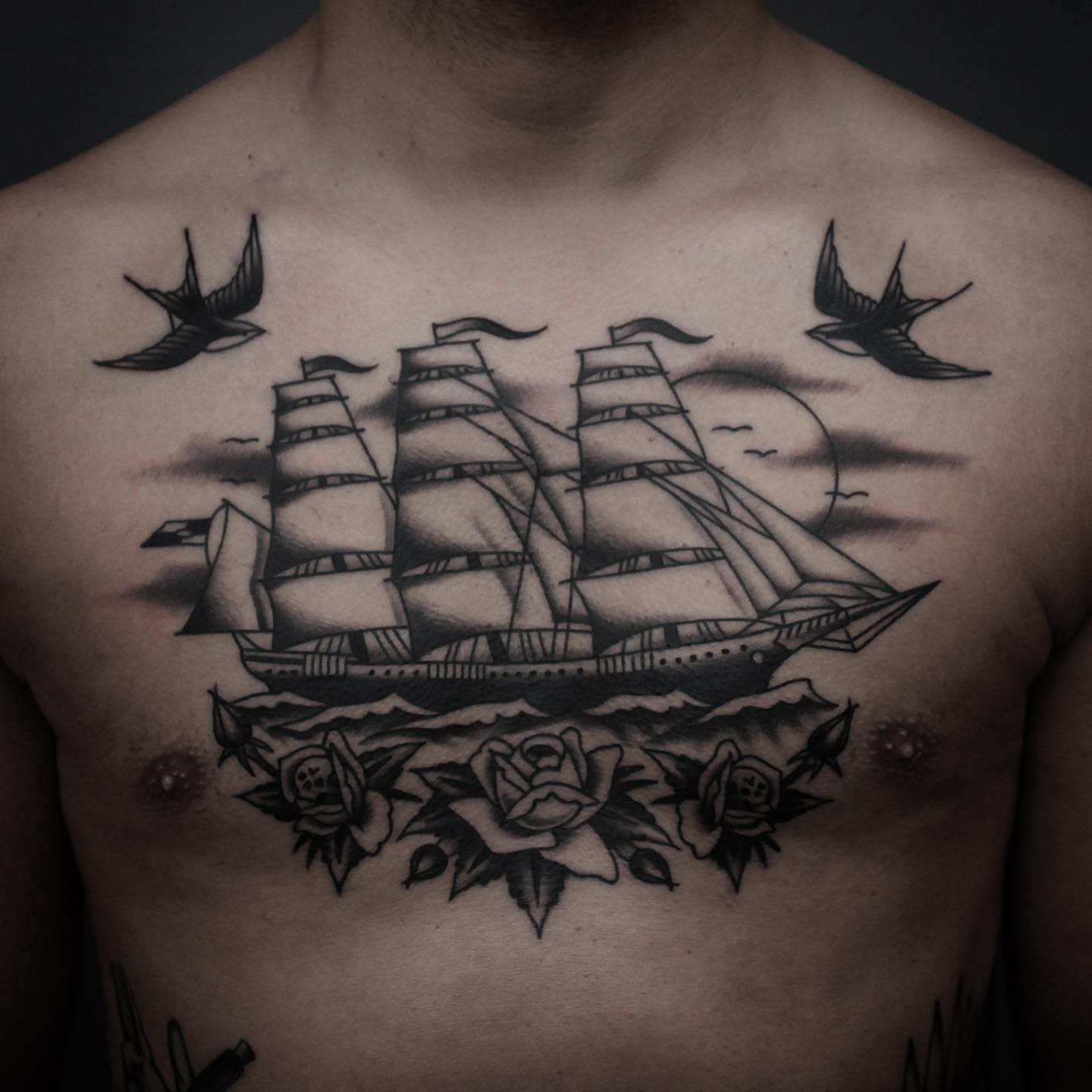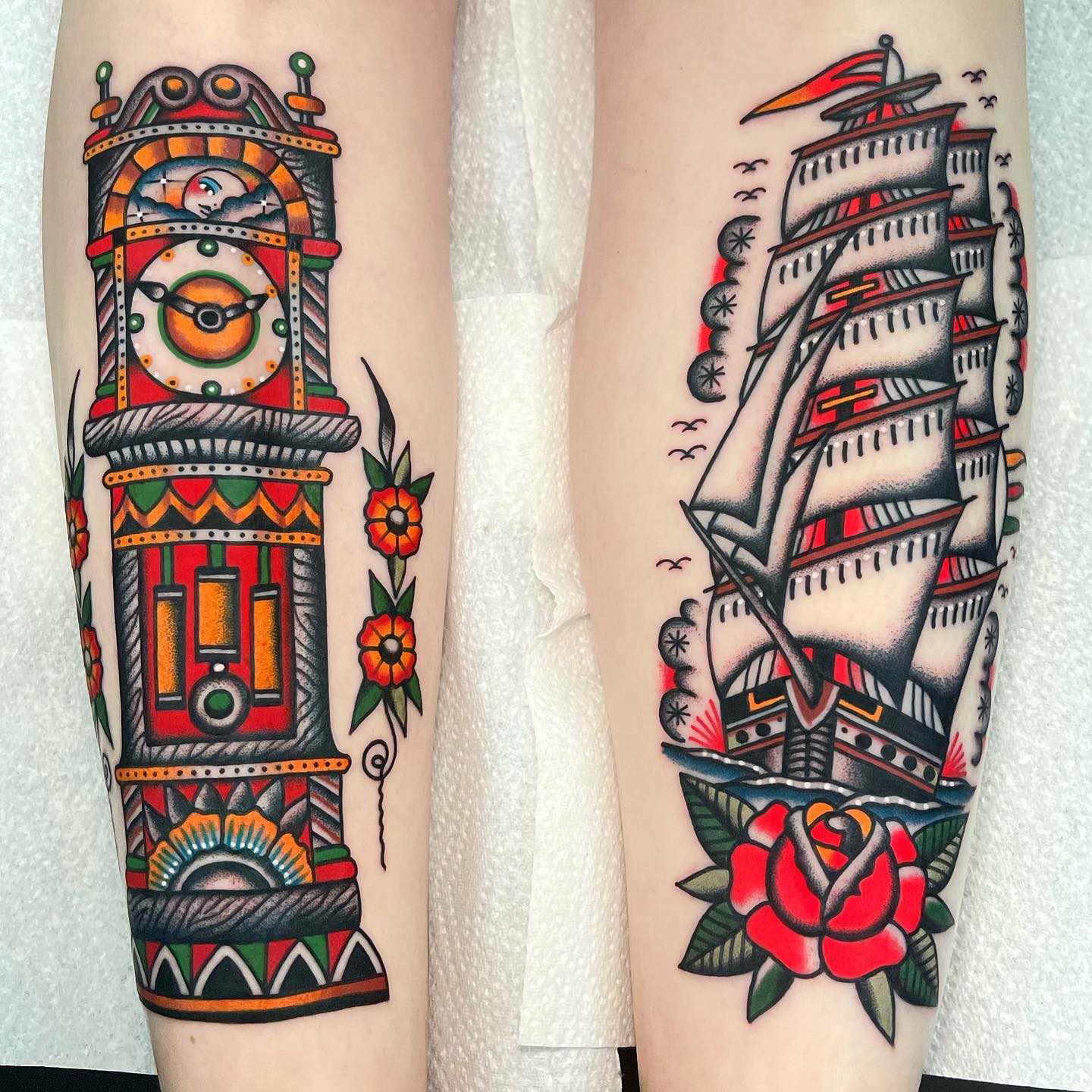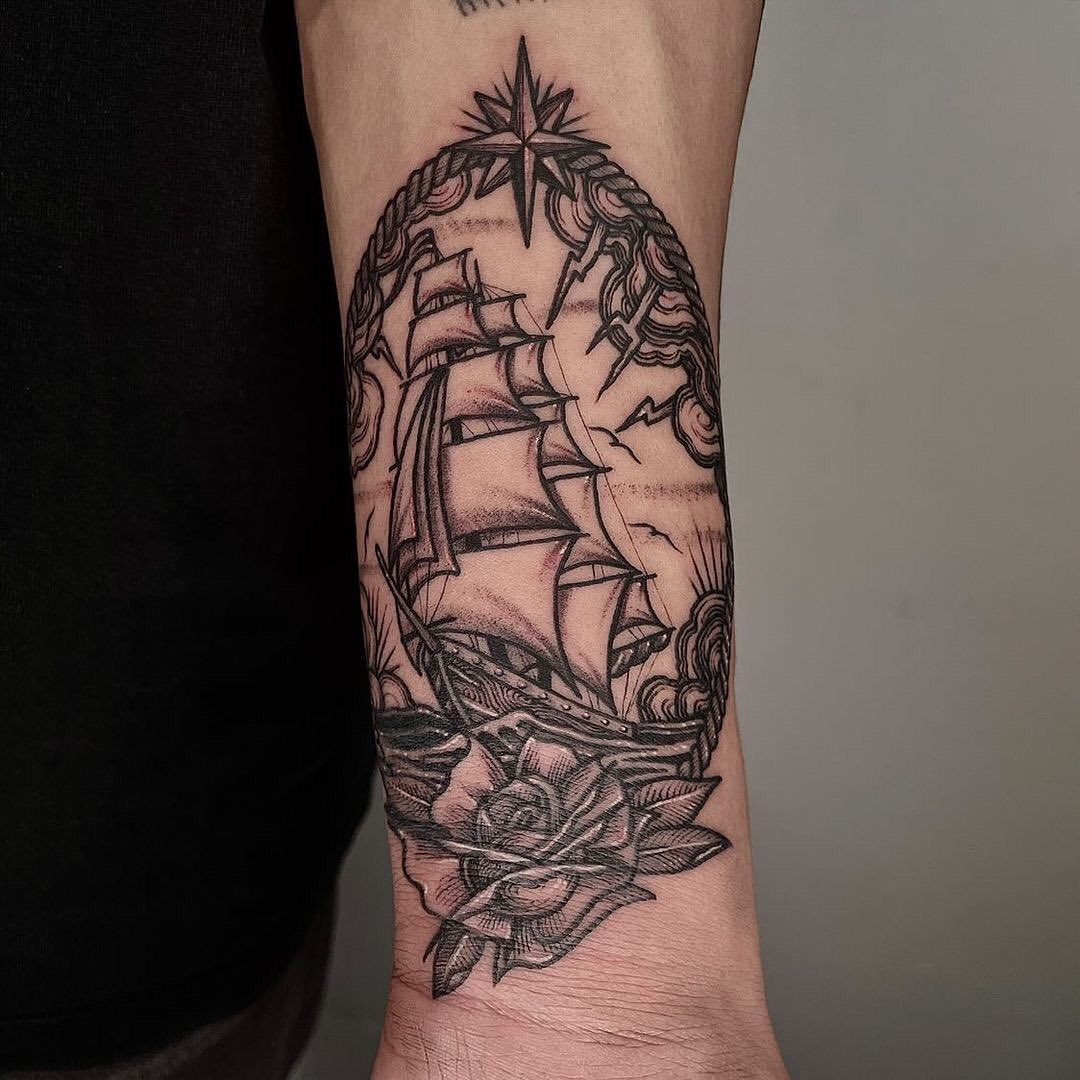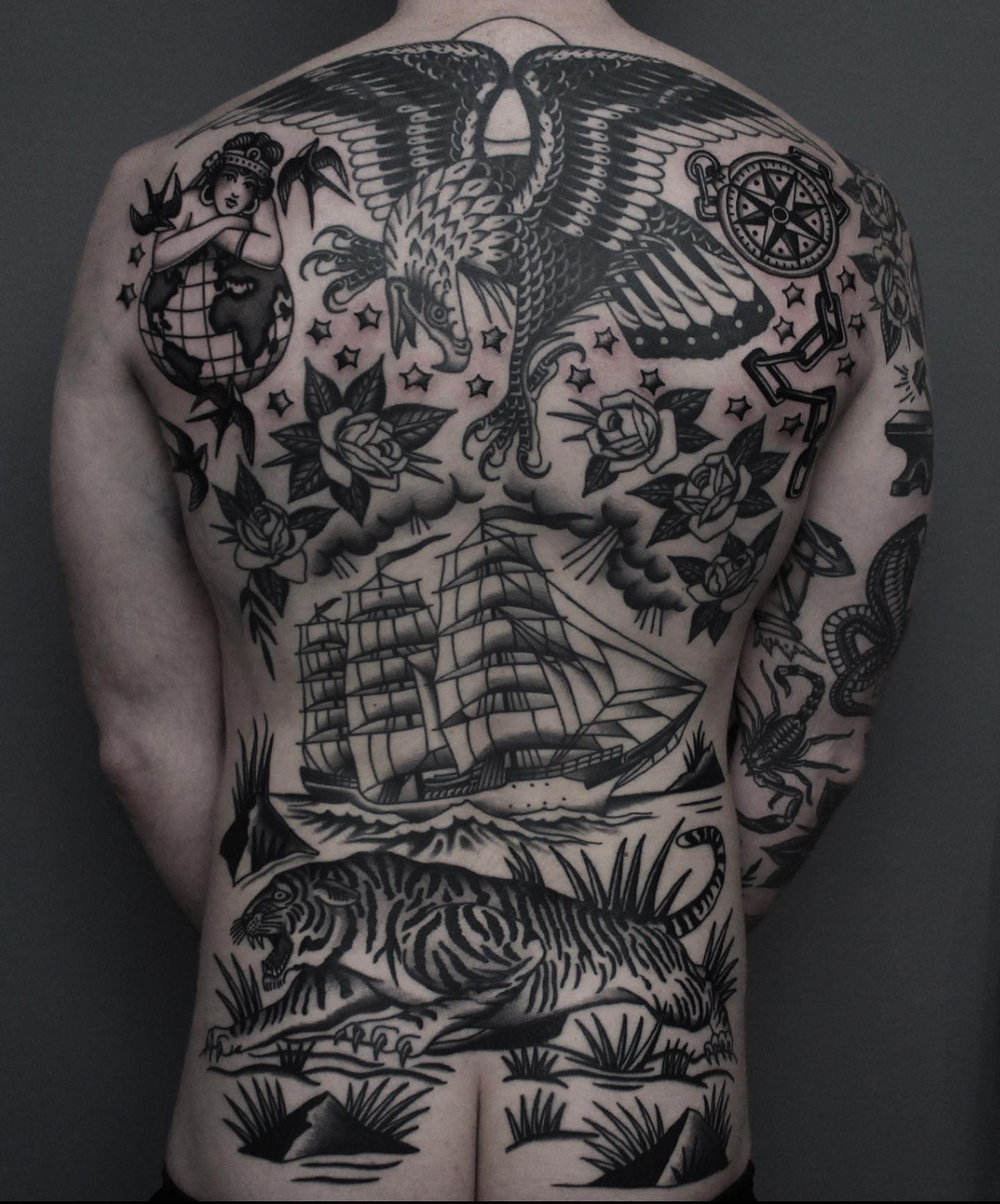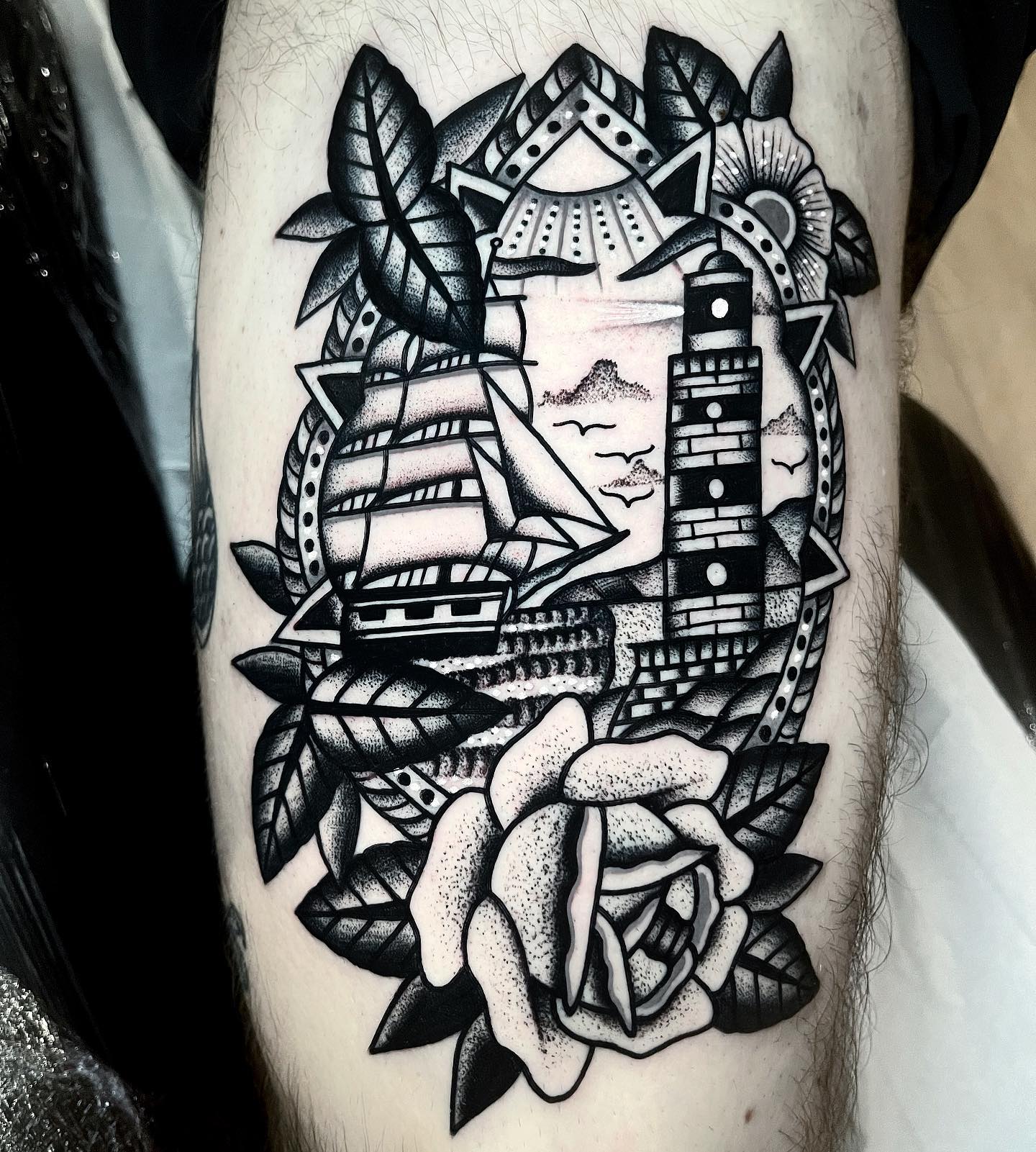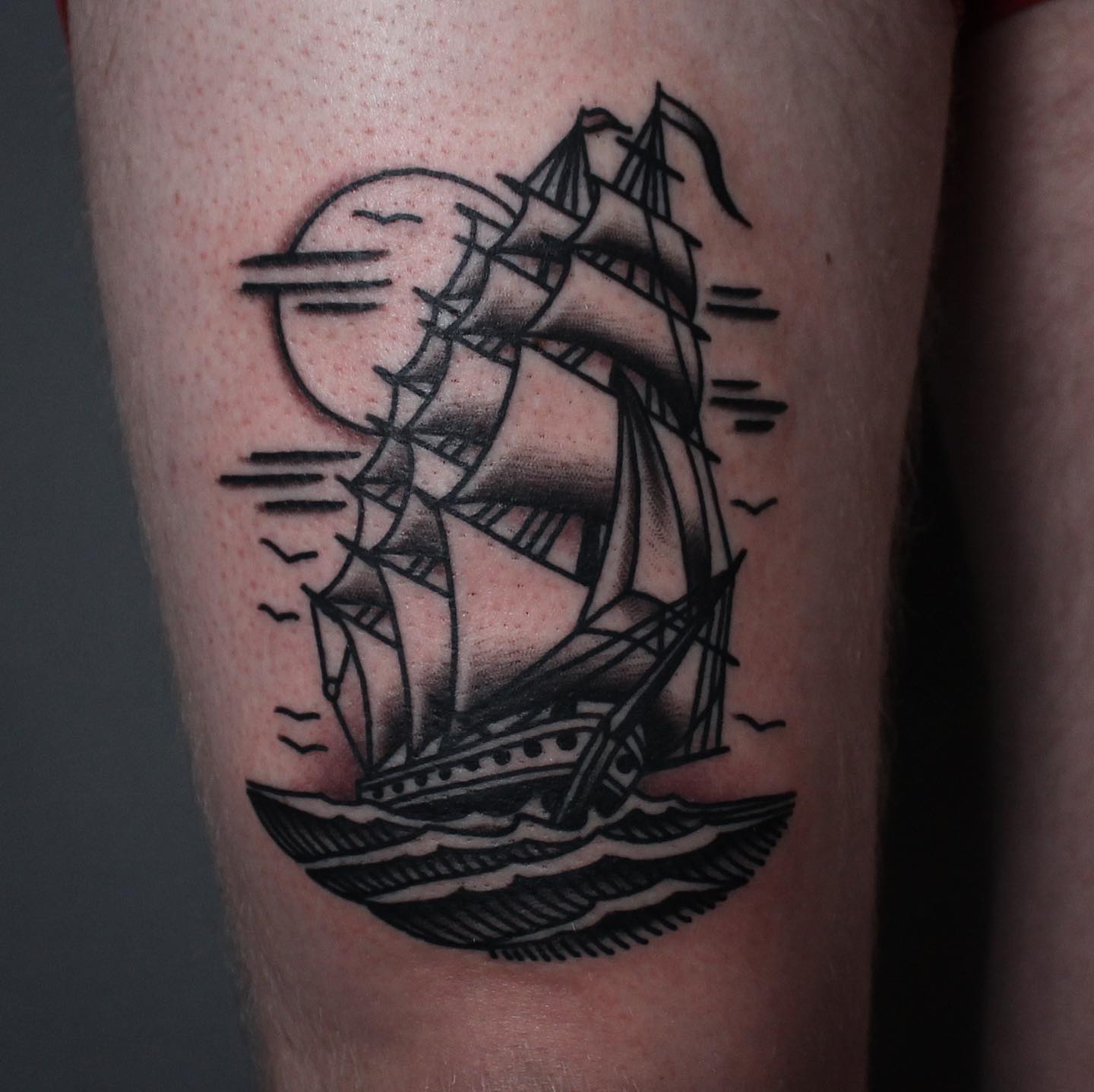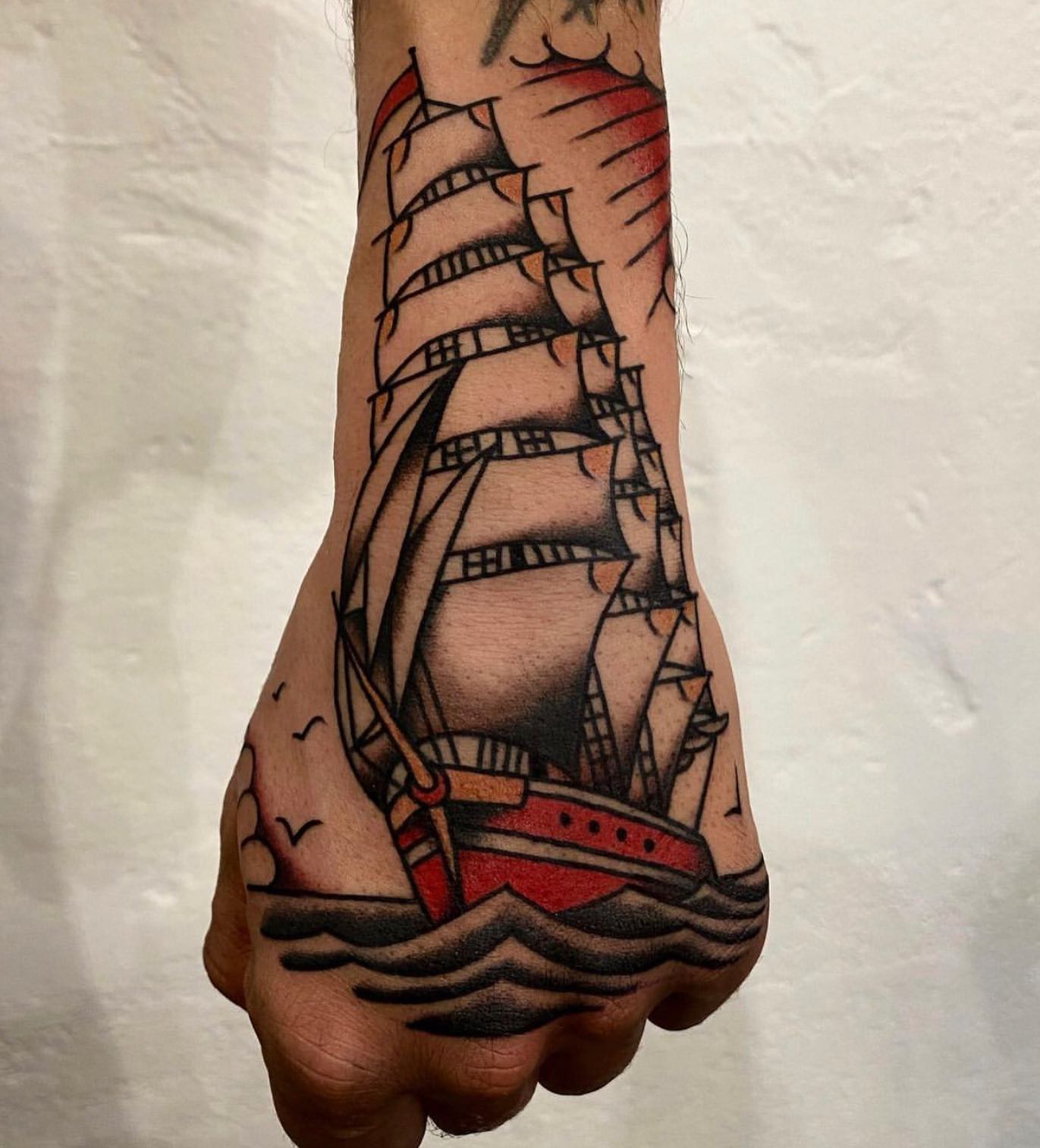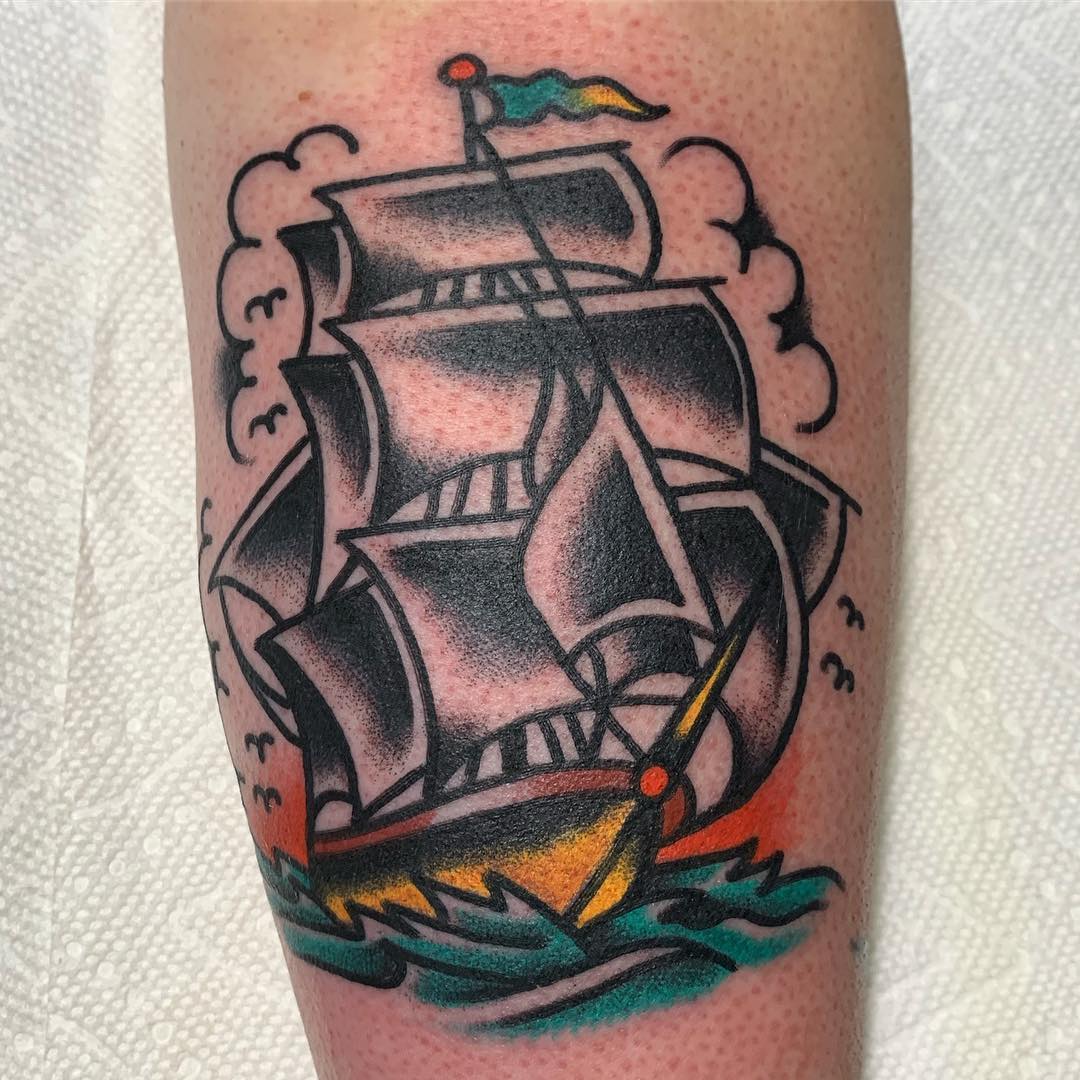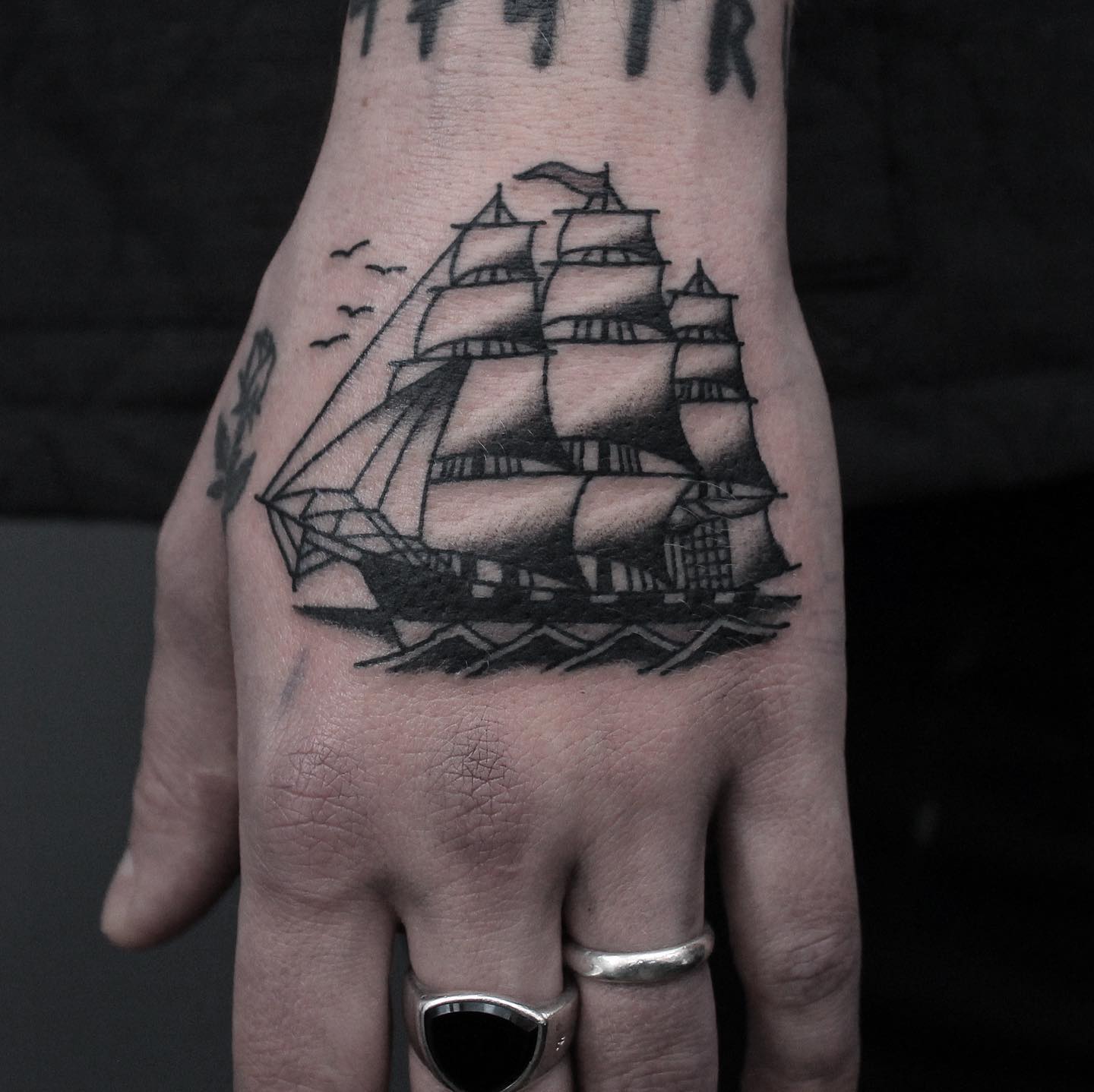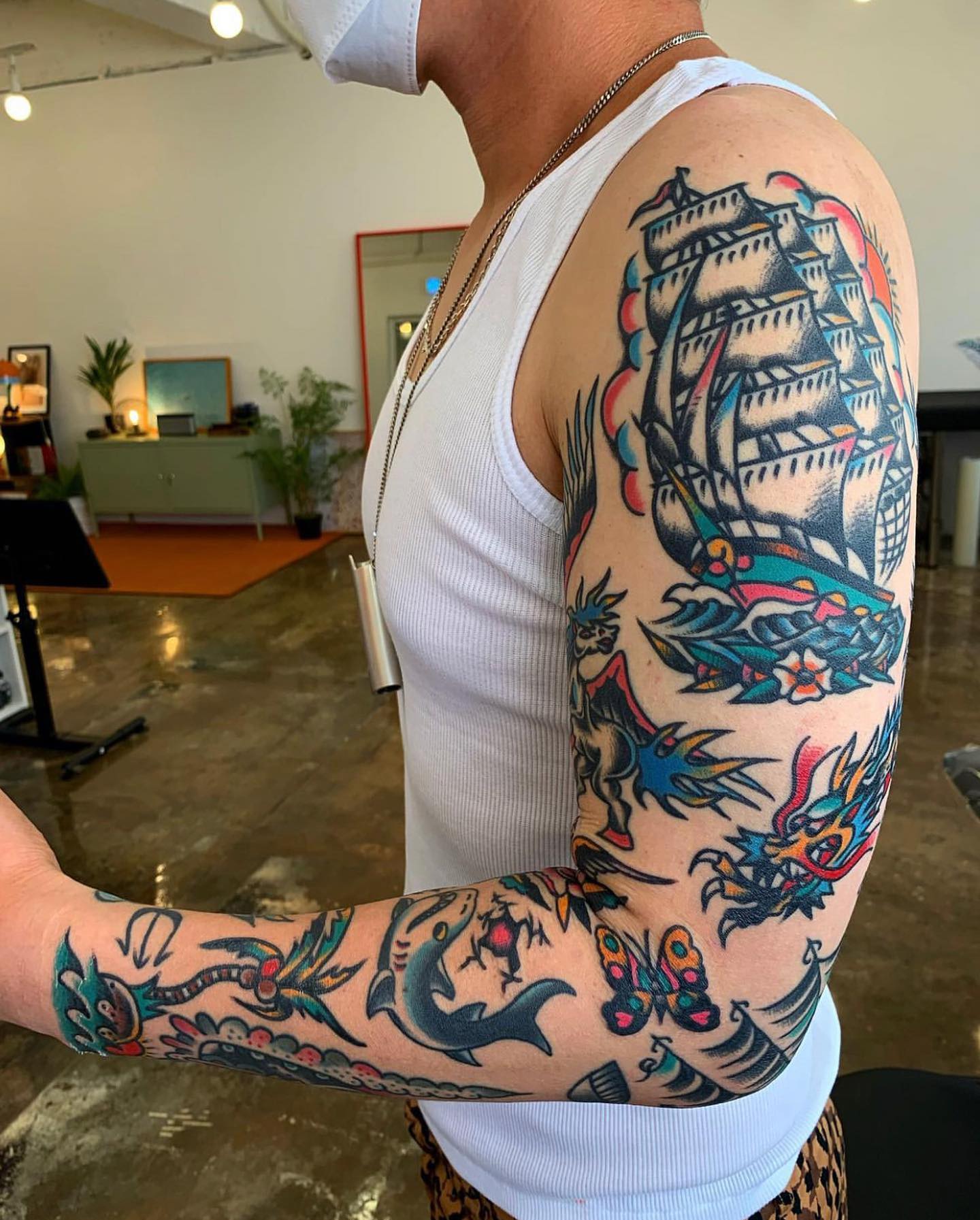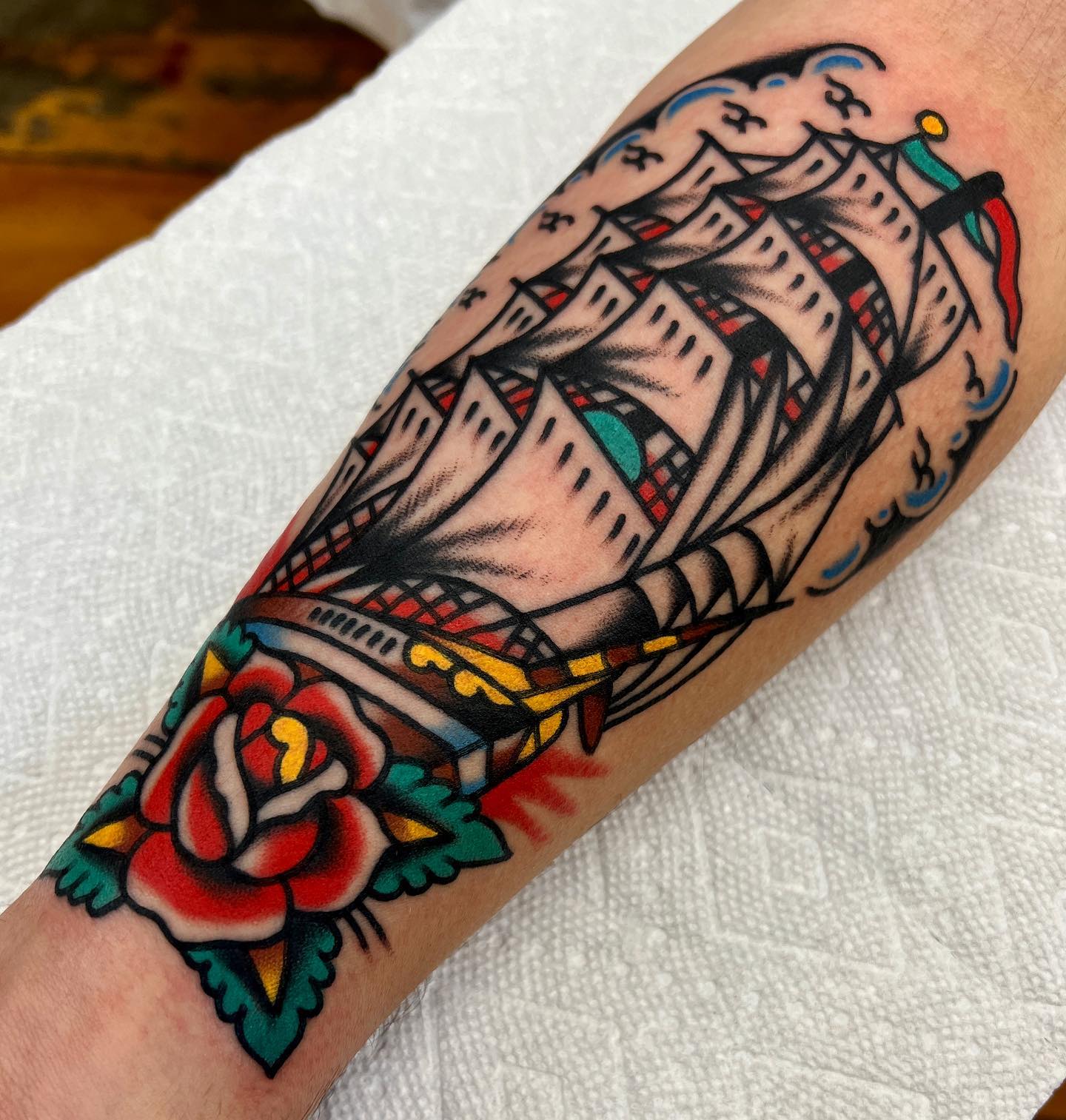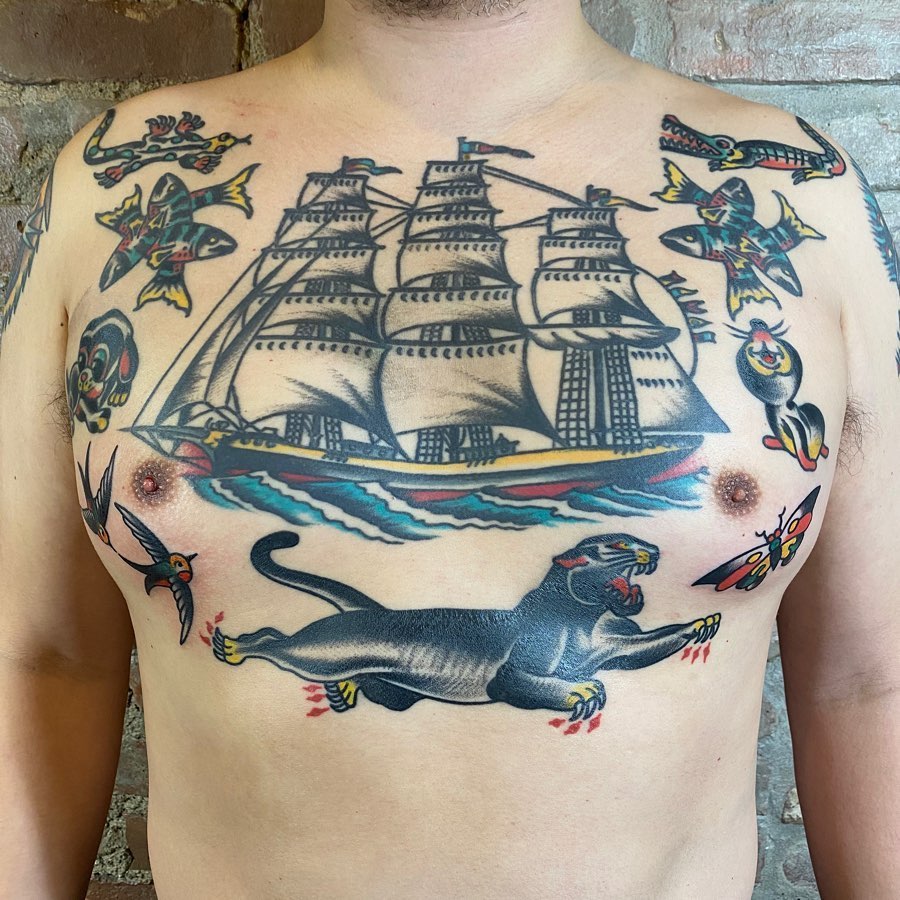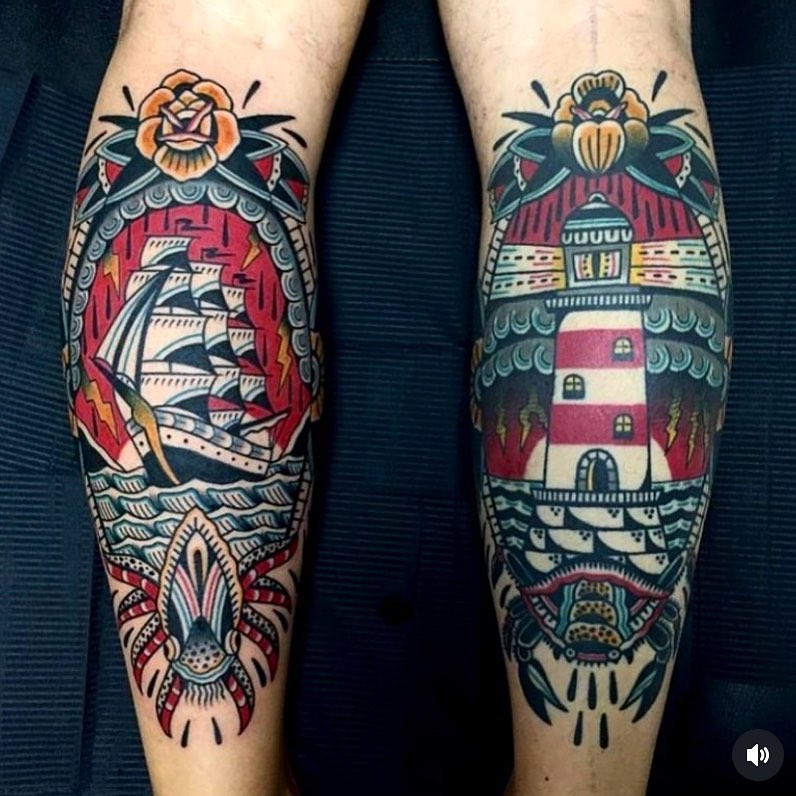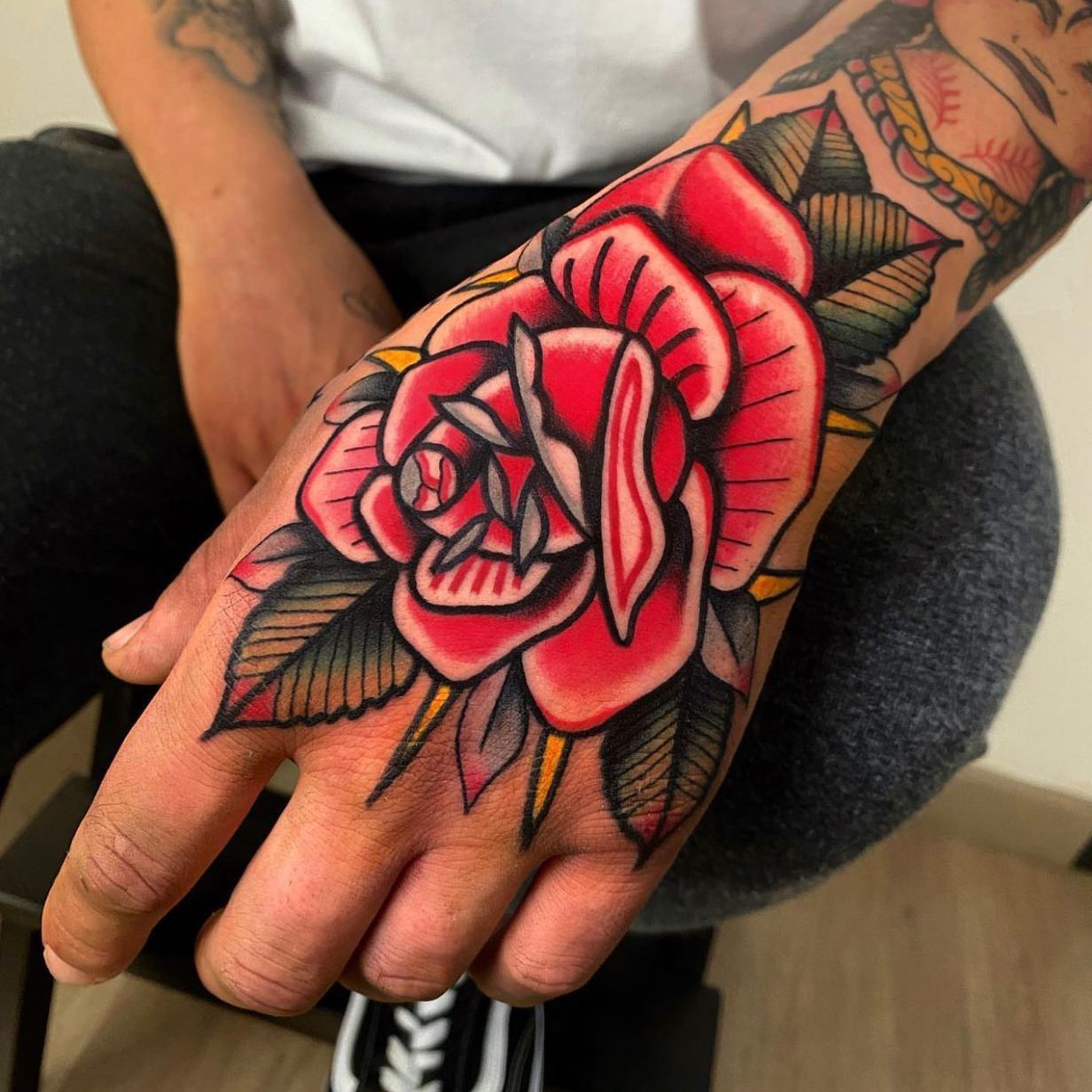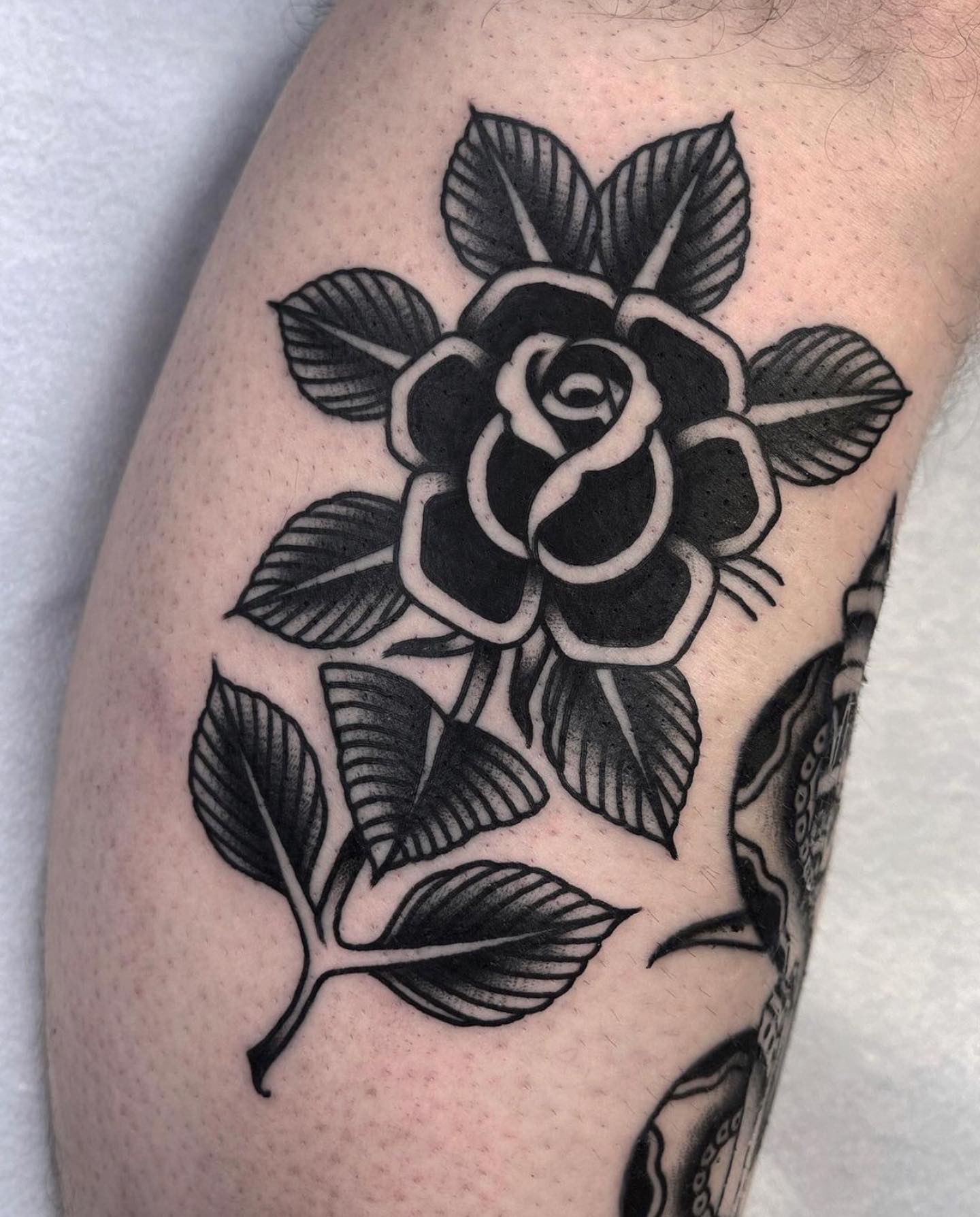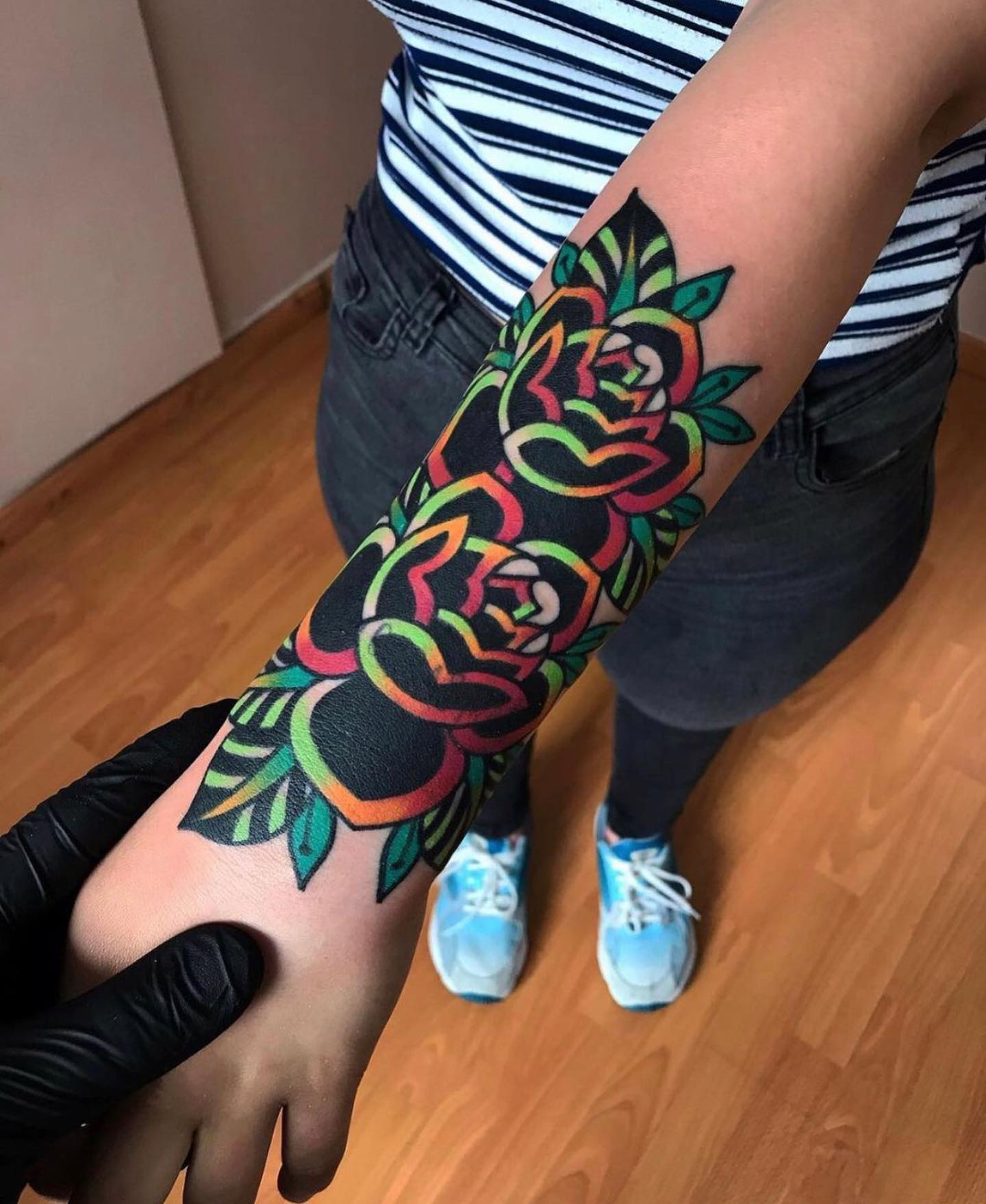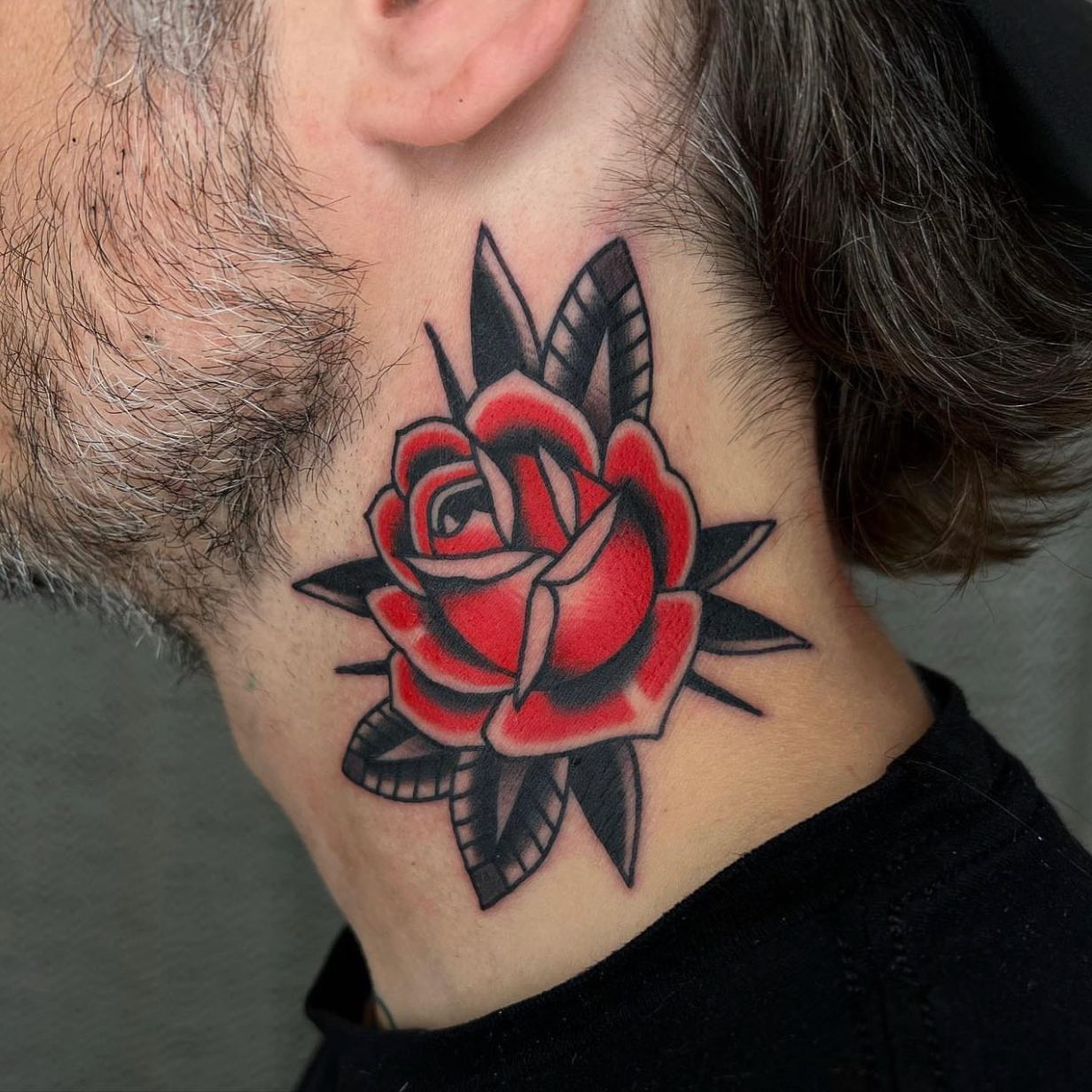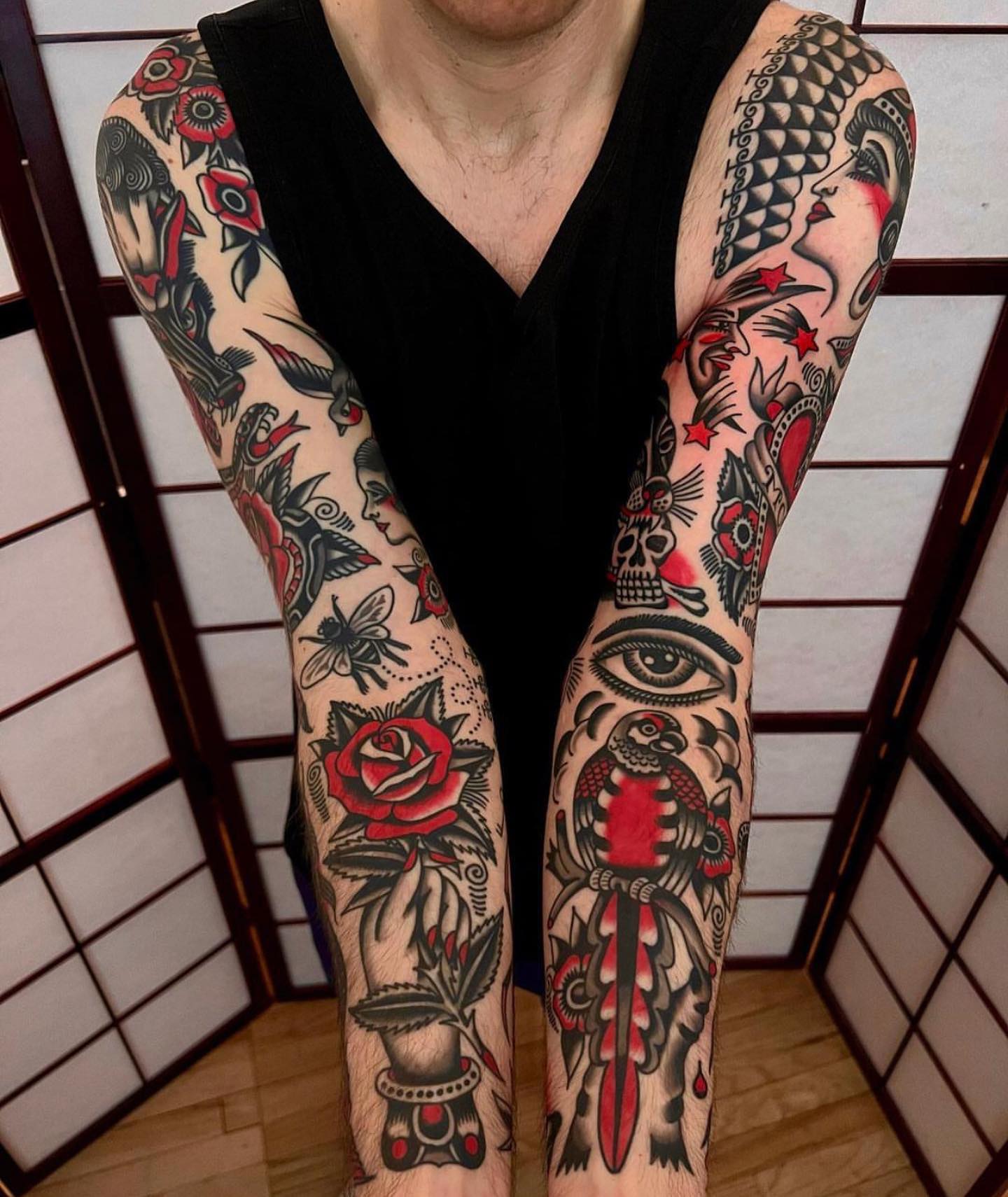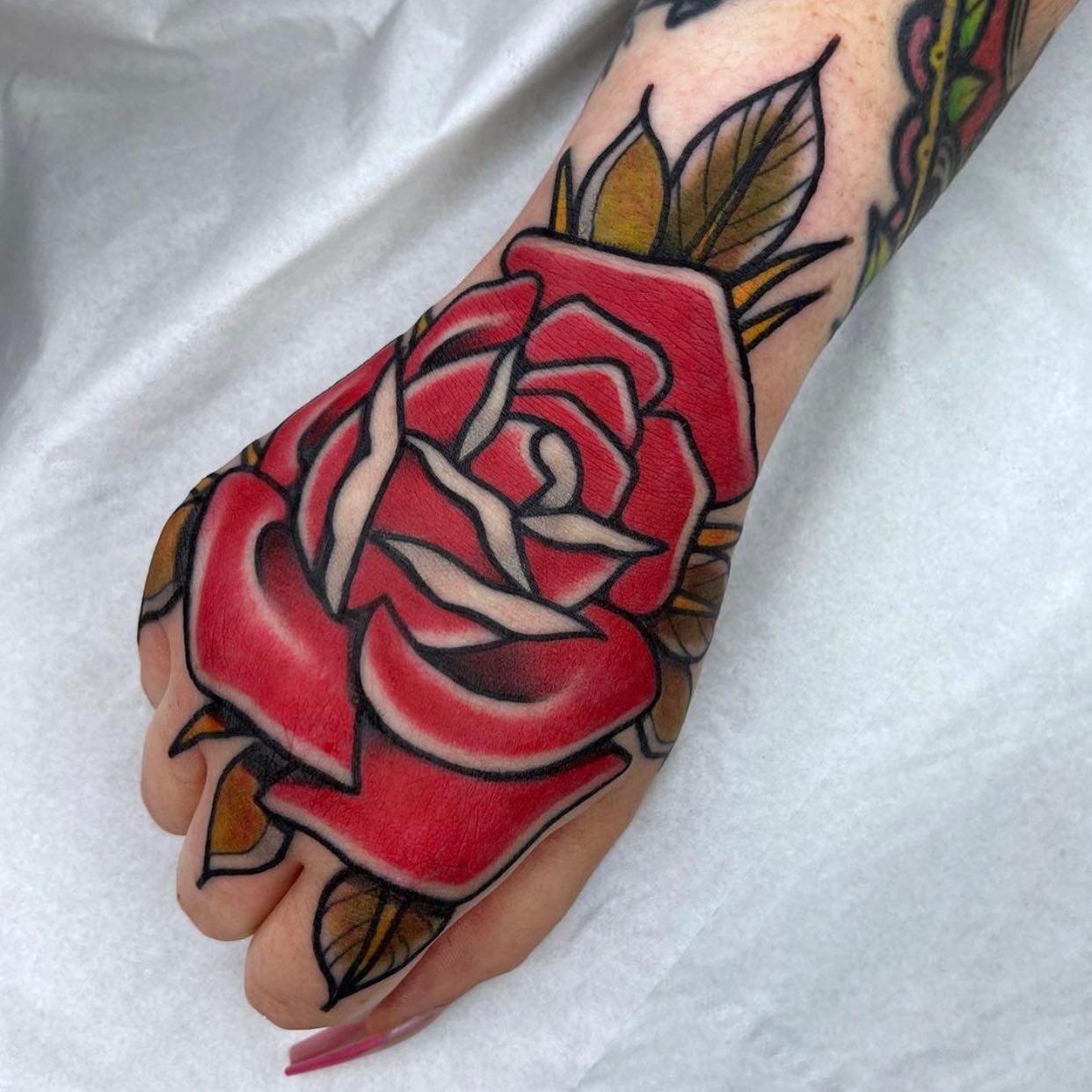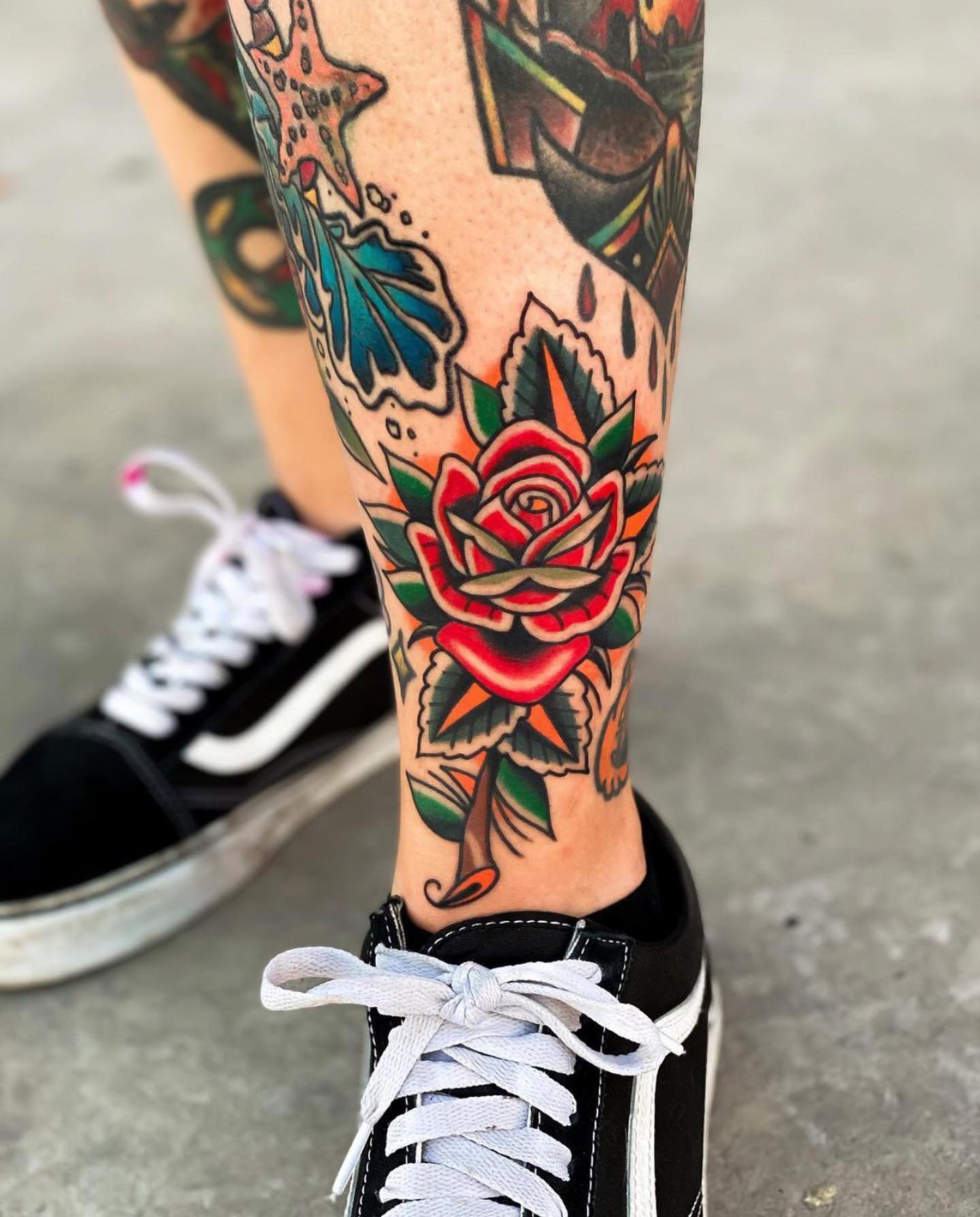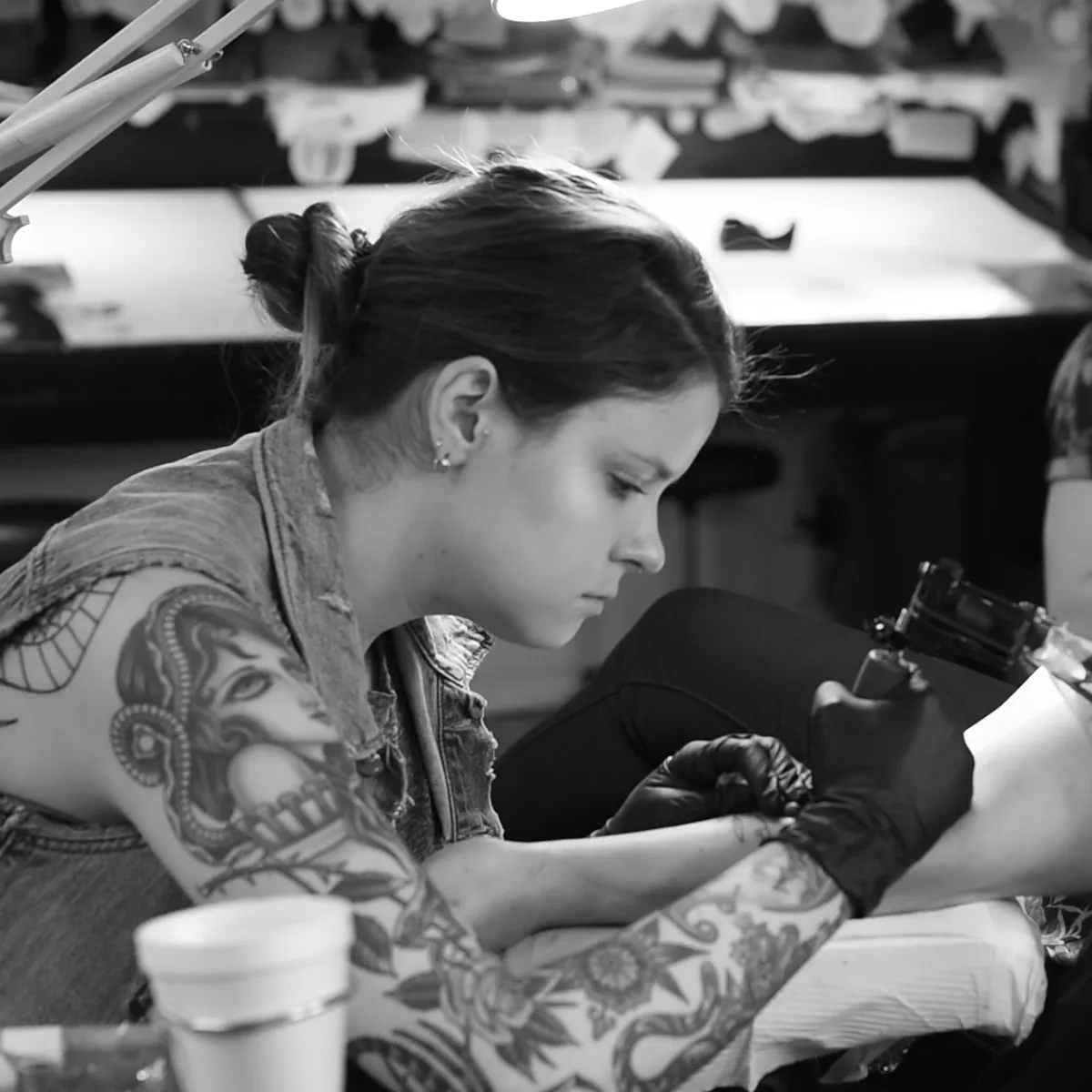American Traditional Tattoo
In the rich and diverse world of body art, the American Traditional Tattoo holds a place of reverence. It’s a style that has weathered the storm of time, trends, and societal shifts. But what makes this tattoo design so enduring? Get an in-depth look at the american traditional style, its origins, its symbolism, and why it remains a staple in modern tattoo culture. Journey with us into the history of an art form that defined an era and remains a symbol of resilience, freedom, and identity.
Key Features of the American Traditional Tattoo
The American Traditional Tattoo is recognizable by its simple designs, and bold aesthetics. But the simplicity is deceptive; behind it lies a rich tapestry of symbolism and cultural significance. Want to understand the essence of the Old School style? Let’s explore!
- Key to the style is the use of bold, clean lines and a limited color palette – typically black, red, yellow, and green.
- The thickness of the black outlines helps to ensure the longevity of the design as the tattoo ages, while the colors add a vibrant punch that makes the design pop.
- From the fierce eagle symbolizing freedom, and the nautical star guiding a sailor’s journey, to the beautiful roses denoting love – the American Tattoo employs a set of iconic symbols, each carrying its unique meaning.
- The simplicity of the images means that, as a rule, traditional tattoos do not have a deep semantic load, and their meaning can be read quite easily, for example, a sailor will choose an anchor or a mermaid, a romantic girl – a heart or a flower.
- Inscriptions, quotes, winged expressions, or names of loved ones are often used.
- Primitivism. Traditional tattoos are very simple in execution and technique of application, there is no realism and aspiration to detailing.
- Despite the presence of contradictory and gloomy images (bones, skulls, sharks, daggers, guns), the traditional tattoo style neutralizes the negative symbolism of the drawing with its brightness and positivity. This technique will suit cheerful people who look at the world and people around them with optimism.
- A medium-sized traditional image looks beautiful on the shoulder, back, or ribs.
History of American Traditional Tattoos
The Birth of a Legacy
American Traditional Tattoo, also known as Old School Tattoo or merely traditional tattoo, is a popular tattoo style that emerged during the early 20th century in the United States.
The origins of the traditional tattoo can be traced back to the 19th century among sailors. During their voyages, many sailors encountered indigenous cultures that had long-standing traditions of tattooing. They began to ink themselves with symbols reflecting their travels and experiences.
The tattooing techniques were simple, relying on hand-poking or basic machines and limited ink colors. This led to the distinctive style of bold lines and primary colors seen in traditional american tattoos. Sailor tattoos often carried meanings: anchors symbolized stability or the completion of an Atlantic crossing, while swallows represented the idea of returning or traveling long distances.
The Golden Age: The 1930s to the 1960s
This period is often considered the Golden Age of American Traditional Tattooing. Tattoo artists such as Norman “Sailor Jerry” Collins, Amund Dietzel, Bert Grimm, and Cap Coleman gained prominence during this time. They pushed the boundaries of the craft and elevated it into an art form.
Norman Collins aka Sailor Jerry, in particular, is credited with modernizing the industry by introducing sterilization practices and better-quality tattoo machines. His work in Hawaii became famous for combining the traditional American style with more intricate Asian designs.
The Stigmatization and Decline: The 1970s to the 1980s
In the 1970s and 1980s, tattooing faced a decline in popularity in the United States. As more soldiers returned home from Vietnam with tattoos, these marks became associated with criminal activity and deviant behavior. Simultaneously, the spread of diseases such as Hepatitis B led to a negative perception of tattoo parlors.
In these years, old school tattoos were also challenged by the rise of new tattoo styles like New School, Realism, and Tribal, which took advantage of technological advancements in tattooing tools and inks.
Revival and Modern Adaptation: The 1990s to Present
In the 1990s, tattooing started to regain social acceptance. Health regulations were established to ensure safe tattooing practices, dispelling some of the negative stigmas. Traditional style saw a resurgence in popularity, with artists like Ed Hardy and Mike Malone leading the way.
This style has evolved and adapted to the times, yet it remains rooted in its classic symbols and elements. Contemporary artists have put their spin on traditional designs, introducing more intricate shading, colors, and detail while maintaining the iconic thick lines and solid colors.
Today, old-school tattoo is appreciated for its simplicity, boldness, and historical significance. It remains a popular choice among tattoo enthusiasts, serving as a timeless tribute to the history and tradition of tattooing in America.
Basic elements of the old-school tattoo
Old-school tattoos include such popular elements of designs:
- skulls (and often stylized with a subject);
- anchors,
- flowers (mostly roses),
- stars,
- sails,
- ribbons with inscriptions,
- crosses with religious overtones.
American Traditional Tattoo Designs
Tiger tattoo
Skull tattoo
Panther tattoo
Snake tattoo
Eagle tattoo
Ship
Rose
American Traditional Tattoo Artists
Meanings
Each old-school design of the tattoo carries a distinct significance. The heart tattoo, often emblazoned with a simple banner and the word ‘mom,’ became a symbol of love and familial loyalty. The traditional eagle, a common tattoo, embodies freedom and might, while the ship tattoo represents a sailor’s adventure and voyage into the unknown.
The traditional anchor tattoo, traditional dagger tattoo, and traditional compass tattoo are other classics from the sailor’s flash designs, each carrying their unique symbolic narratives. The anchor stands for stability and groundedness, while the dagger often signifies bravery and protection. The compass represents guidance and a constant course in the tumultuous sea of life.
One of the best American traditional tattoos is the American traditional rose. This design is favored for its elegant simplicity and deep meaning, often symbolizing love, beauty, or a delicate balance between joy and pain. Animal motifs, such as the American traditional eagle, and traditional panther, and even less common ones like the American traditional owl, are also popular. These often symbolize courage, stealth, wisdom, or independence.
With a resurgence in popularity, tattoo shops have seen an influx of customers seeking both traditional tattoo flash and custom tattoo work in the American Traditional style. Tattoo sleeves, filled with an amalgamation of these iconic designs, provide an expansive canvas to express personal narratives and milestones.
Understanding this style guide to American Traditional tattoos offers insight into the rich history of tattooing that influenced this distinctive art style. This style was largely popularized last time, transforming the old-school style of traditional tattooing, evolving it from a niche sailor’s tradition into a staple of the Western traditional tattoo world.
How Will Old School Tattoos Age?
Old schools are known for their longevity and their ability to age well. This is due to several reasons: The heavy, bold lines and simple shapes preserve the design over time. Fine lines can blur and fade more easily, but the strong outlines of traditional tattoos maintain their integrity even as the skin ages and changes. A limited and bold color palette, primarily consisting of black, red, green, and yellow is less likely to fade than some of the lighter or pastel shades used in other tattoo styles. Moreover, since these tattoos often employ solid color fills, even some fading over time won’t drastically impact the design’s visibility or legibility. Also, the simplicity and straightforwardness of tattoo designs ensure that they remain recognizable over time.
Traditional VS Neotraditional Tattoo – What’s The Difference?
Traditional and Neotraditional tattoos have some similarities, given that Neotraditional was developed as an evolution of the Traditional style. However, there are several key differences that set these two styles apart.
-
Design and Symbolism
- Traditional tattoos usually have bold lines and bright, limited color palettes. They feature iconic designs like anchors, skulls, roses, swallows, hearts, and nautical symbols, among others. These designs are rooted in the tattoo tradition of sailors, bikers, and other subcultures.
- Neotraditional tattoos, on the other hand, expand on this design vocabulary to include a wider range of motifs and symbols. The themes can vary greatly, from animals and nature to mythical creatures and everything in between. The imagery often features a modernized and creative reinterpretation of traditional symbols.
-
Color and Detail
- Traditional tattoos tend to stick with a limited color palette, often just black, red, green, and yellow. They have a stark, simple, and bold style, which makes them visually striking.
- Neotraditional tattoos use a wider color palette, featuring more shades and gradients. These tattoos are often more detailed, with intricate shading and a depth that gives a three-dimensional look. The lines in Neotraditional tattoos can vary in thickness and shape, allowing for more complex designs.
-
Techniques and Innovation
- Traditional tattoos stick to tried and tested tattooing methods. They’re typically known for their simplicity and longevity, as the bold designs and colors resist fading over time.
- Neotraditional tattoos, however, take advantage of advancements in tattoo technology and techniques. They often include more intricate detail work, fine lines, and a broader range of effects to create a unique and creative piece of art.
In conclusion, while both styles share common roots, traditional tattoos are more about simplicity and time-tested designs, whereas Neotraditional tattoos are about expanding the limits of the art form, incorporating more detail, more color, and a wider range of design possibilities.
Traditional American VS Japanese Tattoo – What’s The Difference?
In addition to the American and European versions, there is also a traditional Japanese tattoo. Unlike its Western counterparts, this style of tattoo is characterized by a deep meaning of the image. Each element and color plays a certain role.
For example, the squirrel represents abundance and prosperity, the fish tattoo means leadership, the rat – fertility, and the lion – power, and protection. In general, the composition can indicate the status of a person in society, serve as a sign of eternal love or be a stimulus to the realization of dreams. It is noteworthy that the sketch for a traditional Japanese tattoo can not be small. Usually, the work occupies half of the body, and sometimes it is made in the form of an authentic costume.
Final Words
In conclusion, the timeless appeal of American Traditional tattoos and their rich symbolism continues to inspire people to get tattoos that not only adorn their bodies but also narrate their stories. The bold, striking designs, often sourced from the classic “tattoo flash” sheets found in a traditional tattoo shop, are testaments to personal journeys, beliefs, and passions.
These tattoos have carved a unique niche in the global tattoo community, bridging generations and cultures through a shared appreciation for their robust simplicity and vivid coloration. Whether you find yourself in a tattoo shop for the first time or you’re an avid tattoo enthusiast, the iconic designs of American Traditional tattoos offer a compelling choice. This enduring style, steeped in history and symbolism, continues to connect us to our past while enabling us to express our individuality in a visually striking manner.

